|
"Seven days in Lhasa",
Tibet 27th September to 3rd October 2010
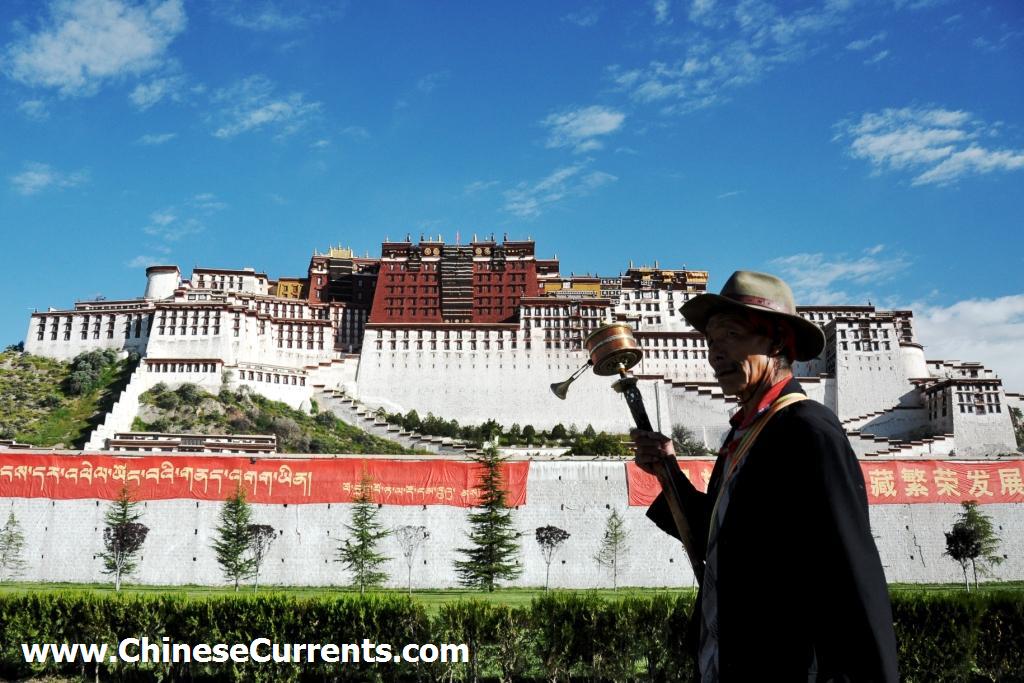
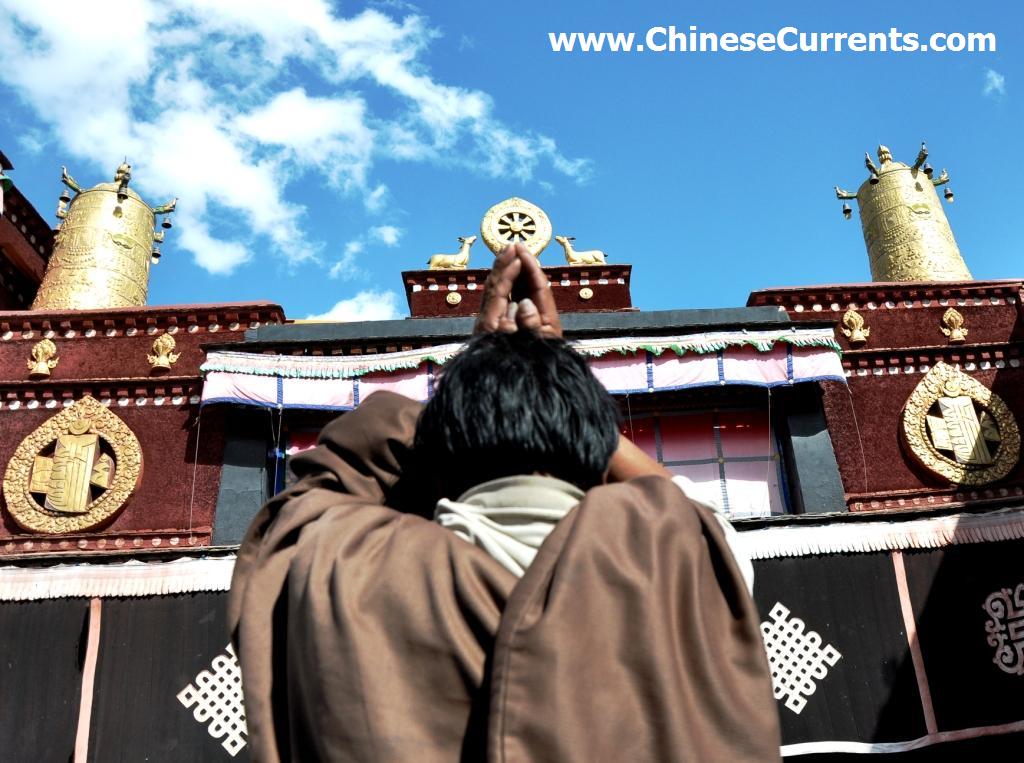
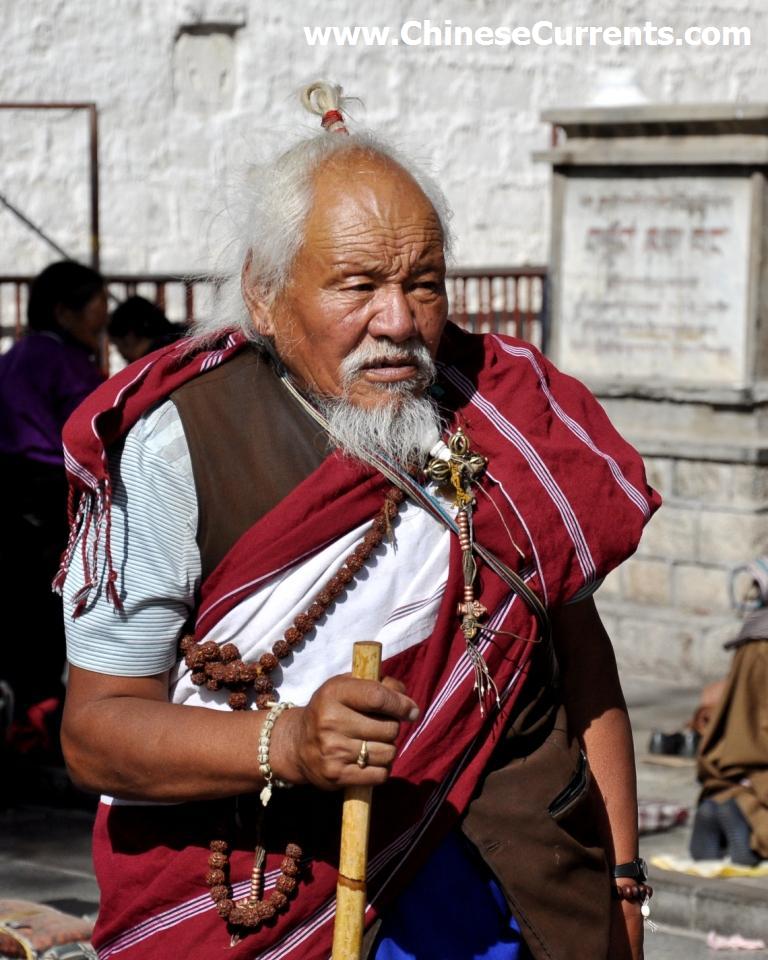

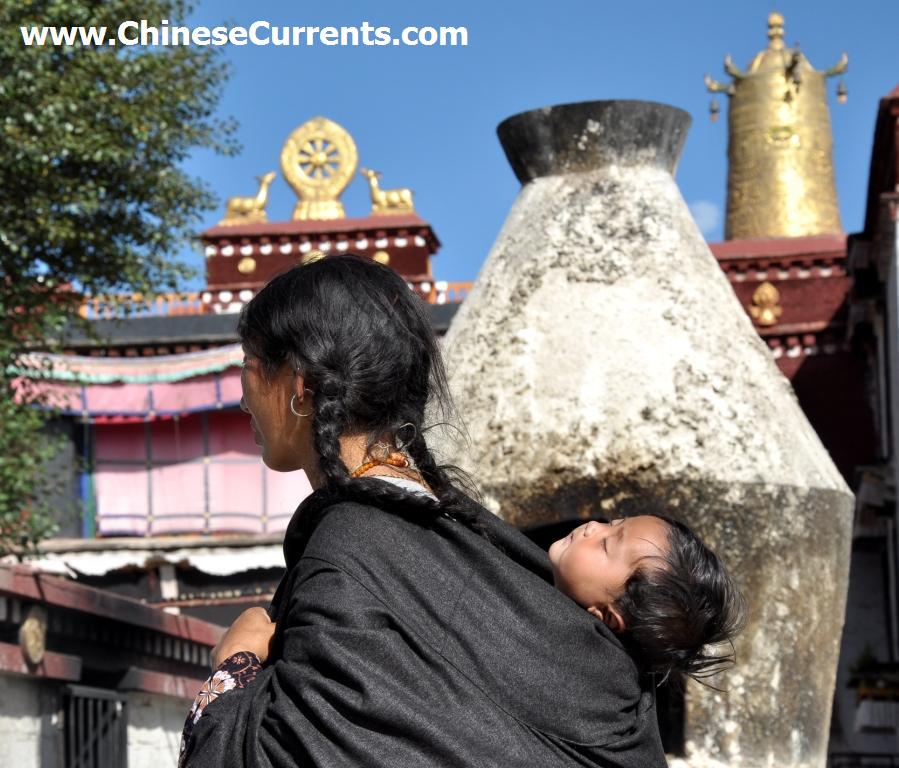
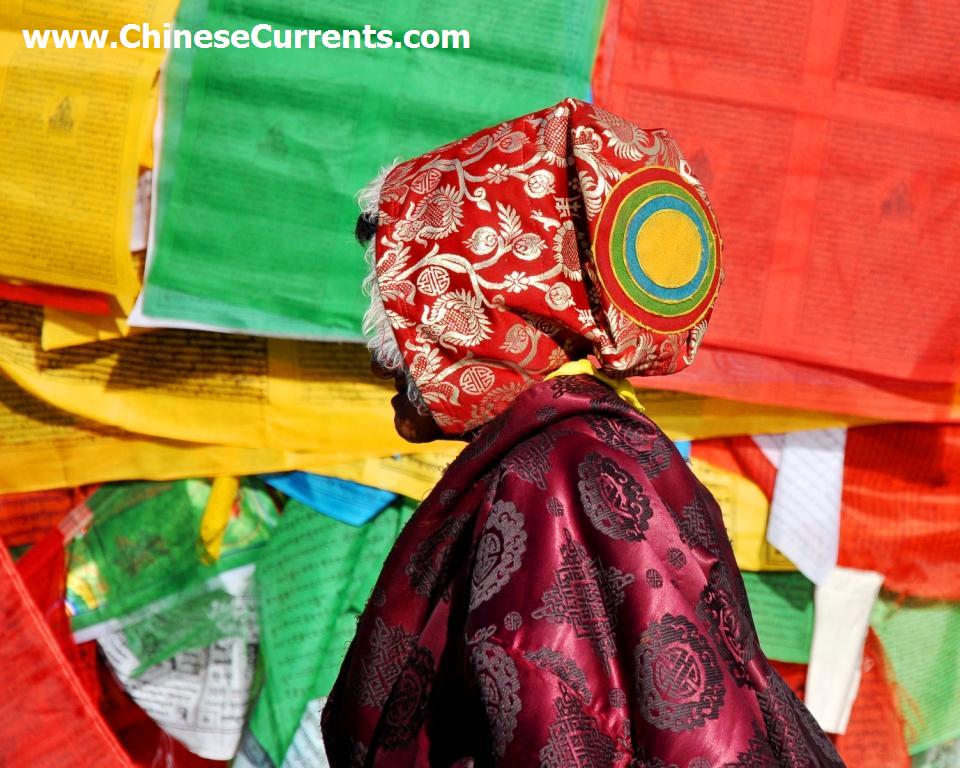
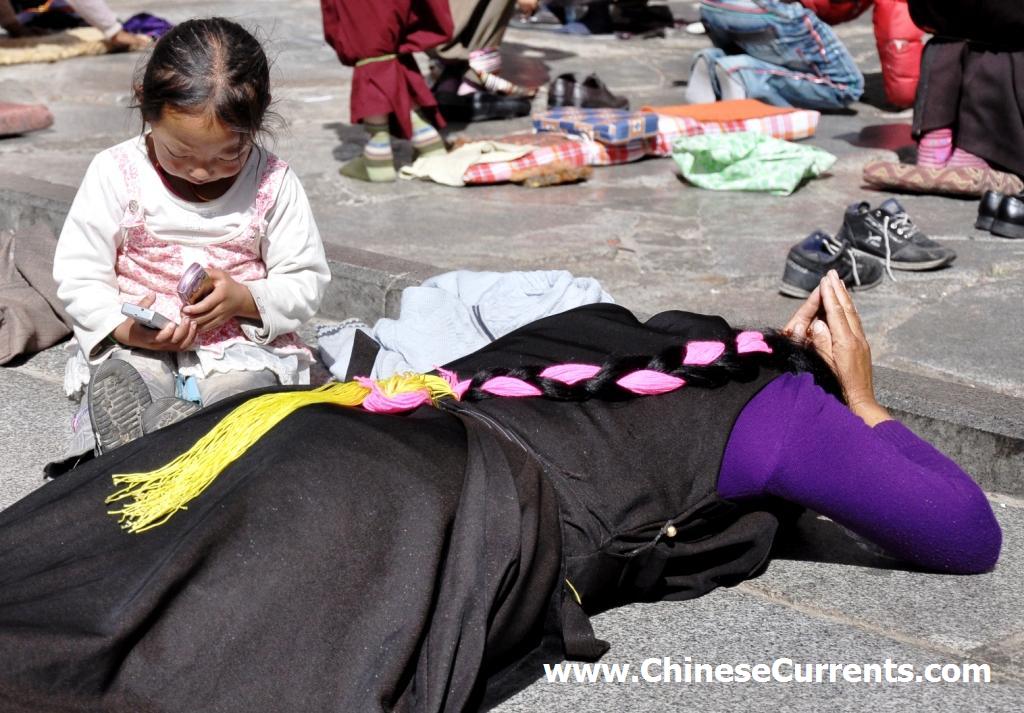

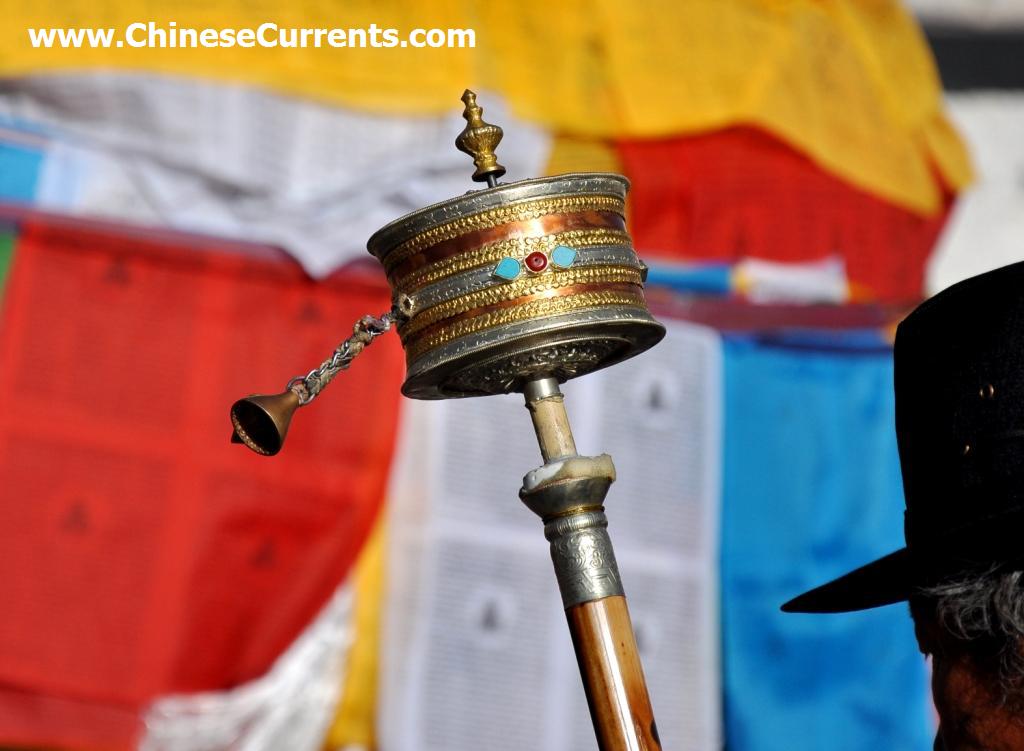

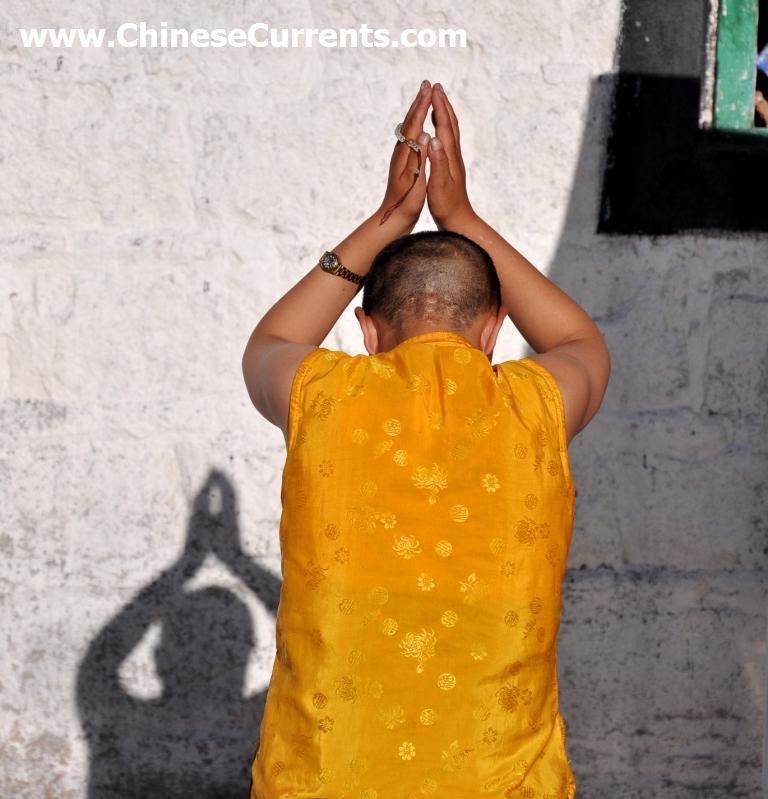
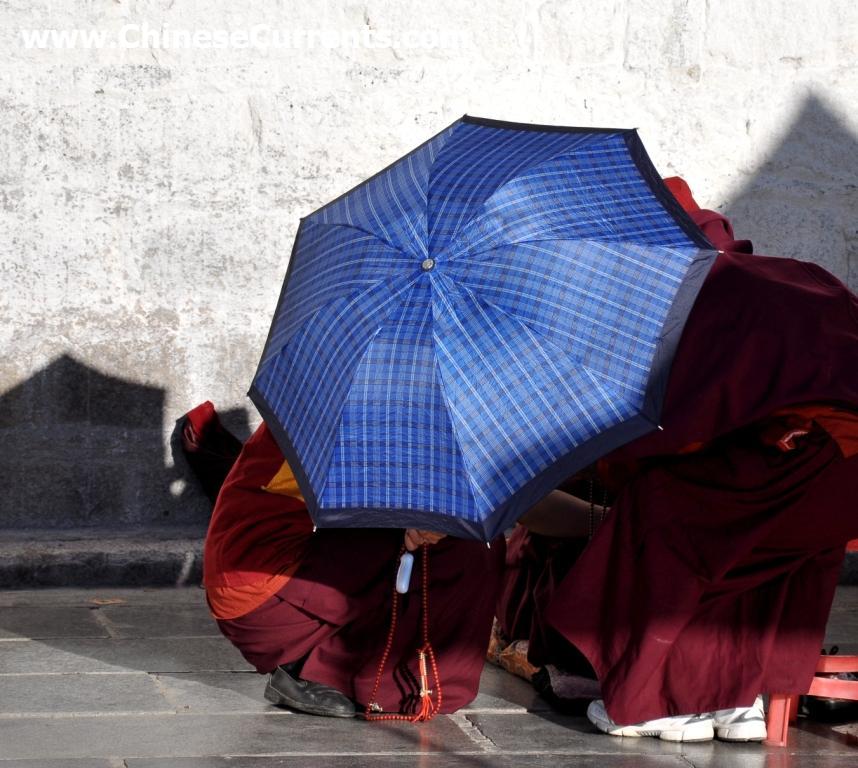
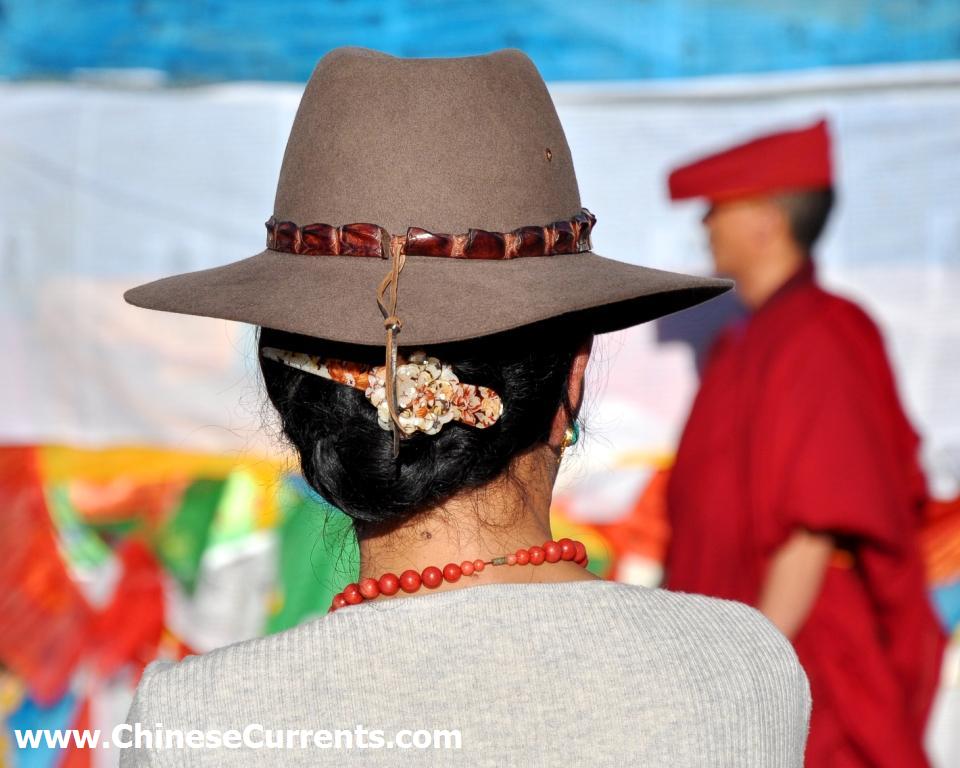
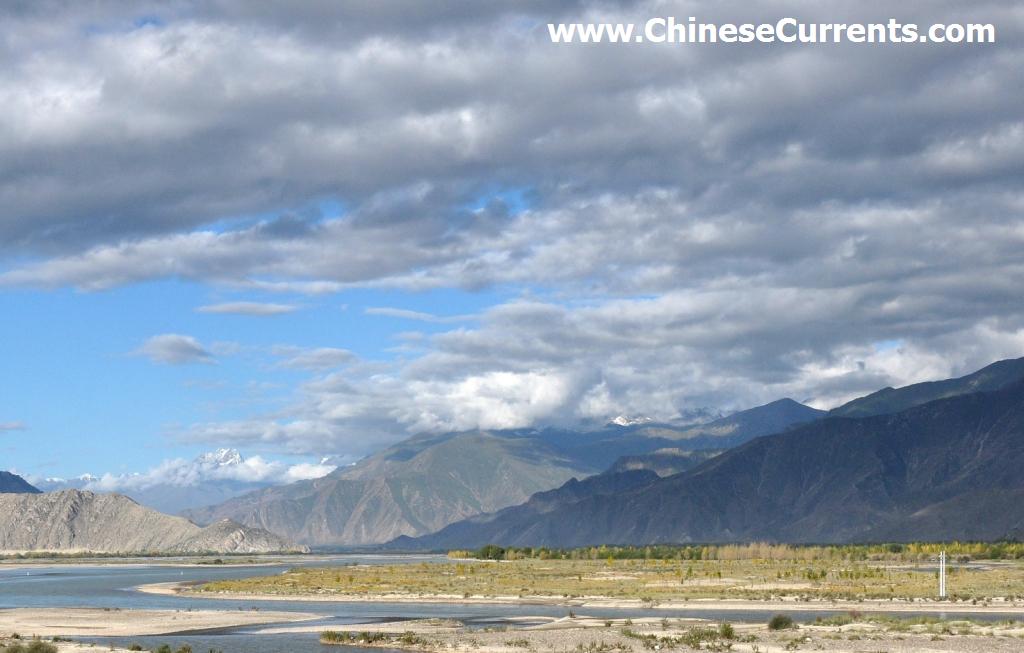


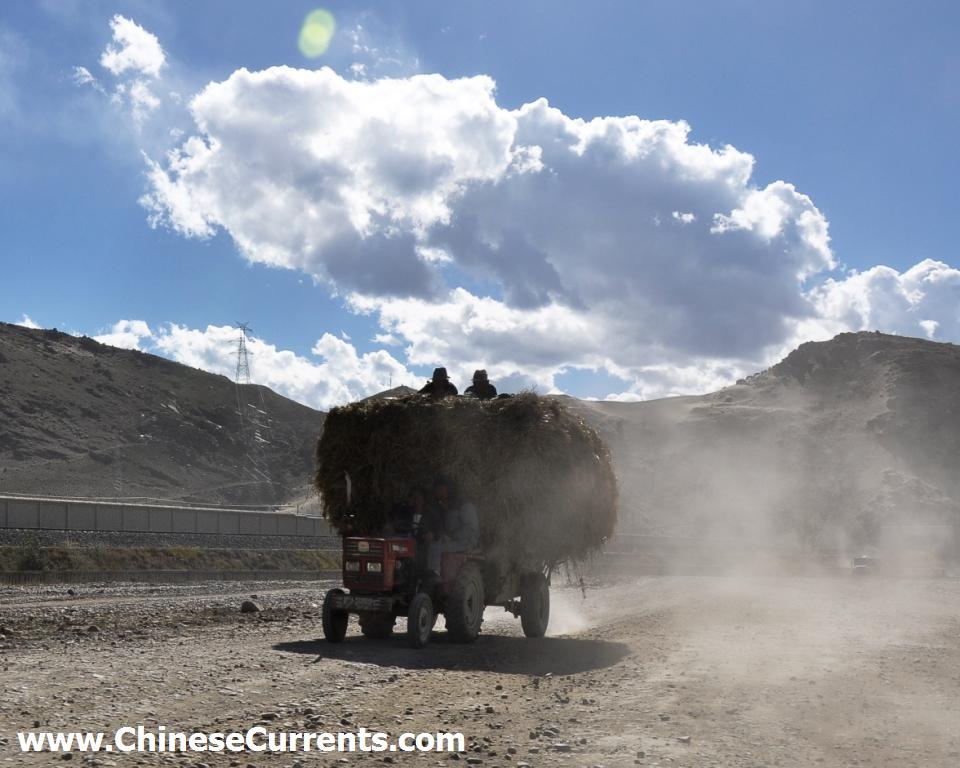

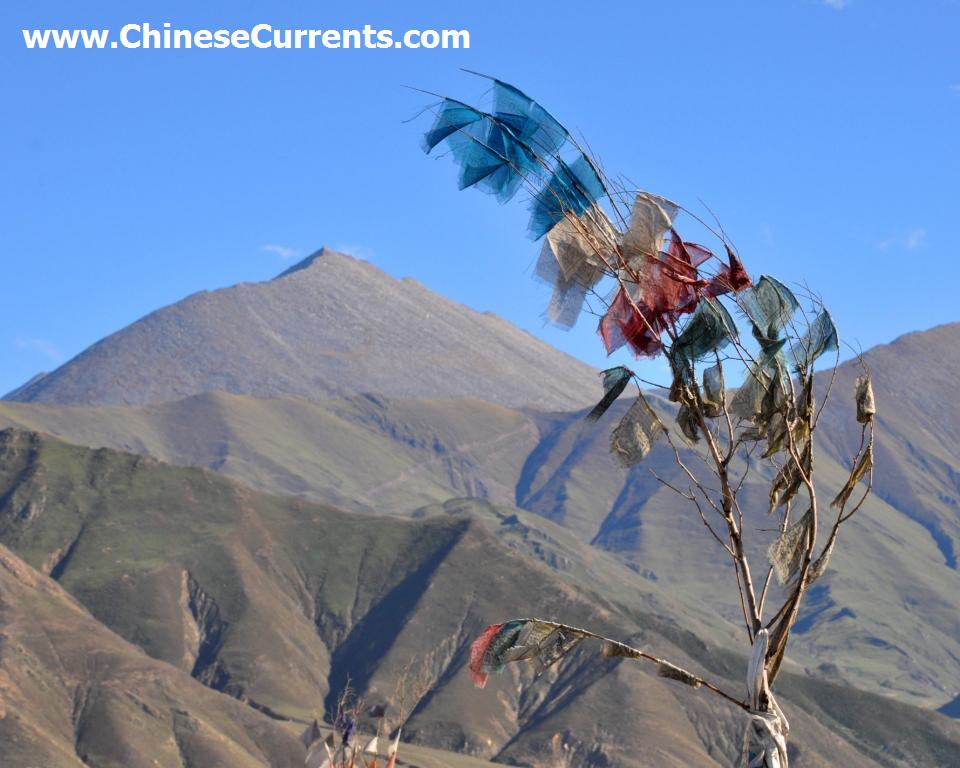
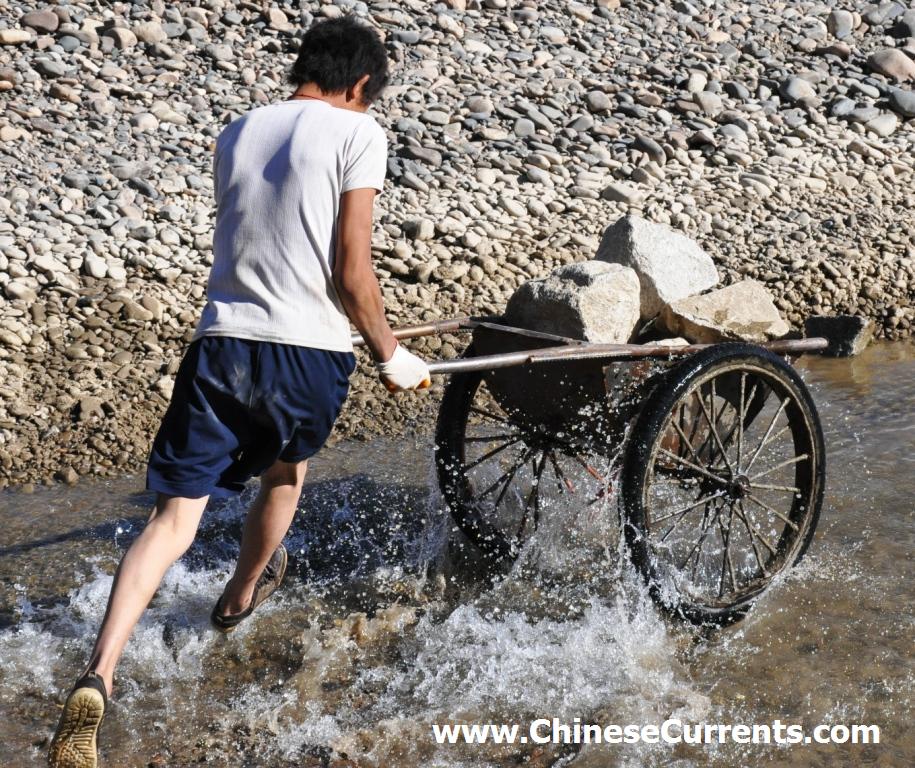
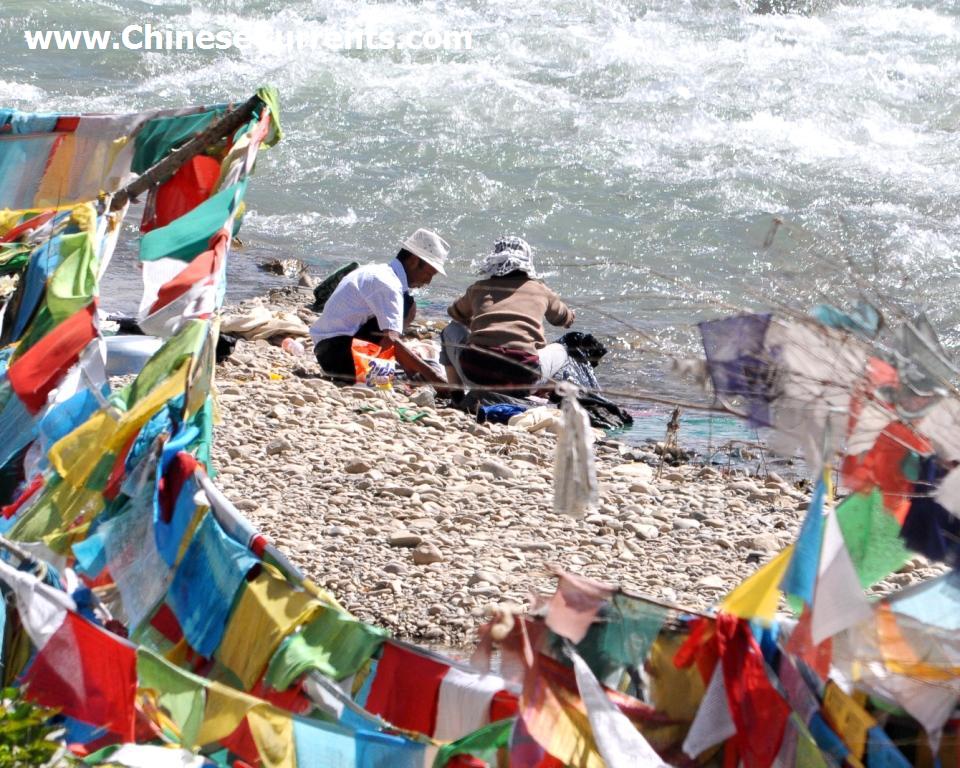
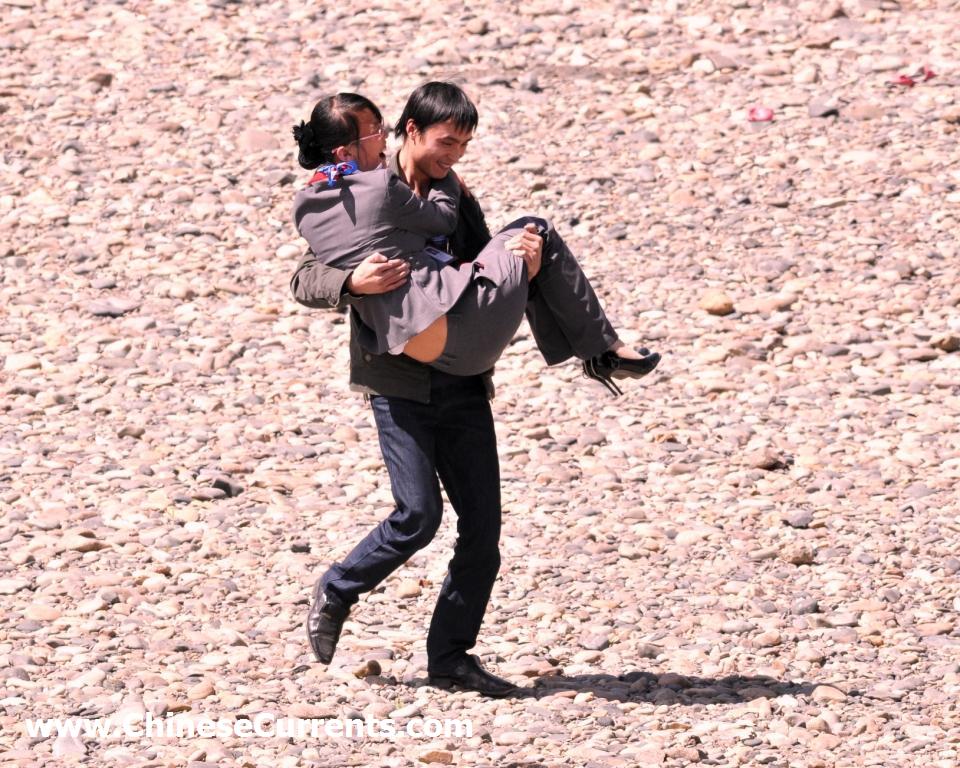
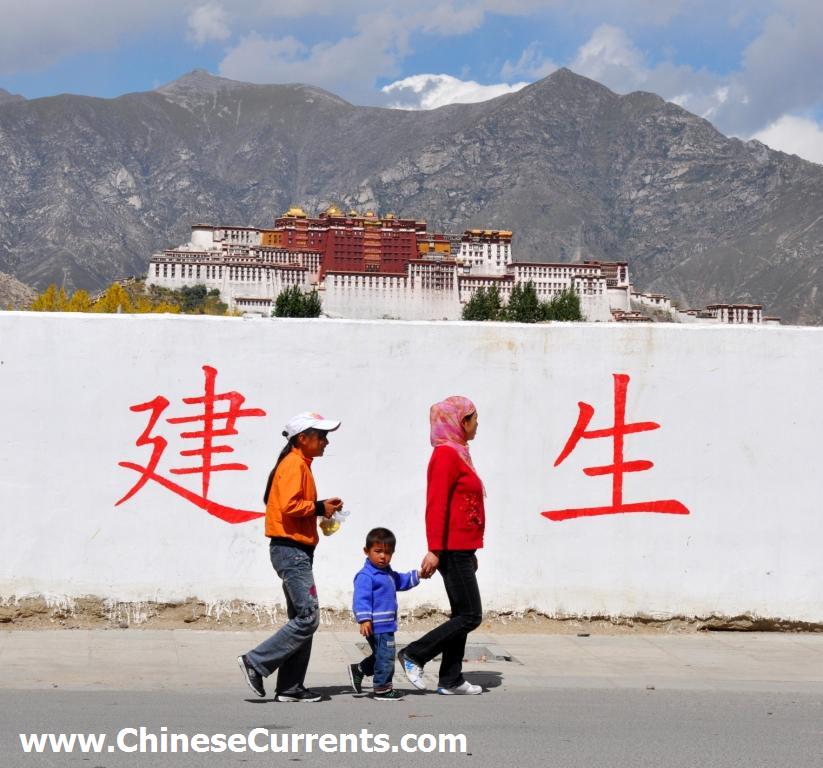
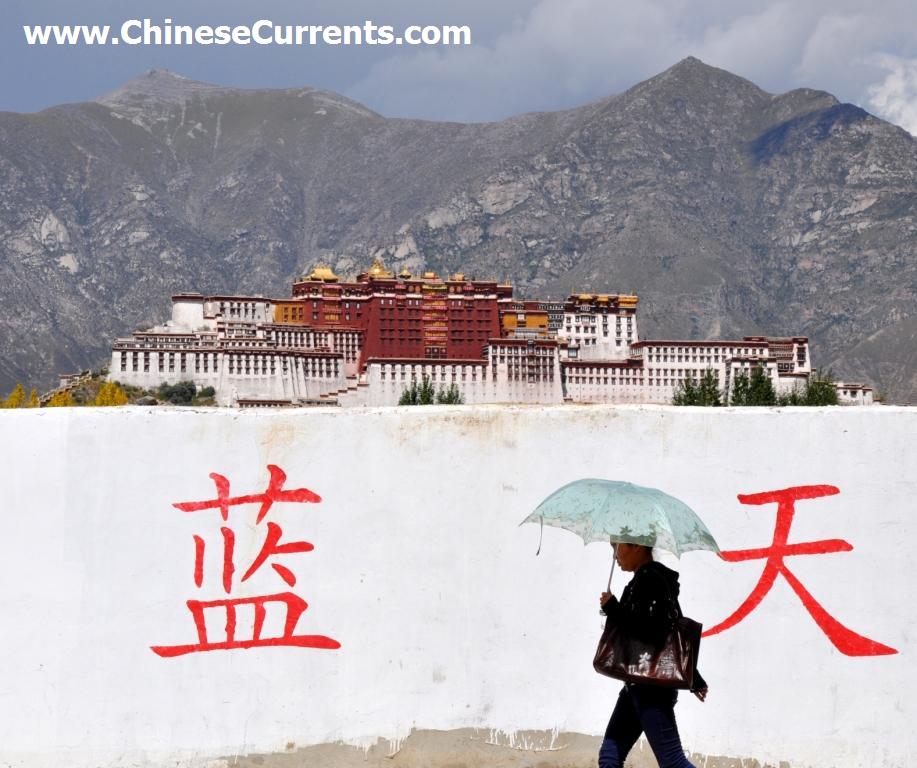
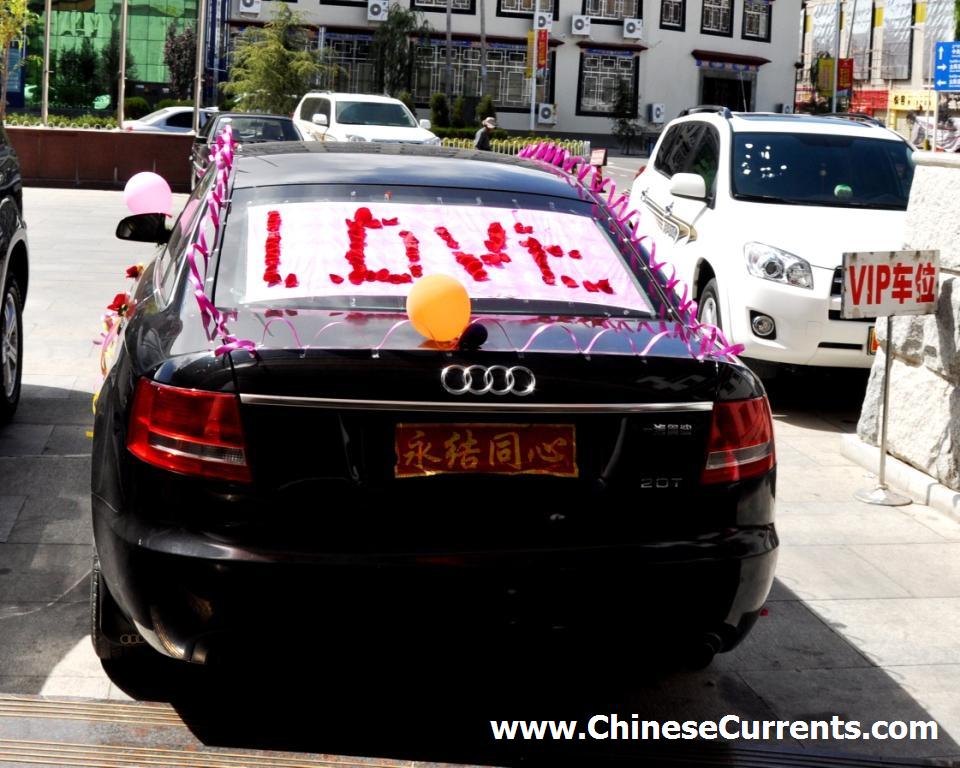
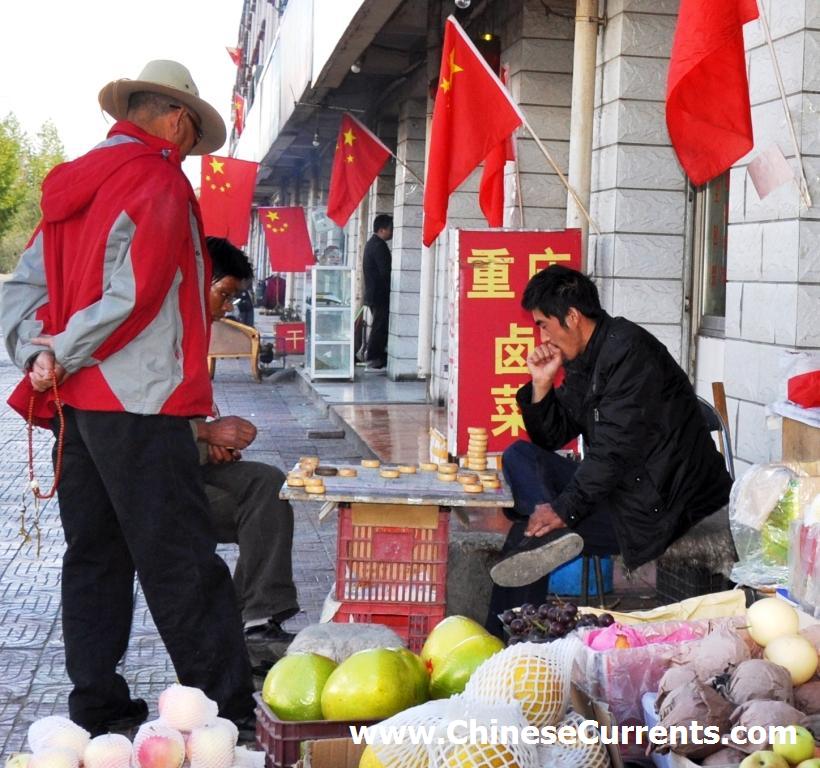
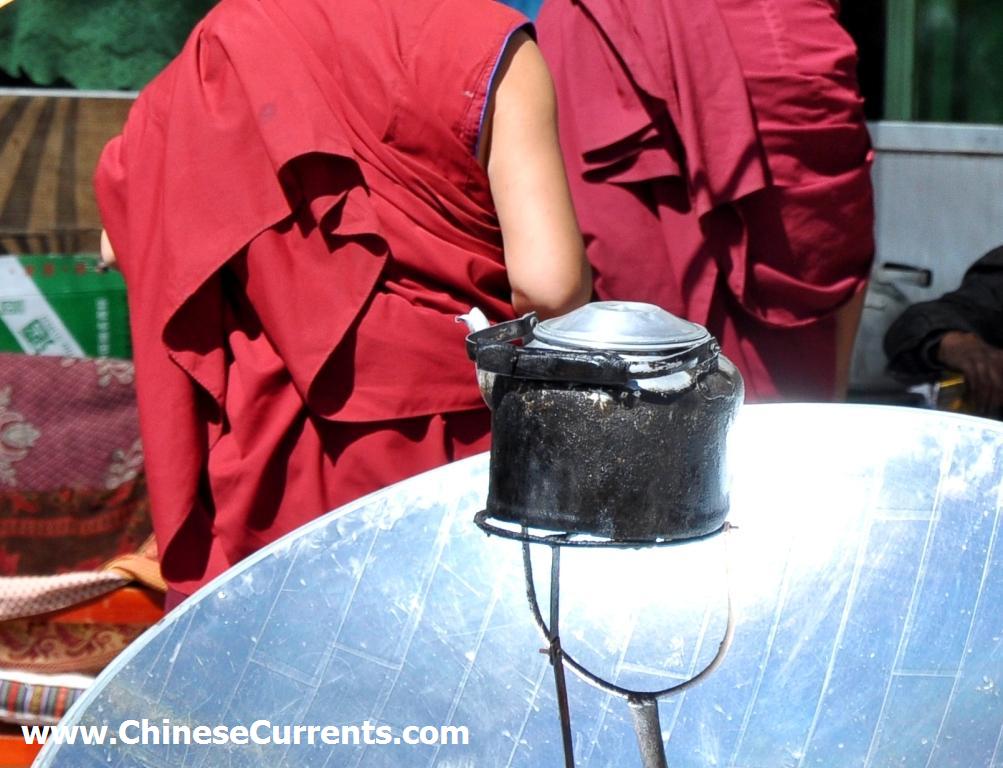
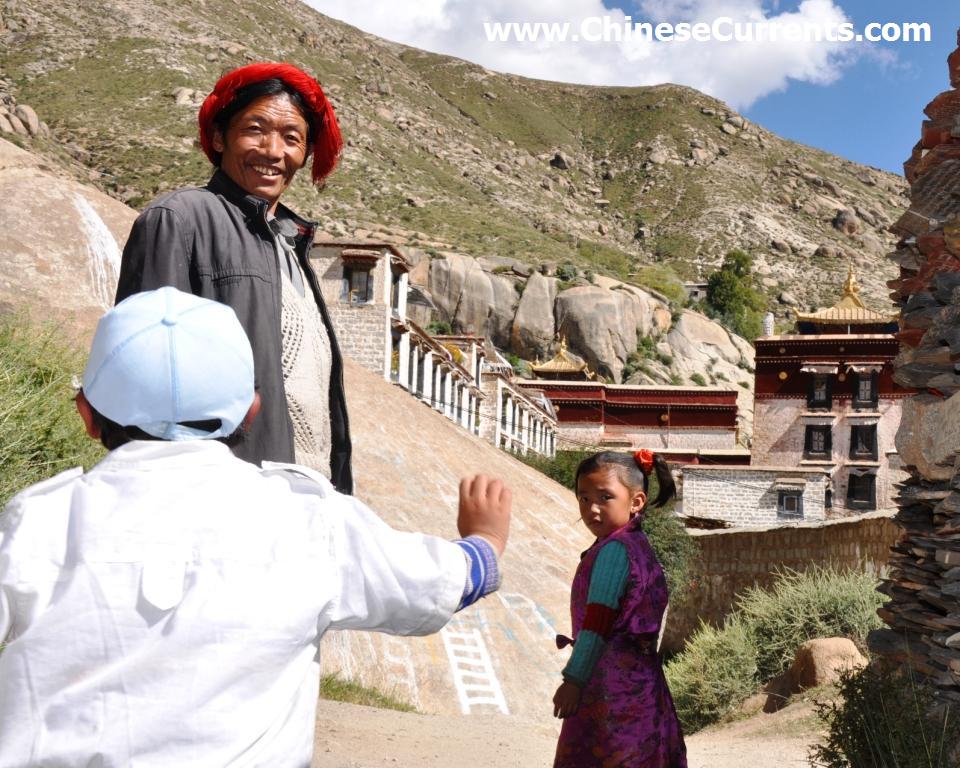
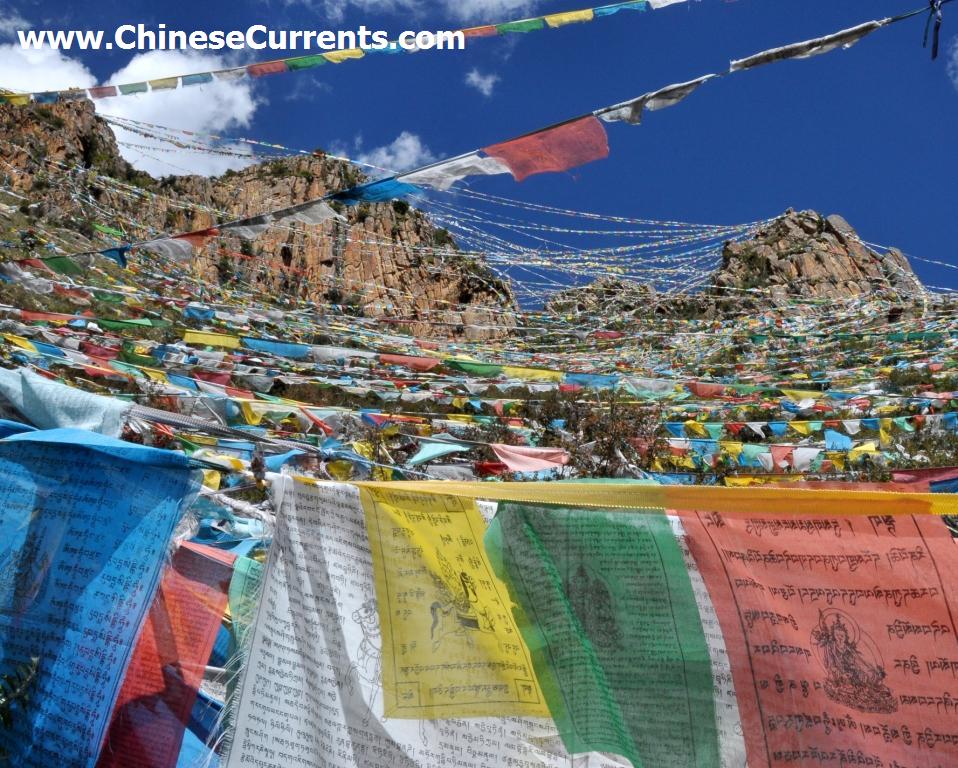


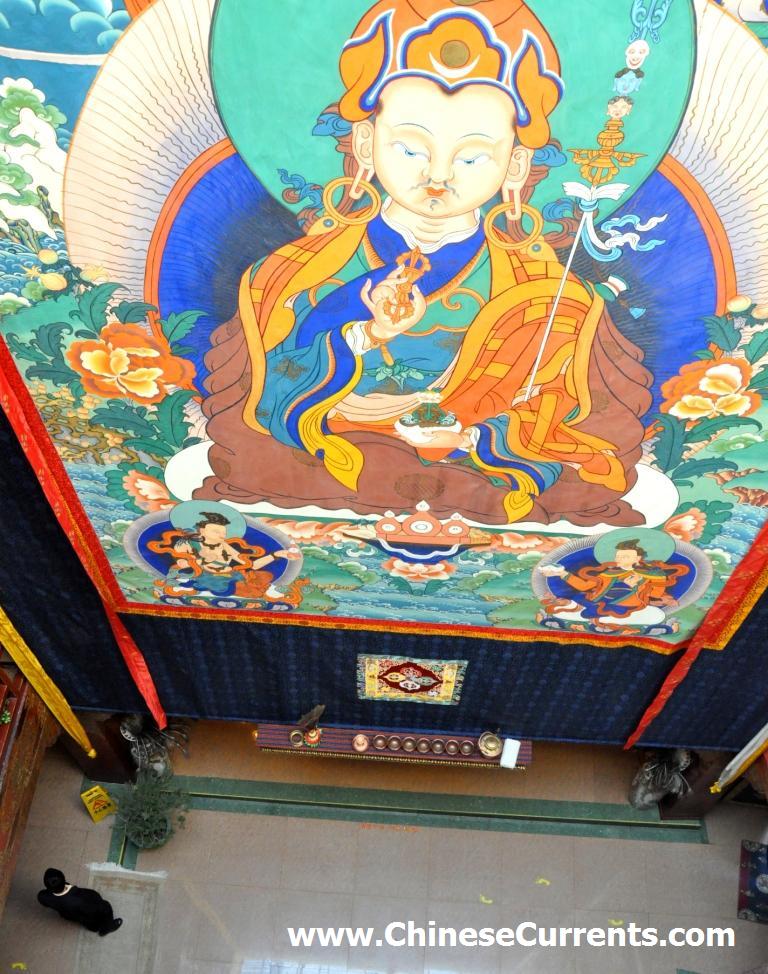

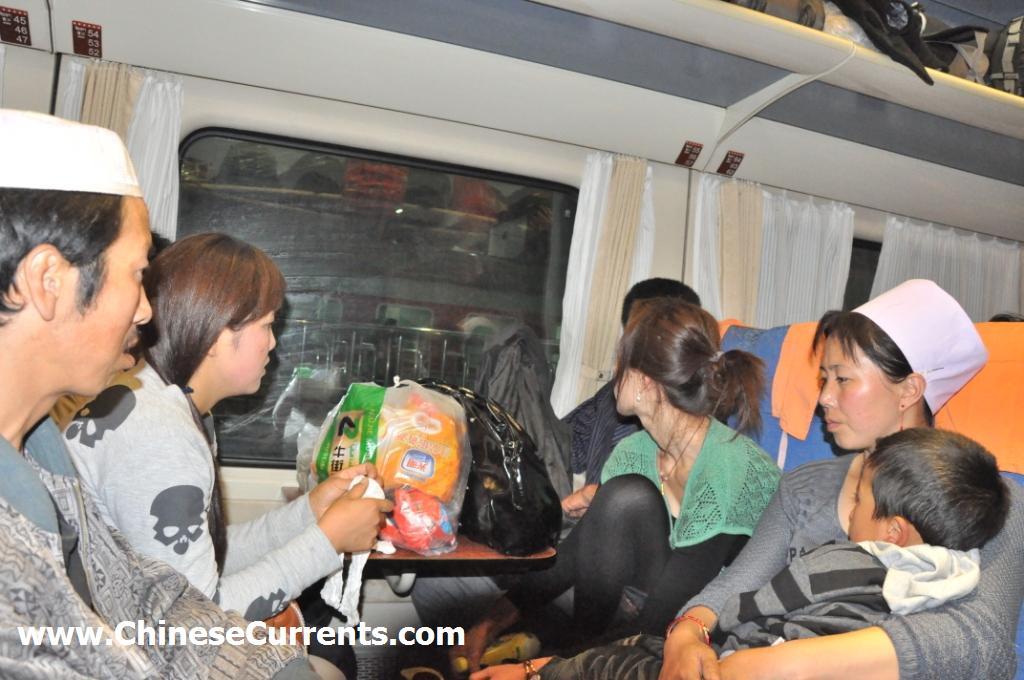
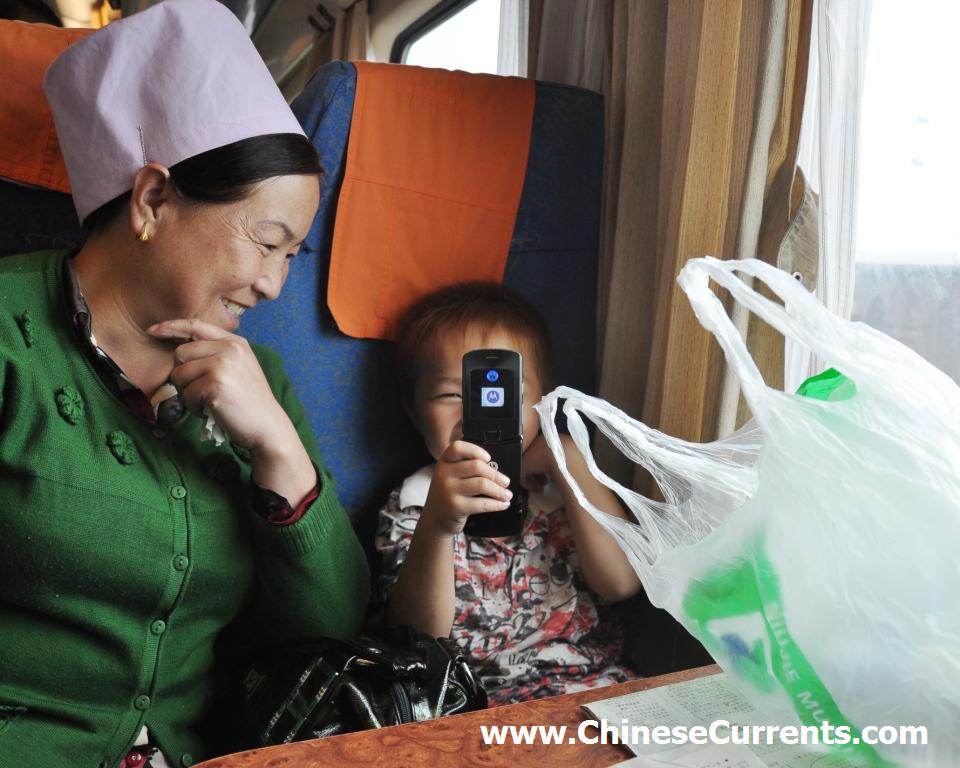
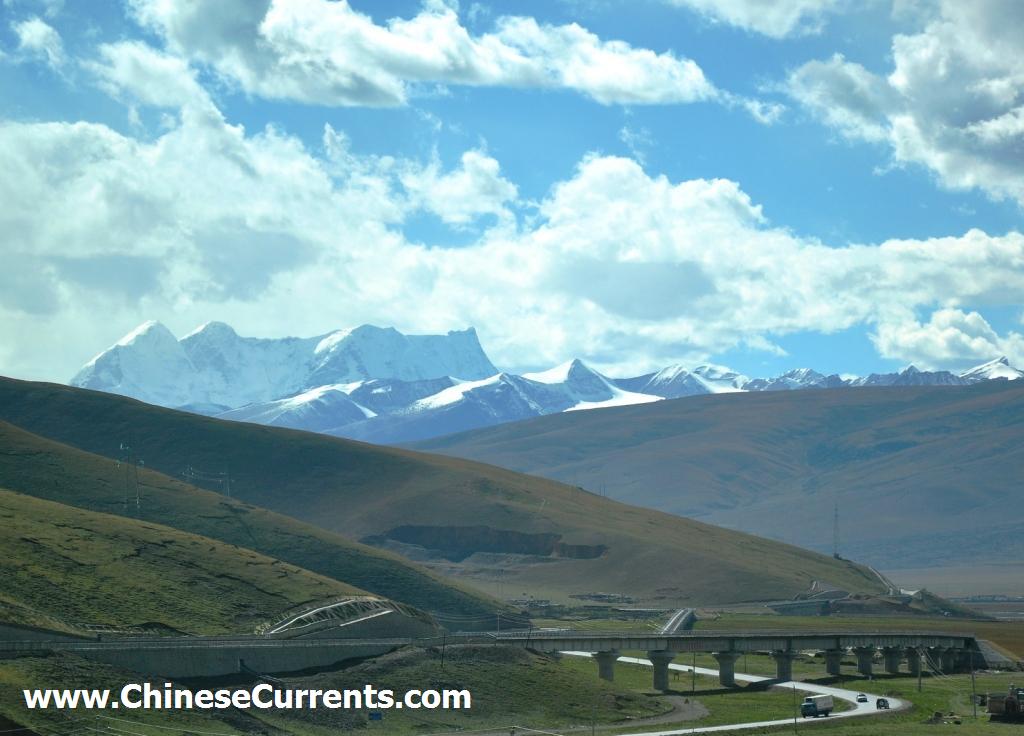
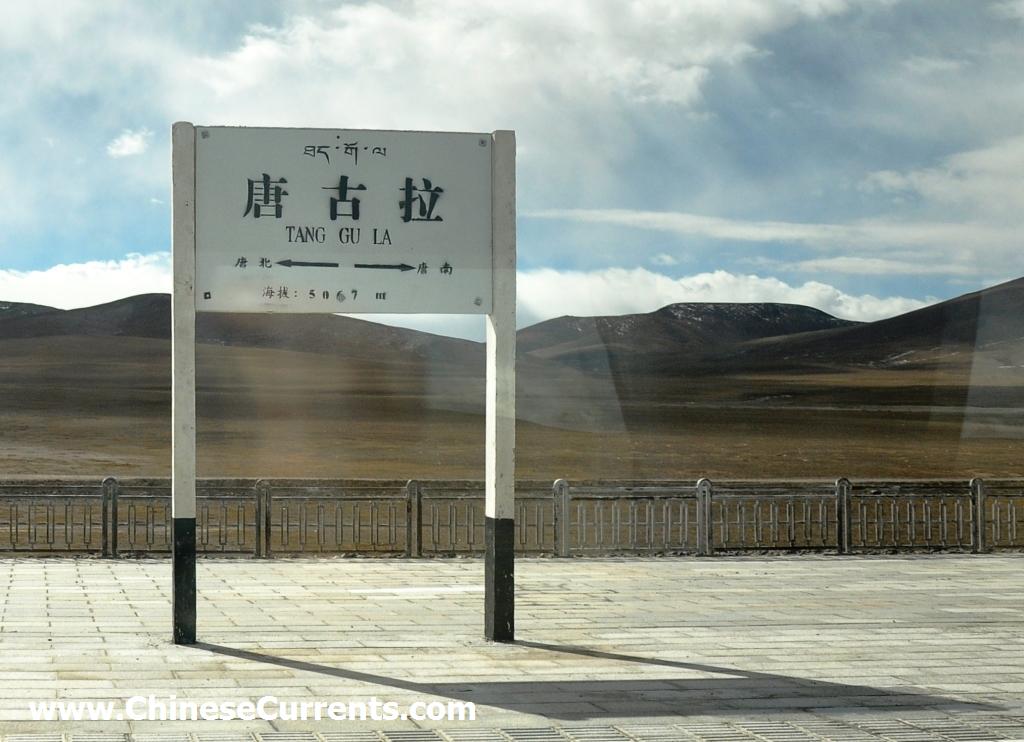

"Lenovo headquarters",
Zhongguancun, Beijing Wednesday, 15th September 2010
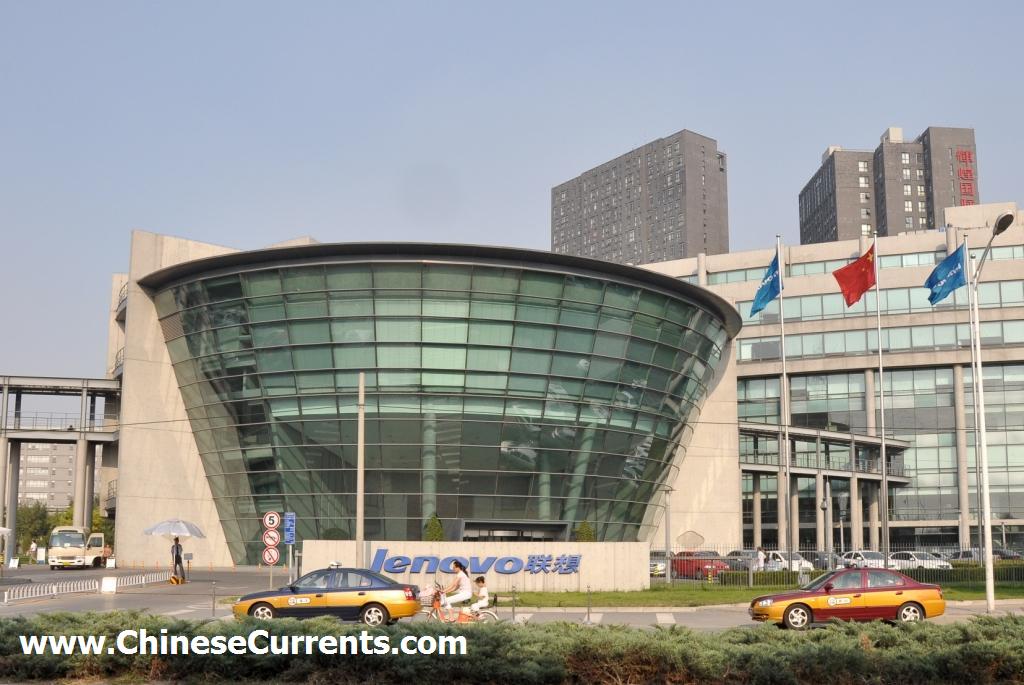
"Shopping break",
Ikea, Chaoyang, Beijing Saturday, 11th September 2010
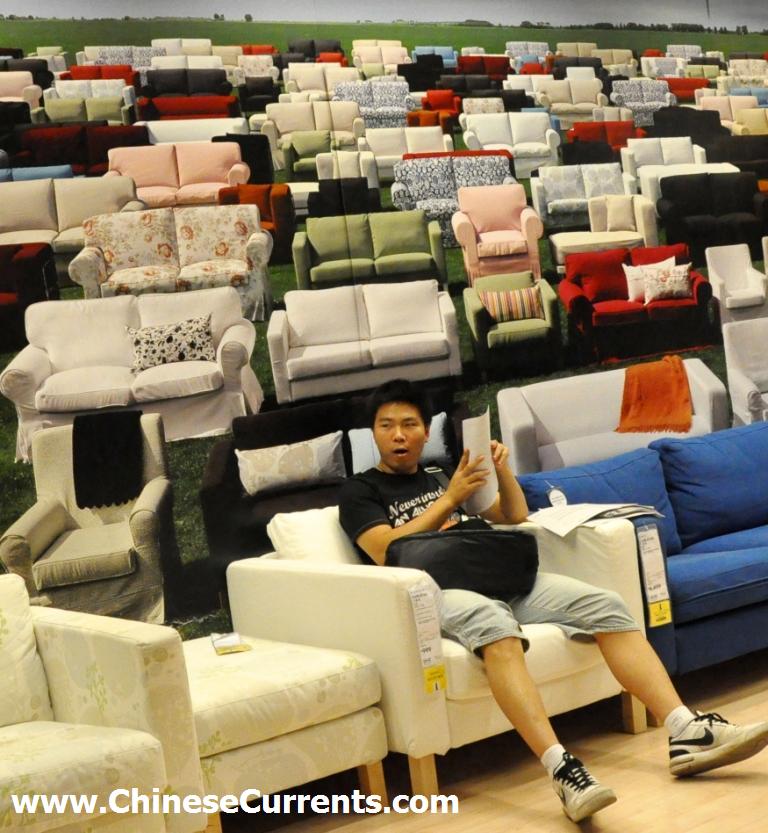
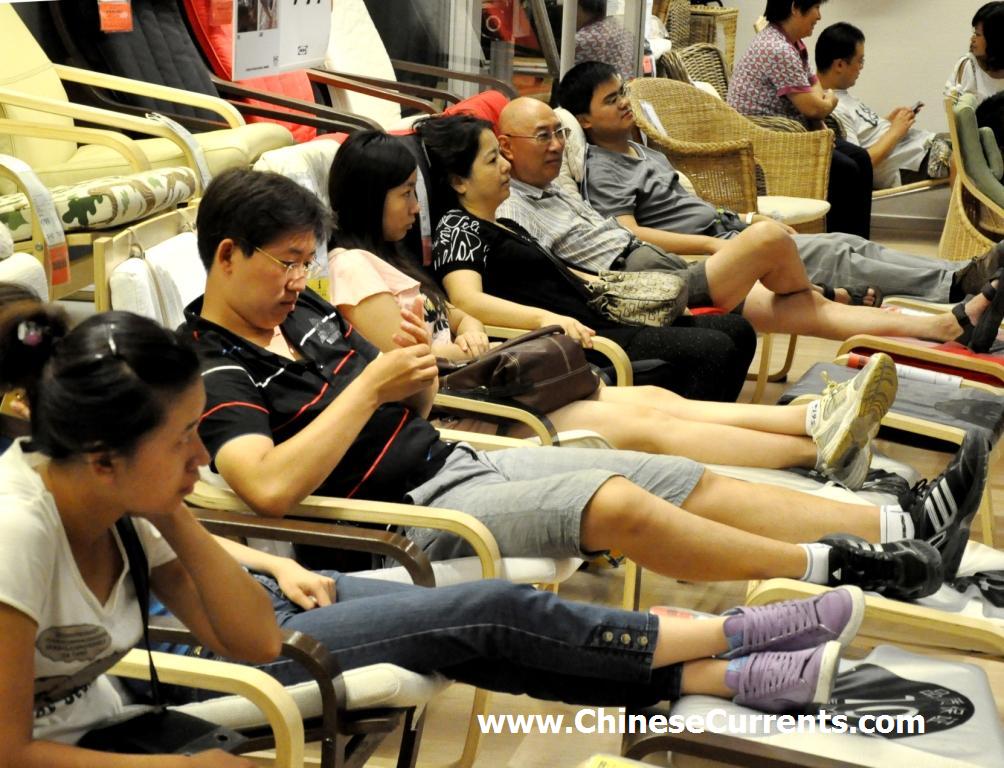
"Symbolism", Beijing Friday, 10th September 2010
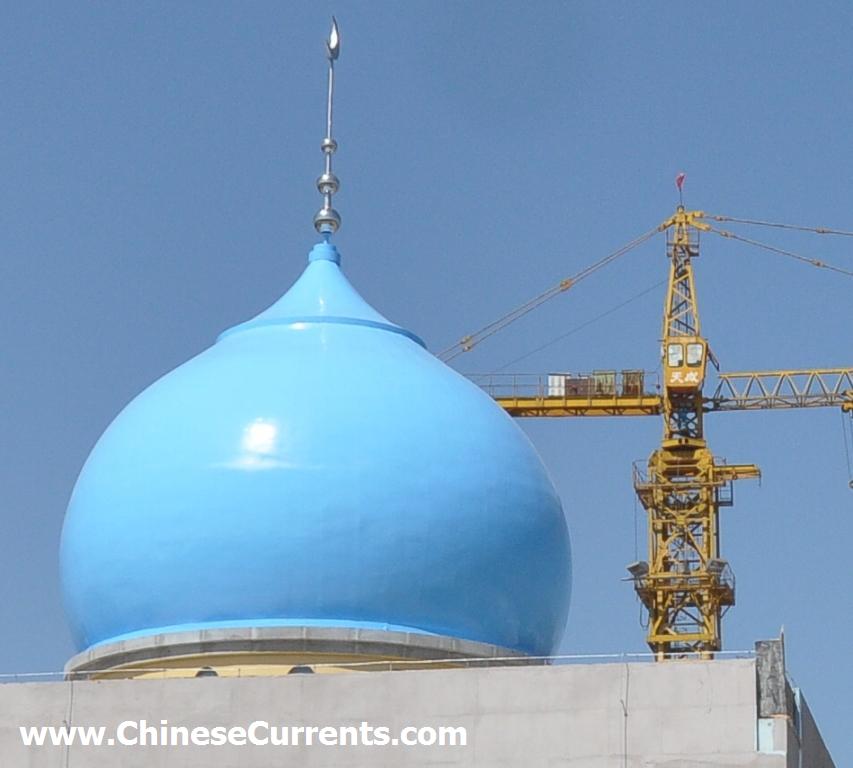
"Out and about",
Chaoyang, Beijing Wednesday, 8th September 2010
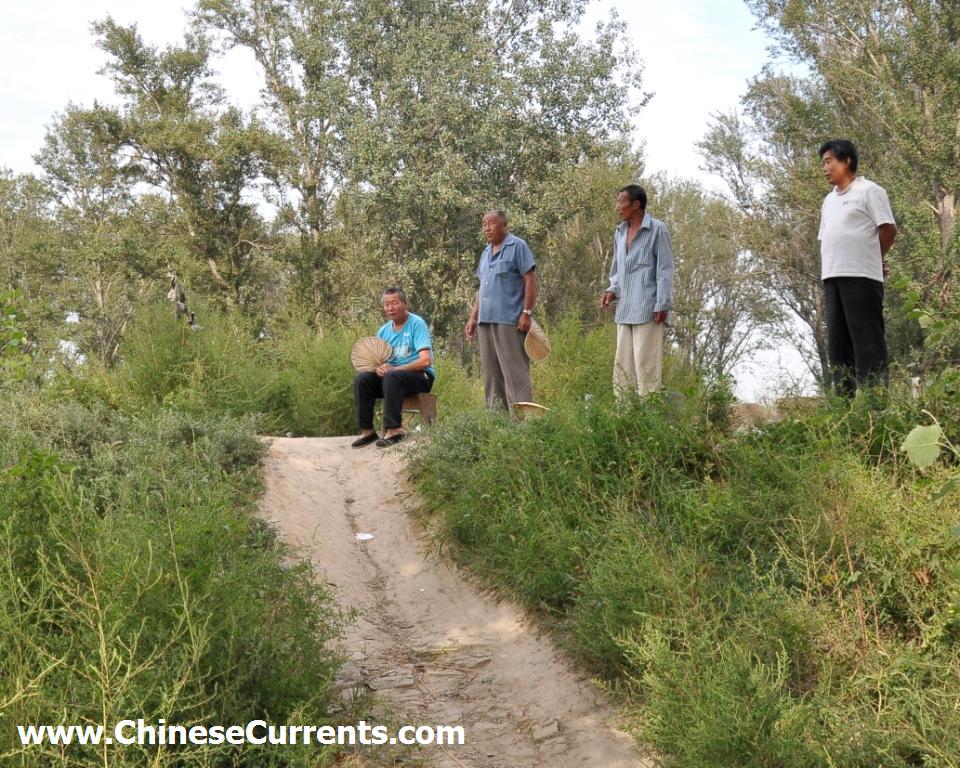
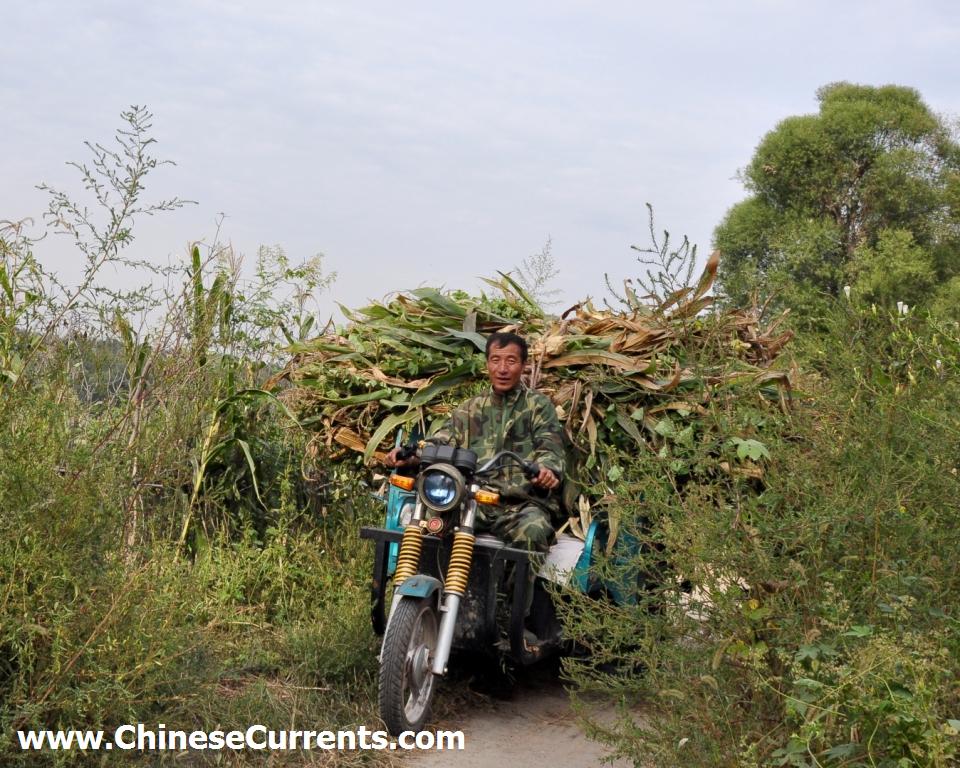
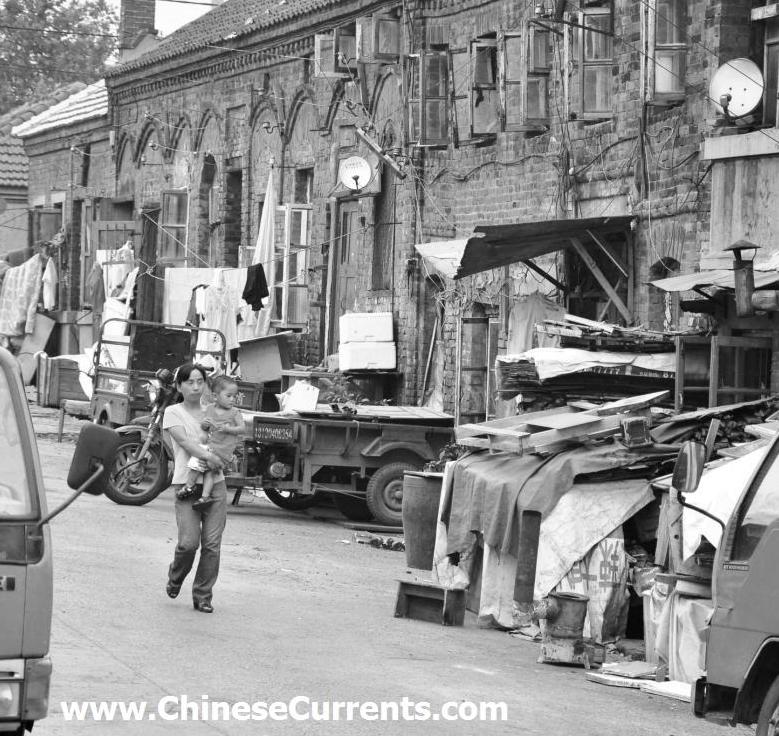
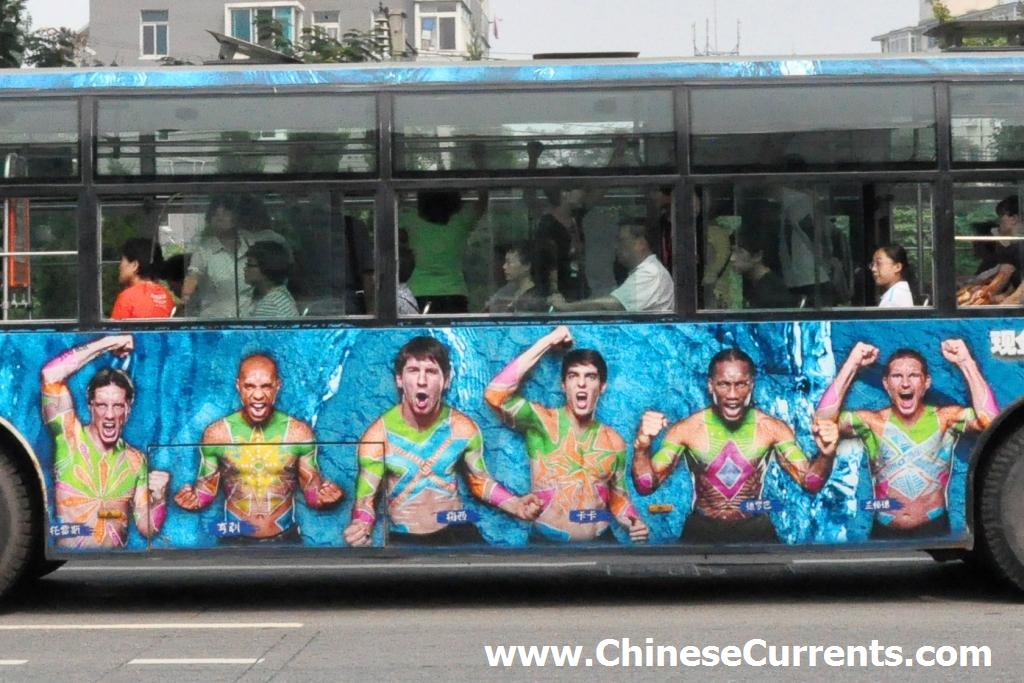

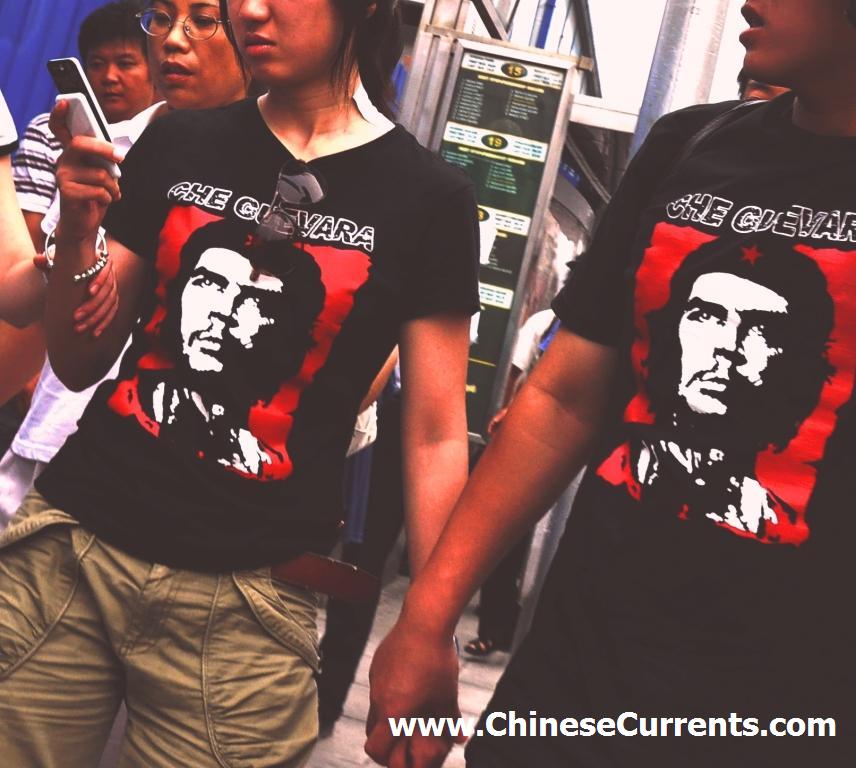
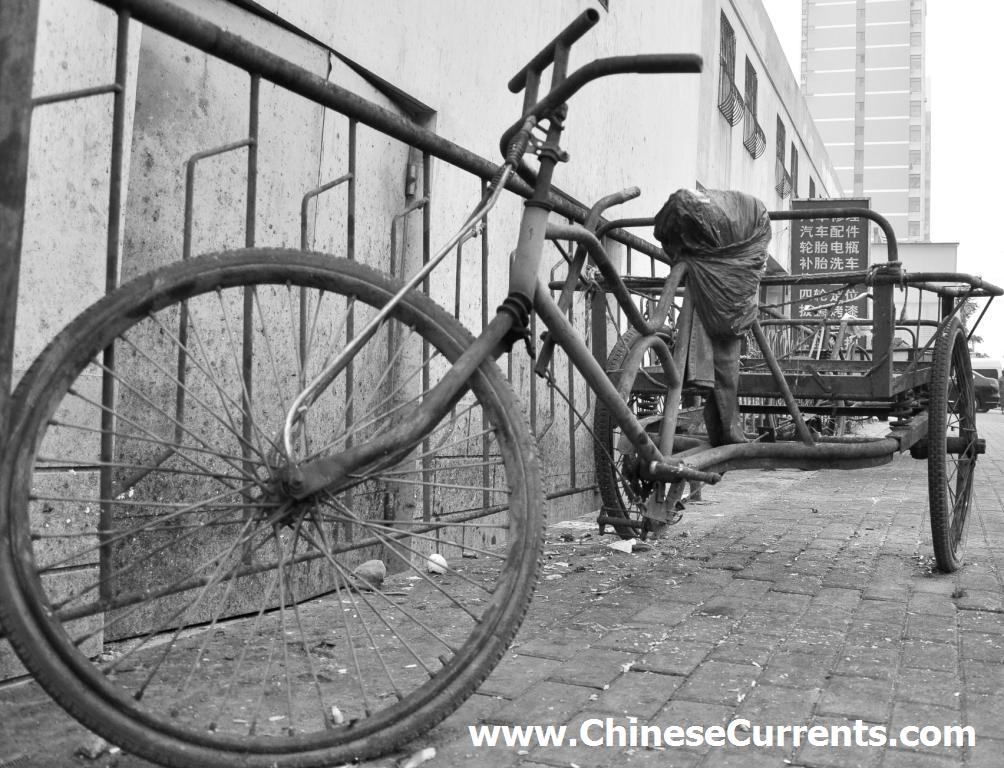
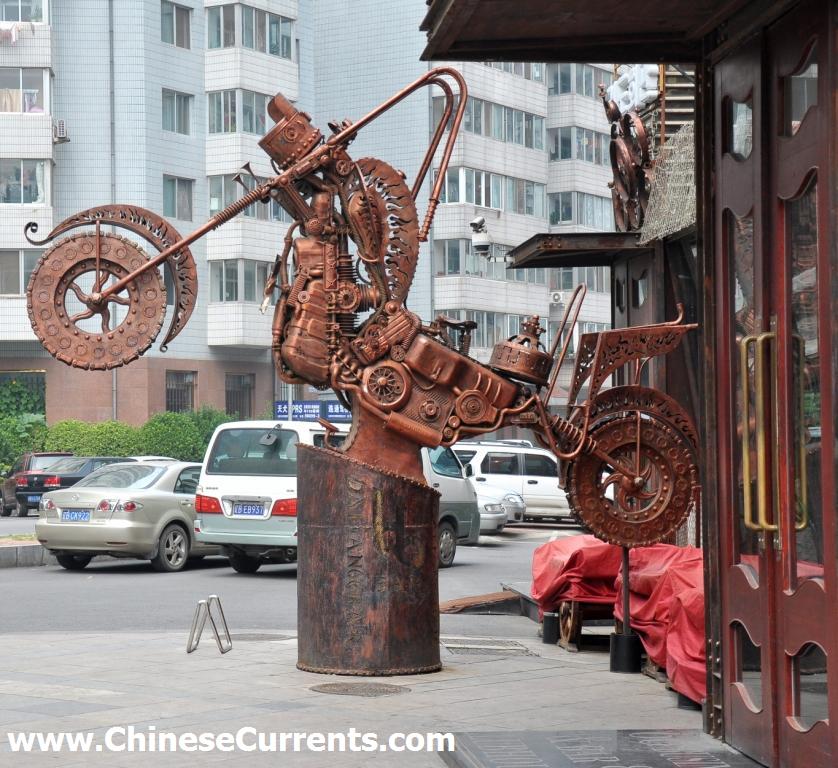
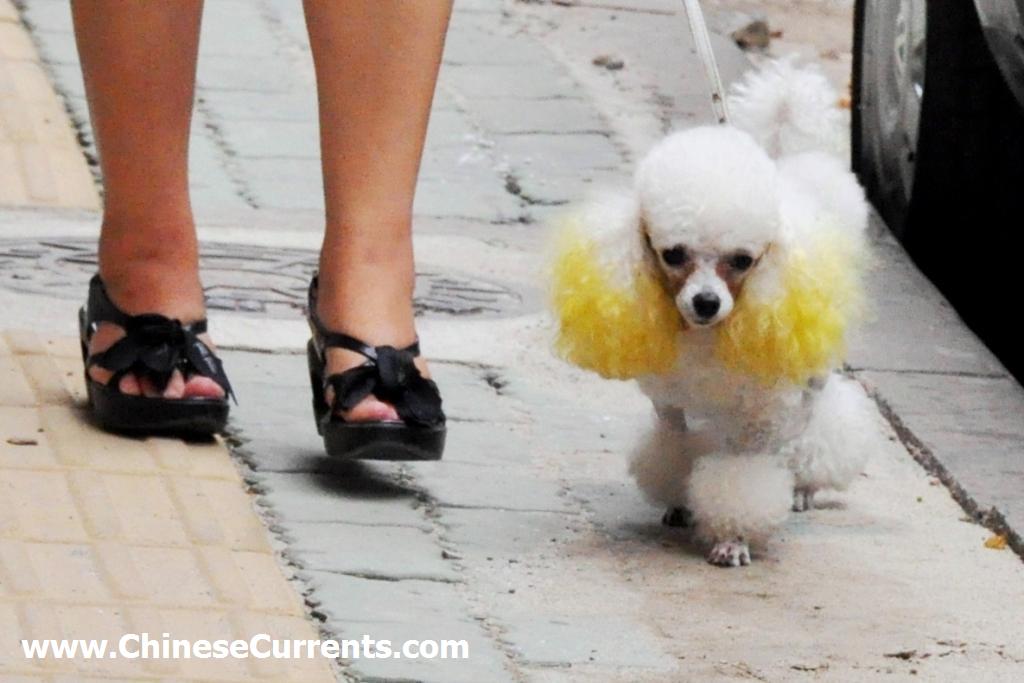
"Out and about", Nanjing, Jiangsu province Monday, 30th August, 2010
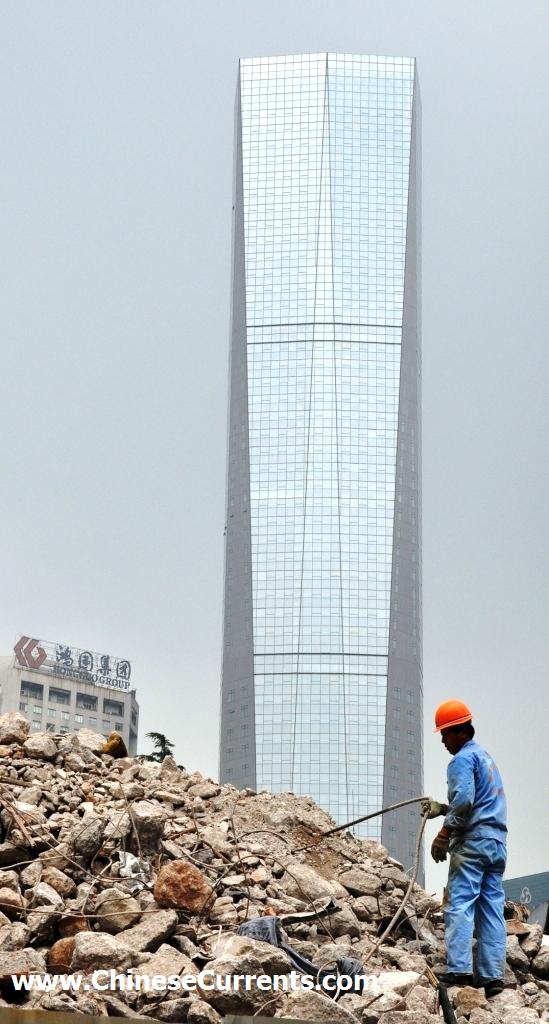
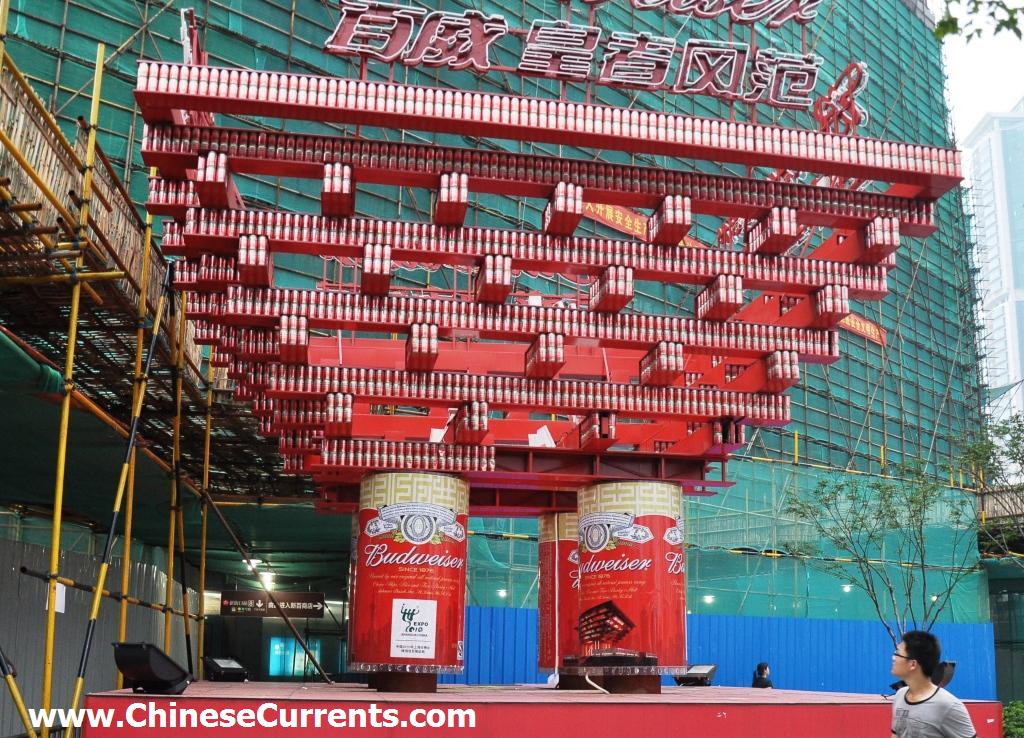
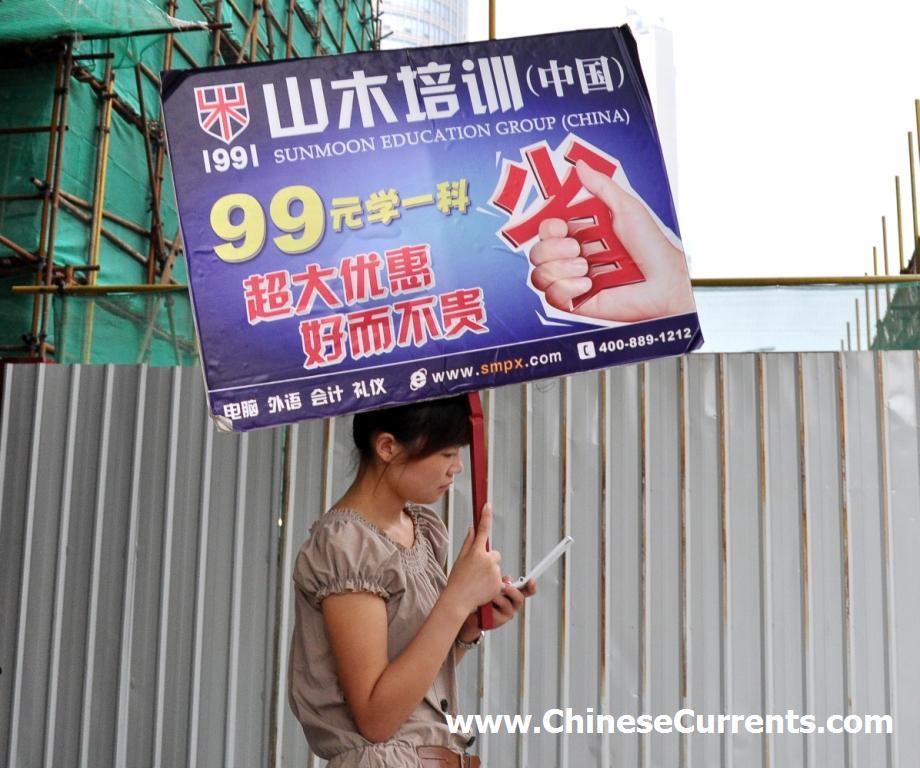
"Out and about", Guangzhou, Guangdong Sunday, 29th August, 2010
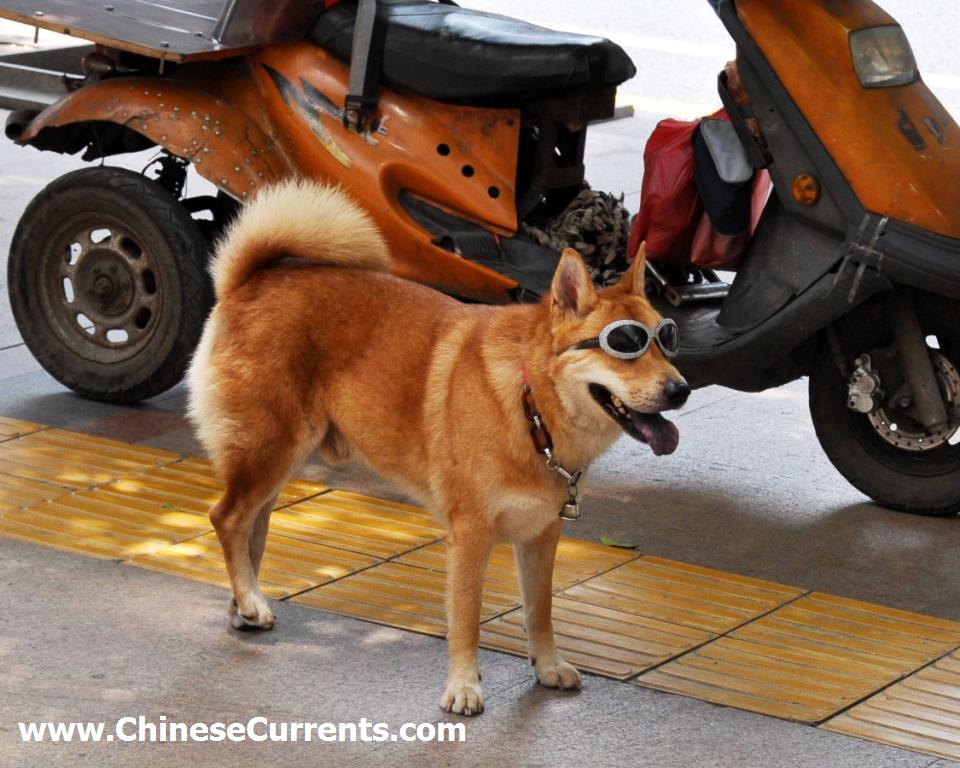
"Out and about", Xiamen, Fujian province Saturday, 28th August, 2010
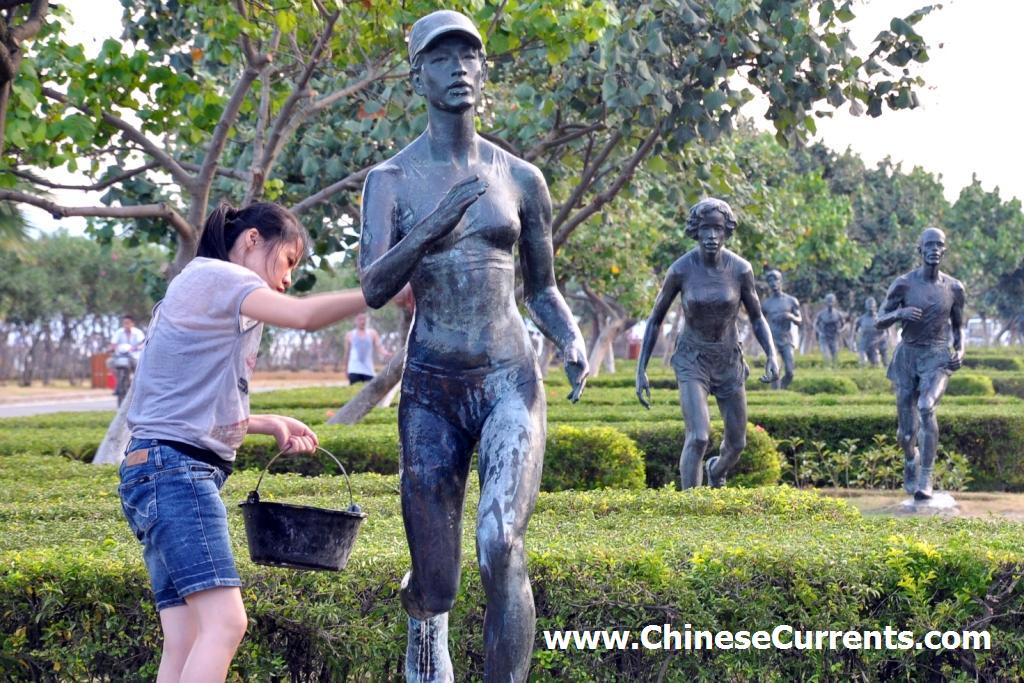
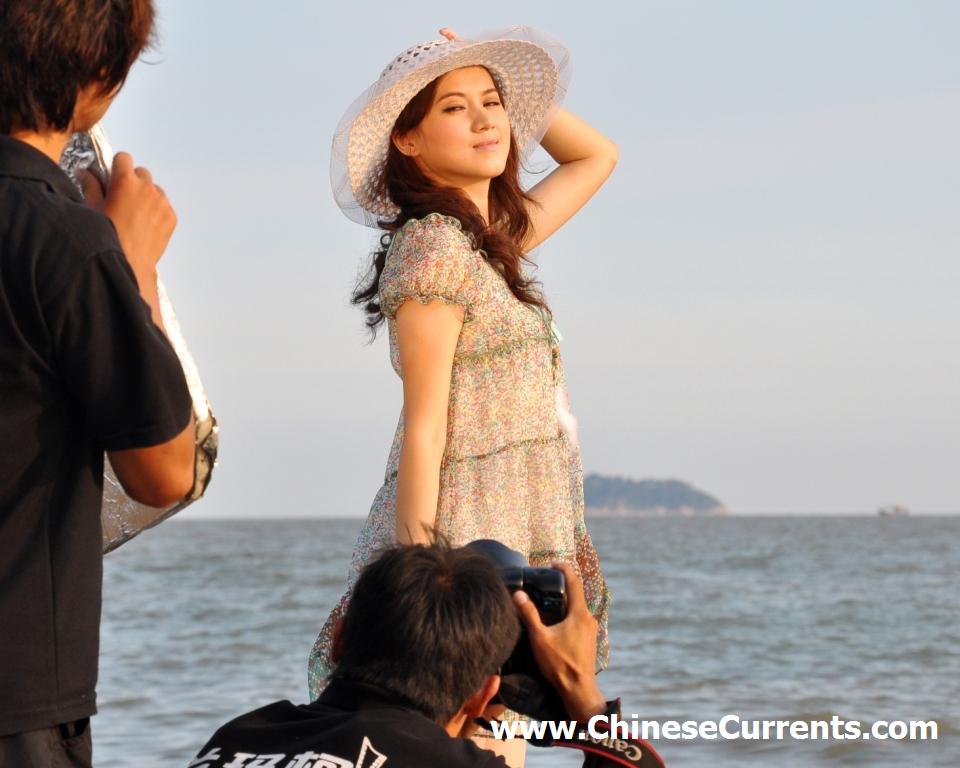


"You pick it, we'll cook it",
Xiamen, Fujian Friday, 27th August, 2010
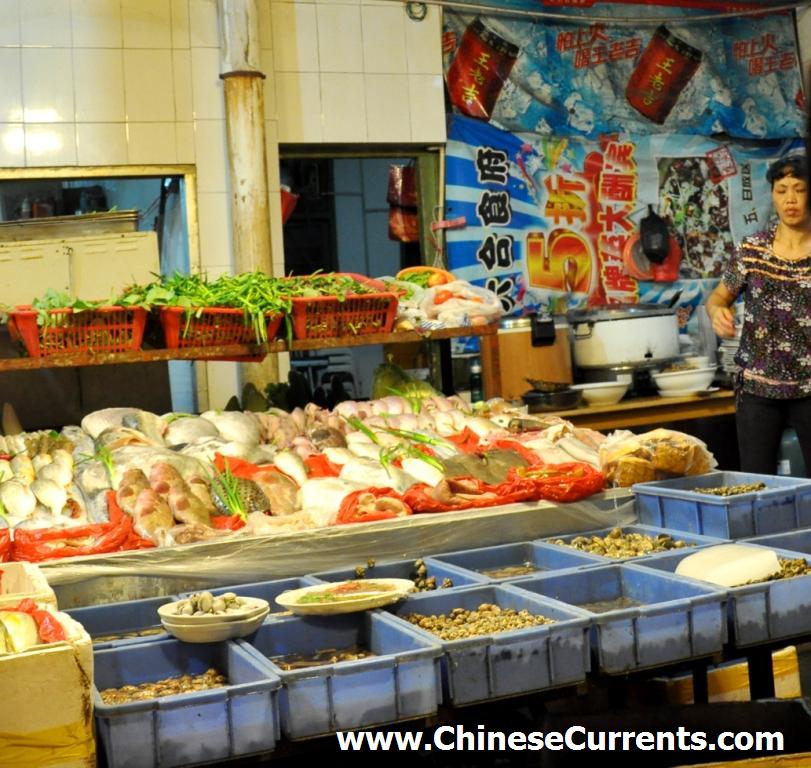
"Fun for all the family",
Shantou, Guangdong Thursday, 26th August, 2010
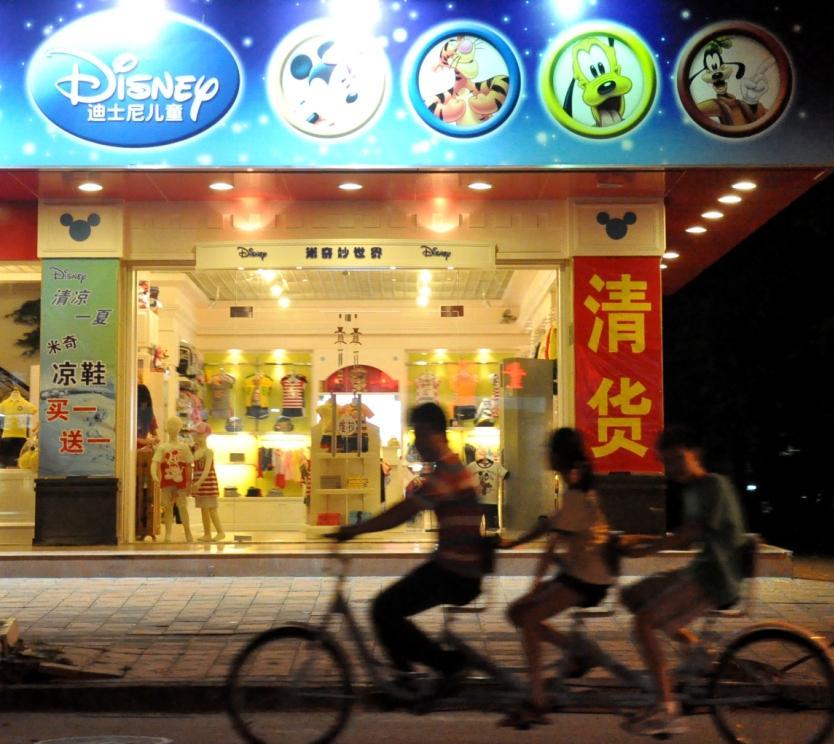
"Coasting it", Shenzhen to Shantou, Guangdong Thursday, 26th August, 2010
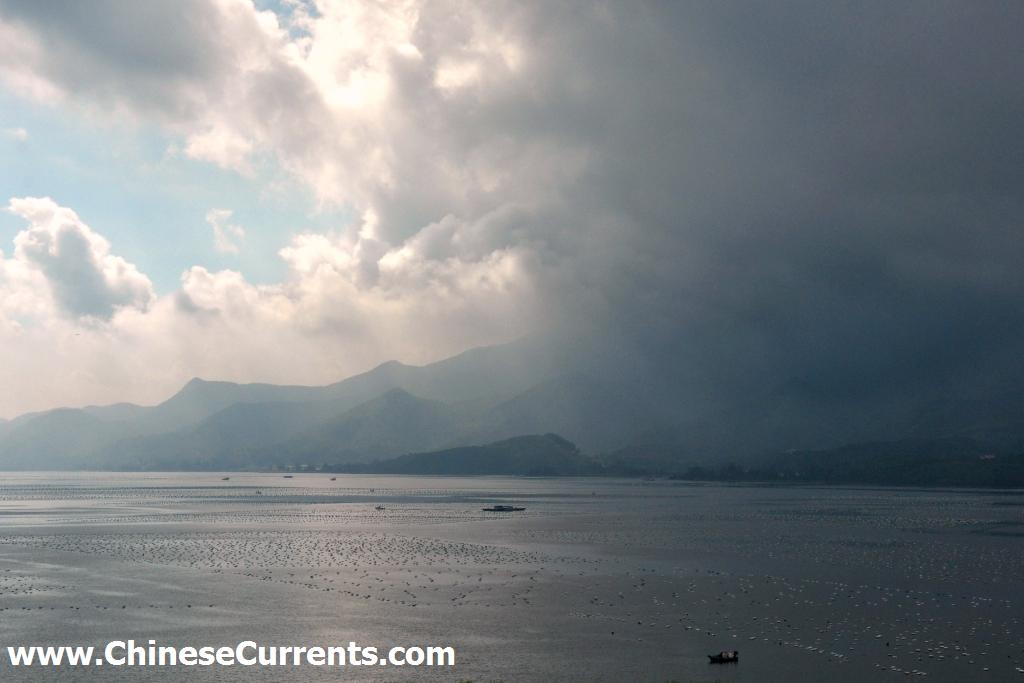
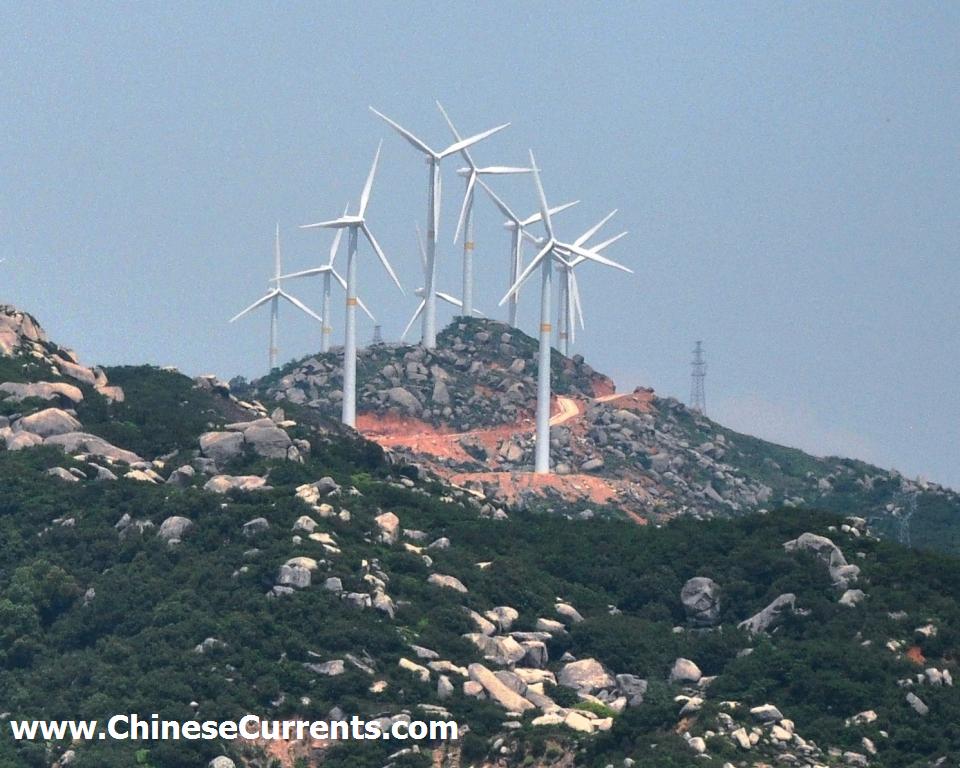
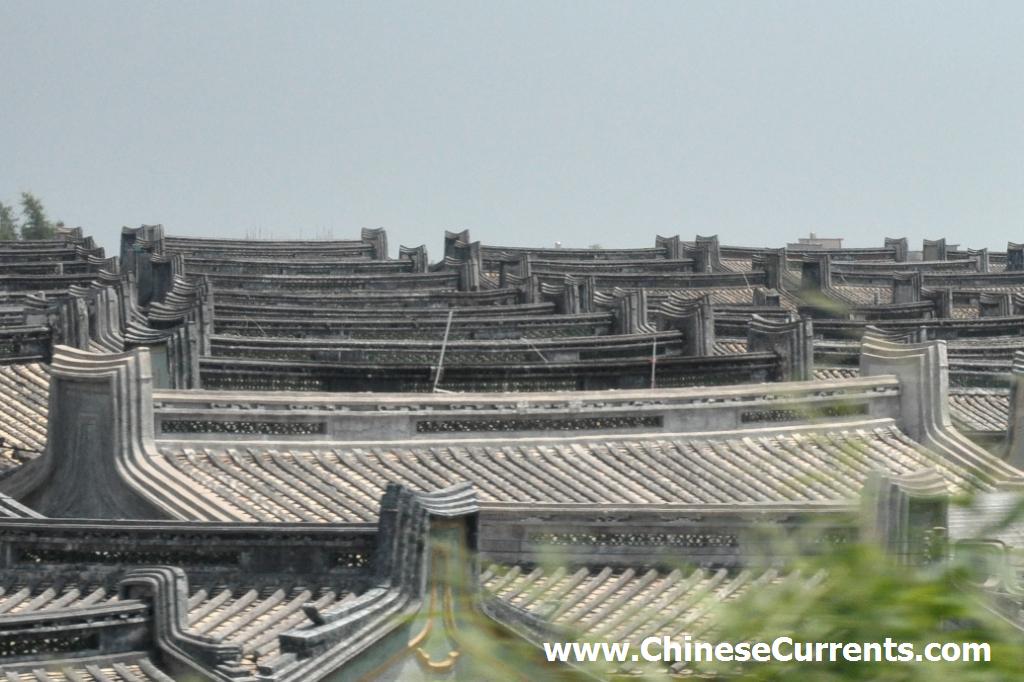
"Open for 30 years", Shenzhen, Guangdong Wednesday, 25th August, 2010
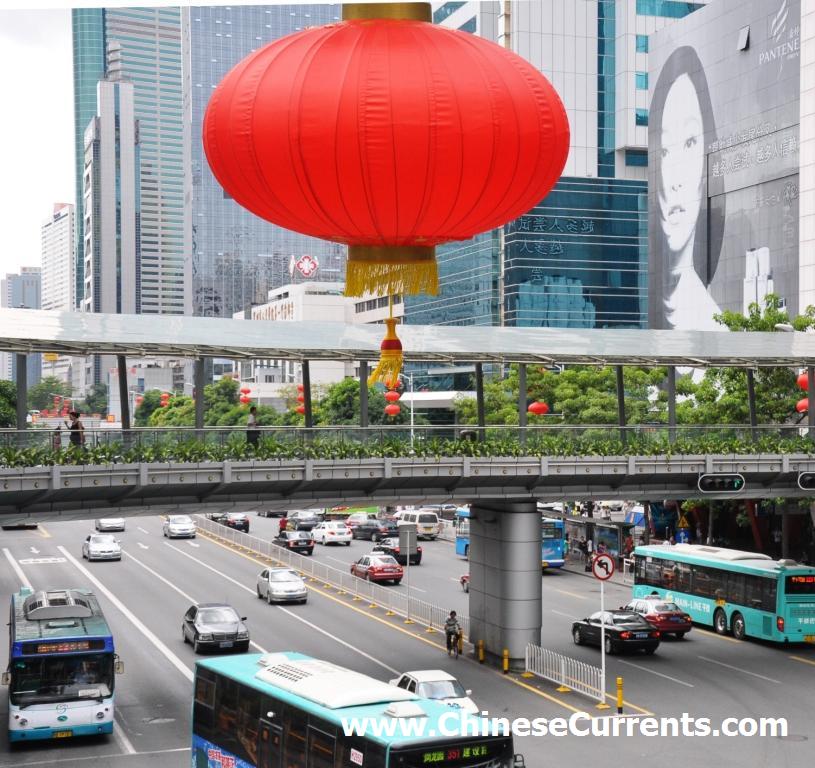
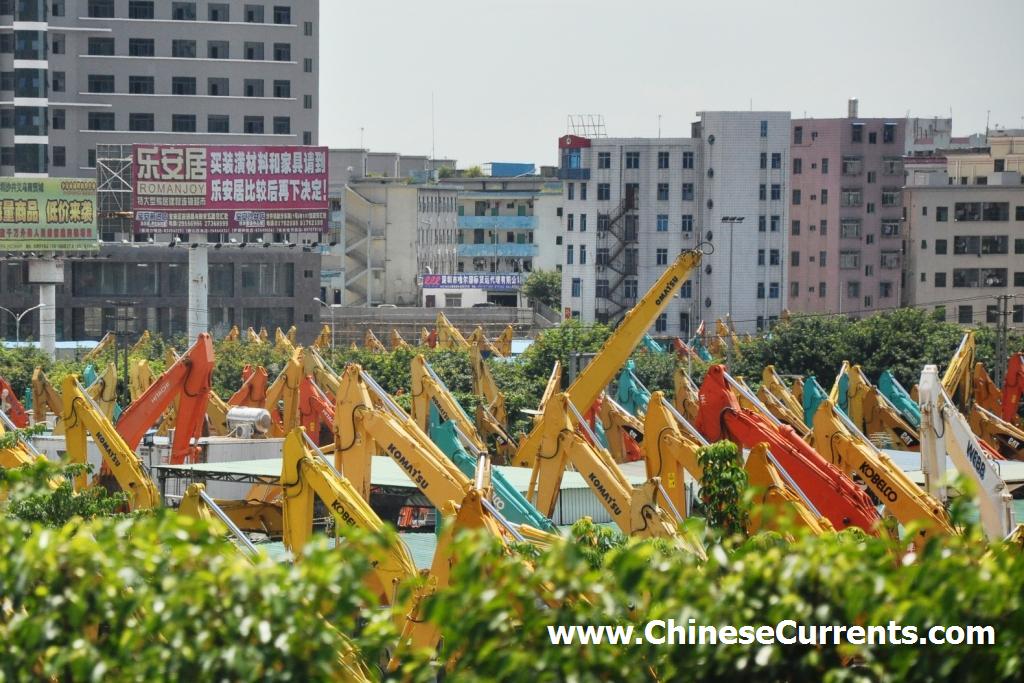
"Gucci poster", Beijing
airport Wednesday, 25th August, 2010

"White Knuckle Ride", Beijing, Chaoyang Park Sunday, 22nd August, 2010
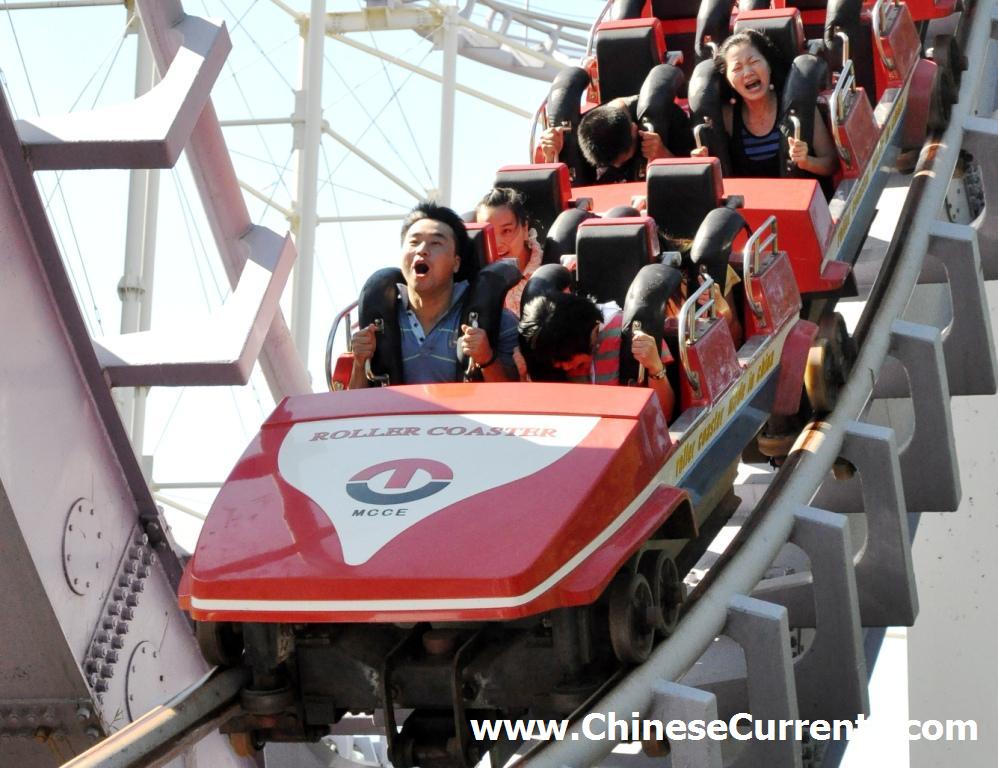
"Love, Love, Love", Beijing, central railway station Saturday, 14th August, 2010
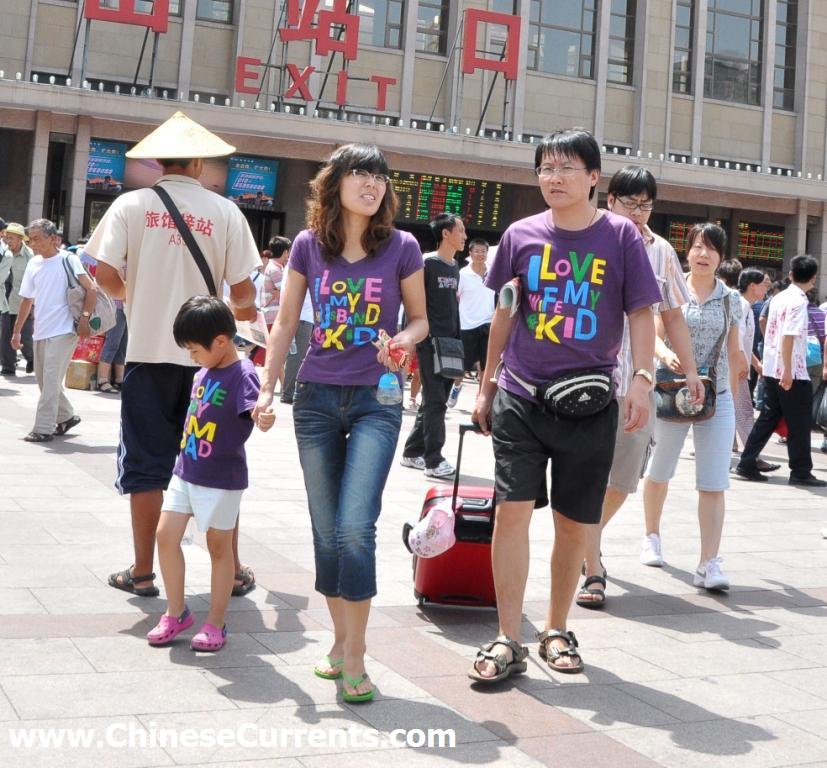
"Long Ride Home",
Beijing, Shunyi Thursday, 12th August, 2010
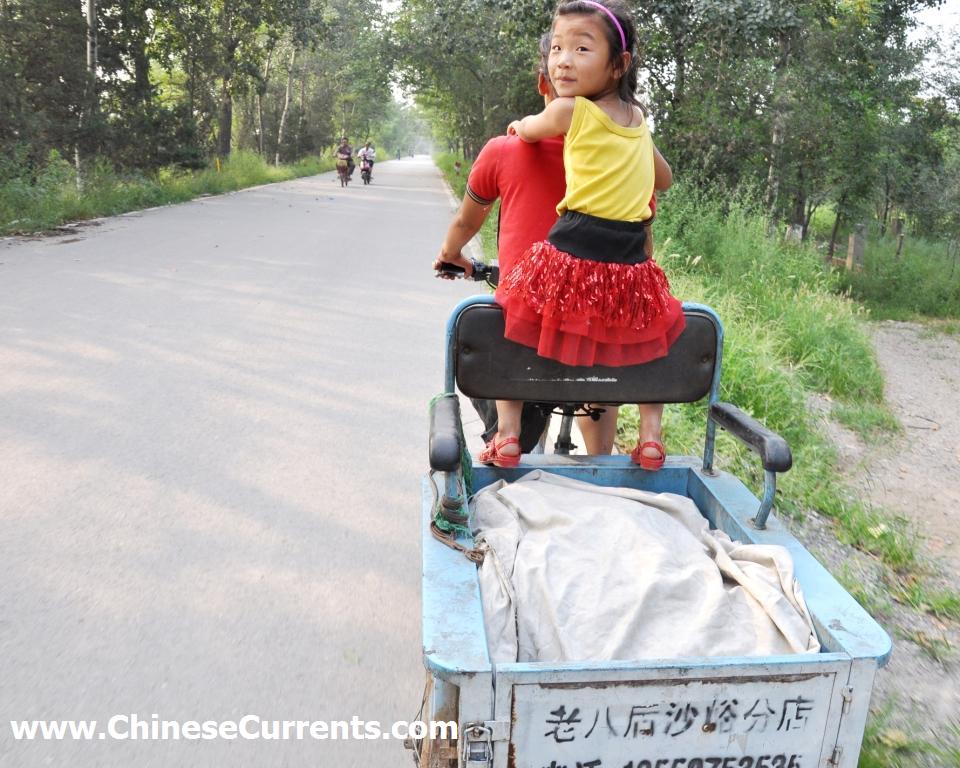
"A Prayer for the New Year",
Sichuan, Emei Shan

"Dawn on New Year's Day", 2010;
Sichuan province, Emei Shan

Spinning the wheel Thursday,
23rd December 2010; Beijing
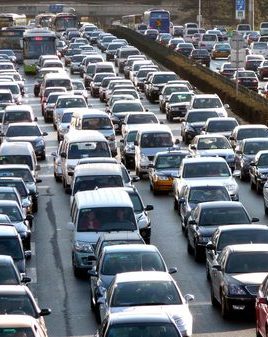
|
| The lucky ones |
Roll
up! Roll up! Hang on a minute… the odds are that people in this particular lottery won’t be
rolling anywhere anytime soon. The capital city of the nation that outlaws gambling (with the exceptions
of state and provincial-run lotteries of course, not to mention the rollercoaster stock exchanges) announced today that it
will introduce a lottery for car registrations from January 1st.
But blogs and forum bulletin
boards all over China have been buzzing with news of the impending legislation for at least two weeks. The
question on many people’s lips is, which city will be next (and when)?
Another hot question is,
what’s the point of denying people the right to buy a car when there are other – far more effective ways –
of reducing traffic congestion? The reality of course is that the measure has not been designed to
reduce snarl ups. That was never the aim. The people behind the scheme have a far more
modest ambition: to slow down the rate of growth of future registrations.
At the end of 2010, the number of Beijing-registered vehicles is likely to hit the five million mark; 900,000 of which
would have their ‘jing’ number plates registered this year (‘jing’ is the character
on the plate that signifies Beijing registration).
Next year’s cap has
been set at a ‘mere’ 20,000 vehicles per month (240,000 vehicles in total) – perhaps about a quarter of
2011’s potential demand. That doesn’t seem a lot, bearing in mind that 30,000 vehicles were
sold last week alone as panic buying spread all over the city after word of the impending legislation got out.
Which brings me to the
blow that will be dealt to the economy generally and the auto-industry in particular: The economic ‘loss’
of about 750,000 car sales is significant. Just as significant is the effect on the psychology of the business
planning of the auto-companies – if Beijing can install such a drastic measure with only a few days ‘official’
notice, then what’s to stop a dozen cities or more changing the rules at a moment’s notice.
The long supply chain of
car manufacturing necessitates that production is geared-up and geared-down slowly and smoothly, and that the expenditure
levels of marketing activity is set months ahead of the planned-for sales shift. Auto-companies plan years
and quarters ahead, not weeks and days. So, if the policy is suddenly rolled out to other cities, the rapid
turning of the auto-production supply tap from full-flow to a trickle will have severe consequences.
If, on the other hand, the policy
is not rolled out beyond Beijing, then the auto-makers’ suffering (and the suffering of the economy that relies on them)
will be manageable – although the companies who sell proportionately more volume in Beijing will of course be worse
off than their competitors whose sales are not so reliant on customers in the capital. That said, if you
were the boss of an auto-company, would your China 2011 (excluding Beijing) plan be bullish, or would you gear-down production
just in case? If you were the owner of a car dealership in Beijing, however, the future is less uncertain
– it is unquestionably bleak.
If other cities don’t
follow suit – and I believe they would be ill-advised to do so – then one of the Beijing government’s most
unpopular policies in recent times will become even more unpopular. Watching people in the comfort of their
cars drive past you as you stand at a bus stop or wait for a taxi on a frigidly cold Beijing night is one thing, but –
for would-be car owners who haven’t won the number plate lottery – the feeling of injustice would be compounded
if Beijing were the only city to treat its citizens in this way.
Ms Jin is one of the millions
who are upset by the new legislation. She writes on her blog, “I started working three years ago
after leaving university, and have been saving up for one ever since. I was hoping to buy a car next year,
but now I realise I have to try my luck in the lottery. I’ve never won anything in my life, so I
don’t hold out much hope. It’s so unfair.”
What Ms Jin doesn’t realise,
however, is that she won’t even be allowed to enter the lottery. According to her blog, she is from
Xi’an, and will therefore have a Xi’an hukou (registration document). She is what
is termed a waidi (an outsider) and as such she will be barred from registering a vehicle in Beijing from January
1st. It makes no difference that she studied in Beijing for four years and has lived in Beijing a further
three years.
This new vehicle legislation
is just the latest example of discrimination against the millions of waidi in the capital, who are denied the privileges that
many people with a Beijing hukou take for granted.
The damning criticism of
the policy thus far from Beijingers and from the waidi who have worked out that they are to be
barred from entering the lottery – has already caused one high profile head to roll. When harmony
has been so disrupted; someone – whose position is high enough to send a signal to others, but not so high as to upset
the order of things – must be blamed and publicly humiliated.
So, spare a thought for
Huang Wei, a former vice mayor of Beijing municipality, who has been unceremoniously transferred from
Beijing to the north-west-frontier region of Xinjiang – more than 4,000km from the capital. Assuming he is driven there and that he
gets to keep his Beijing-registered car, then at least that will be one car fewer to clutter Beijing’s roads.
There will also be one car fewer with a municipal-government licence plate (700,000 of which are reported to be on
Beijing’s road) to upset the people in the long queues for a Beijing bus or taxi.
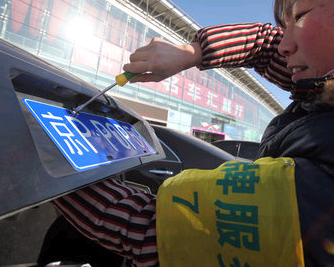
|
| The "Jing" cherished plate |
Strolling on the Moon Saturday, 27th
November 2010; Beijing

|
| "...inspire innovations ...": The sign's call to action |
If you happen to be in Beijing with a seven year-old
and you think that it's too cold/hot/windy/polluted to visit the zoo, the Fragrant Hills, or one of the many public parks
(as it tends to be most weekends of the year), then you could do much worse than to head for the Science and Technology Museum
(just east of the "Bird's Nest" National Stadium). From a distance, the cavernous structure that houses
the museum looks like it has been built by a giant child using toy bricks. Then again, there may be those
who prefer the description on the official website: "The embodiment of the intrinsic correlations between man
and nature as well as science and technology." Keen
to find out more about these "intrinsic correlations" (and also to escape the painfully cold north wind) I
paid the 80 yuan admission price for the two of us, and hurried inside. My first impression was that
I had entered the same giant-child's play room: a dizzying combination of space and scattered games
and activities. The action was on five levels, each with its own theme and vibe: The "Children's Science Paradise"
section was the first port of call. Then we moved on to "Exploration and Discovery", "Science,
Technology and Life", "Innovation and Harmony" and last but by no means least, "The Glory of China". Wherever we went, there were lots of things for the eager hands
and inquisitive mind of a seven year-old to explore. As interesting as my daughter found the exhibits, I couldn't
help thinking that it was all a bit tame and rather pedestrian. Perhaps I've spent too much time watching The Frizz...
the red-haired, high-spirited science teacher who drives The Magic School Bus. In every episode she implores
her students to, "Take chances; Make mistakes" before venturing out to explore an exciting aspect
of science. "Chances" and "Mistakes", however, seem to have no place in the Beijing Science
and Technology museum, which presumably sticks tightly to the guidelines dictated by China's school-curriculum. All of the activities on offer had predictable and certain
results. Take "The Amazing Journey of a Ball", one of the showcase exhibits, for example. If you know
about the Mouse Trap game, then imagine a giant roller-coaster version. Or think about the Honda precision-engineering
TV commercial... the one that demonstrates a chain reaction of car bits falling, ricocheting, and
colliding... that eventually trigger the windscreen wipers. In the Science and Technology museum version,
kids are encouraged to set ball after ball in motion from different heights (select height A, B, or C); use compressed
air to start stage 2 of the quest (one setting); and then propel the balls onwards and downwards (select force A,
B, or C) to complete the circular journey. Balls fly through the air, bounce off angled metal discs, land in wire
baskets, swoop down chutes... all in a mesmerising blur. But there wasn't a single ball that failed to make it
round the circuit because a child had applied too little or too much force or taken too long or not long enough to pull a
lever or press a button. Then there
was the "moon-walking" experience. There was a 20 minute queue of excited youngsters waiting
to take their turn. But, hey, what's a 20 minute wait when you can come away thinking that you have walked
in the footsteps of Neil Armstrong. I remember the grainy, ethereal footage of Armstrong's moon-walking in 1969,
when I was about the same age as my daughter. I watched open-mouthed at Armstrong's antics as he performed the
highest of high-wire circus acts that was a quantum leap beyond moon-walking. It was full-on, no-holds-barred moon-leaping,
or moon bunny-jumping, or moon-bouncing, or perhaps even moon-bounding. He looked like a man that had taken his
"giant leap" speech to heart. He bounced for joy because he was thrilled to be there.
Boring-old "moon-walking" (NASA's preferred term), was presumably designed by PR gurus to make it appear less
dangerous than it clearly was. Cut to Beijing,
2010. Each kid is weighed before being allowed to take her or his "maximum two minutes" turn on
the contraption that is pictured below. The weight of the child determines how far the counter-balancing weight is
moved back. Thus, each child gets the same degree of movement. But, no matter how hard
you try to change the laws of physics (and goodness knows my daughter tried really hard) all you can do
is move, very slowly, up a little, down a little, and sideways a bit. No bouncing/leaping/bunny-hopping/bounding allowed
apparently. What is wrong with a "gravity joy-stick" to control your own elevation and bounciness for goodness
sake. I then noticed the Chinese characters stencilled on the side of the machine: "moon-stroller" (obviously
designed with harmony in mind). Talking
of harmony: The stated theme of the Science and Technology museum and the official translation of the yellow Chinese
characters you see in the above photo is (I'm not making this up by the way): "To experience science and inspire
innovations; to serve the general public and promote harmony". It seems that every public building, every
newsworthy project, every public statement, and every domestic policy that's written about in the China press (or
appears as an official slogan) is designed to "promote harmony". Which is all well and good of course.
Particularly when it is the result of innovation that has been inspired by a visit to the Science and Technology
museum. I am sure that the vast majority
of the thousands of kids who visited today would have been genuinely excited by some of the things they saw. I can't
help thinking though that they would have been even more inspired had they been challenged to "Take chances"
and "Make mistakes". On the contrary,
the Chinese education system instils the opposite philosophy into its teachers and students. In the highly-competitive race
to pass the gaokao (or college and university entrance exam) students will be made to learn several
hundred "standard answers" by rote. Neither the teacher nor student (both of whose career progression
depend on getting high scores) will stray from carefully rehearsed responses to set questions. The torture begins
from an early age, because only the highest-scoring primary school kids can get into the best-scoring middle schools whose
intake have the best chance of progressing to the best-scoring high-schools... which are, in turn, likely to groom the
best gaokao scorers. It's not surprising, then, that in a survey covering 21 countries, conducted by International
Educational Progress Evaluation Organization, Chinese students finished (joint) bottom of the class in terms of their
ability to use their imagination. Nor is it a surprise that Chinese kids were top of the class in maths. The China Daily, in a hard-hitting (for them) editorial
said yesterday that "This global study should make us swing into action and help our students to throw open their young
minds to imagination and creativity". The article goes on to say that it is the parents' as well as the educators'
responsibility to make kids use their imagination. While I agree with this, I can't help feeling that it is the system
that sets the agenda. Chinese parents feel that they have no choice but to focus their energy and hard-earned income on helping
to improve their child's exam score. Inevitably, the development of their child's imagination suffers as a
consequence. Parents know that the kids who
get to the best universities –
by dint of them achieving high gaokao scores – are likely to get on the fast-track to the best careers
(in the fields of technology, government administration and business). Many parents
are not aware, however, that the really high-achievers in the exam – the gaokao zhuangyuan (the top scorers, the ones that didn't
make mistakes) –
are actually the serial under-achievers... Earlier this year, the China Daily reported that, "A survey that kept
track of more than 1,000 top scorers from 1977 to 2008 found that none of the top [scorers] stood
out in the field of academics, business or politics." So there you have it... proof – if proof were indeed needed – that those who
never made a mistake never made anything.

|
| Strolling on the Moon at ..click image to visit the Science and Technology website |
Dave pops into Tesco Tuesday, 9th
November 2010; Beijing
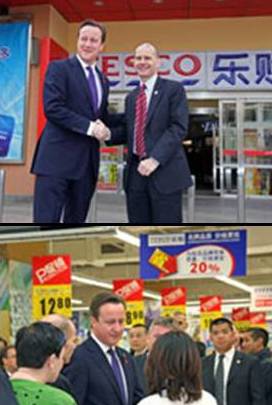
|
| Dave Cameron in Beijing today (photos from Tesco's China website: click on image to view) |
If you find yourself in Beijing with just 48 hours to take in the sights
you've been dreaming of visiting ever since you discovered China in Boy's Own, then where to go? The Great Wall? According to a Chinese proverb you can't call yourself a man until you've been
there, so how could you not. Tiananmen? A must. Peking University? Big tick. The Great Hall
of the People? Rude not to if your hosts are throwing a banquet in your honour. Tesco? First port of
call of course. Dave was so eager to browse the aisles, in fact, that he was driven directly from the airport to the "Happy
Valley" store in Chaoyang district. Not surprisingly, Lucy
Neville-Rolfe, Tesco’s Executive Director of Corporate and Legal Affairs, who is one of the trade delegates to accompany
Dave was "...absolutely thrilled to welcome the Prime Minister to Tesco in China”. It wouldn't have taken Dave long to realise, though, that not many of the products on the
shelves were "made in Britain". Some products would have been more conspicuous by their absence than others.
I wonder if he had –
as I have done more than a few times –
searched for Walkers' cheese & onion crisps only to discover that the only premium brand of crisps on sale is Lays...
a fine crisp of course, but not in the same league as good old Walkers' C&E. Unfortunately for British exporters, the store's 40,000 customers per week don't go there looking
for the "Best of British", such as Norfolk's Binham Blue (which, by the way, is the best cheese in the world...
in my view at least). The reason they go there of course is that Tesco has built its success in China on giving people
what they know and like at hard-to-better prices. So successful has Tesco become that they
now employ more than 23 thousand people on the Chinese mainland, and are within weeks away of opening their 100th store here.
Not a bad achievement considering they opened their first store just 6 years ago. And, according to Ms
Neville-Rolfe, "..There’s plenty more to come": US$3 billion more over the next five years according
to news reports. The company clearly has its sights set on closing the gap between
itself and Carrefour, whose 2009 sales (according to Euromonitor, a research company) reached 33 billion RMB... three times
that of the British late-comer, but still a long way behind the 45 billion RMB amassed by Walmart, the number one
international brand in the category, which opened its first shop on the mainland in 1996 (click here to view Walmart's Chinese website). Increasingly, though, the revenue that Tesco accumulates from
its 4.5 million weekly transactions (versus, btw, 20 million in the UK, where it is number one), although impressive,
understates its achievements here. That's because the company has begun to invest heavily in "lifespace
malls". The first one of which opened in Qingdao, in Shandong province, in January, with reportedly 50,000 people
flocking to the opening event. Tesco operates a store within these malls and rents the rest of the space to cinemas,
restaurants and other retailers. The biggest Tesco "lifespace mall" was opened in Qinhuangdao
in Hebei province in February. Bloomberg reported in September that this "400,000-square foot (37,161
square-meter) mall... attracted a quarter of million visitors" since it opened and, like me, couldn't resist
adding that the "store [within the mall] features grocery products displayed with a 'market' atmosphere as employees
call out the price of live crabs in ice buckets..." The next time I'm in Qinhuangdao I'll make sure I take
in the vibe, as well as reporting back to you what the Tesco crabs are like. Talking
of crabs, I wonder if someone at the British embassy has taken the fast train (under two hours) to Qinhuangdao to buy several buckets-full
for the embassy bash in honour of Dave and his entourage (4 ministers, several academics, and more than 40 captains of
industry –
the largest British trade delegation to visit China for centuries apparently). No doubt that
the Qinhuangdao Bo Sea crabs – reputed
to be among the sweetest in China –
will taste even sweeter after word gets round that they have come from Tesco.

|
| Tesco's Chinese website (Click on the image to have a look at it) |
Changing tides Tuesday,
19th October; Shenzhen, Guangdong province
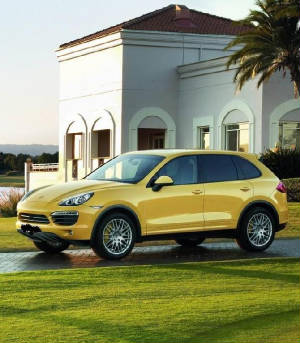
|
| Luxury SUV car of the year... 2006 and 2007 |
Did you know that the Beijing-Shenzhen-Beijing round-trip
is 2,416 air miles – which is actually one dozen miles further than the distance a London-based crow would have to fly
to check out the delights of Timbuktu? So, what’s the point of this somewhat laboured – not to mention gratuitous – analogy, you may well be wondering (assuming you have got this far to wonder it). I am, for the benefit of those who haven’t suffered it, simply trying
to paint a picture of just how extreme an undertaking a day trip from Beijing to Shenzhen really is. I hit the big 50 a few days ago and, on the flight back, as my watched ticked on
past midnight, I can honestly say that I was feeling every day of my age. The 30 minute wait for a taxi
at 2am in the morning at Beijing’s showcase terminal three, did nothing to improve my well-being score. But, although the day
was exhausting, there had been a number of comforting positives. As I waited for my nocturnal taxi in one
of Beijing’s more disorderly queues, I reflected that the day could have been much, much worse: I had arrived at Shenzhen
airport at 11.30 that morning. The driver, who had been kindly sent by the company who had invited me to
Shenzhen to speak at at their global marketing conference, was there to meet me at the gate. We shook hands. “Where’s your luggage?”
he asked. “I only have my computer and camera,” I explained. “But
you’ve come from Beijing… won’t you be staying the night?” I told him that I was
booked on the last flight back, and that I would have to make a sharp exit from the conference hall as soon as I had finished
my bit. Mr Wei laughed, “It’s a long flight to Beijing, you’ll be tired”. I followed Mr Wei to the car park. I saw it when I turned the corner. No! It couldn’t be... ...We were walking straight
to it and there was nothing else in sight. How would I be able to live this down? Generally, I really don’t mind what car I ride in. I say
generally, because there are a few exceptions. On top of the small list of cars I would prefer
not to be seen in – let alone pull into the headquarters of a major corporation in – is the Porche Cayenne. I have disliked the car – if it really is a car – since I first saw
it in China (there were two of them, in fact, parked outside neighbouring houses in one of Shanghai’s swankiest parts
of town).
Don’t get me wrong, I do quite like
Porsches – proper ones that is, the ones that look, sound, and handle like sports cars. But, this
thing? What were they thinking? Jeremy Clarkson, the writer and presenter on Britain’s number
one (in fact, only) series about cars and driving, Top Gear, was so under-impressed with its looks that he was moved to say,
“Honestly, I have seen more attractive
gangrenous wounds than this. It has the sex appeal of a camel with gingivitis.” Mr Clarkson then
went on, in his Sunday Times column, to describe it as the the car that had drowned in “Lake Ugly”. Okay, I know it’s been successful – particularly so in China,
where the majority of Porsches sold are Cayennes – but that doesn’t make it any less… now what word would
I pick…. yes, any less crass. Crassus, the latin parent of the word, adds that bit more to the description:
thick, dense, fat, heavy. Students of Roman history (as well as those, like me, who bothered to look him
up in Wikipedia) will know that Marcus
Licinius Crassus was the wealthiest man in the Empire. He impressed people (most famously, Julius Ceasar)
with his colossal political 'donations', but not with his taste. Crassus was wealthier
than any mortal being, but his lack of refinement and sophistication made him, well, a bit of a laughing
stock among those who knew a priceless Roman urn from a cheap Greek one. Taste in luxury products among those who can afford them has moved on a
lot since 2005, when “unskilled rich” property tychoons were known to travel from Shenzhen to Hong Kong to buy
the most expensive items in the shops – without knowing anything much about the brands they were buying.
Vertu, the draw-droppingly expensive, and some would say ridiculous-looking diamond-studded mobile phone, was
(and for some still is) high up on the list of luxuries to carry back to Shenzhen. In 2006, the first year that the Luxury SUV (sports utility vehicle) category was included in the Hurun survey
of the “best of the best” (luxury brands), the Porsche Cayenne claimed top spot. The people
from Porsche were invited to deliver another acceptance speech the following year for the same range of vehicles.
However, in 2008, the
tide turned. The luxury-category influencers who were surveyed by Hurun, voted instead for the BMW X, which
also carried off the title in 2009. In 2010, it was the Audi Q7 that won the respondents’ vote.
Cayenne sales have continued to increase year after year, but in recent years the rise has as not
been as fast as category sales. The important driver, if you’ll forgive the pun, is that
the Audi Q7 stands for “new wealth” and “new ideas about how to enjoy your wealth”, which has struck
a chord with the New Wave of China’s rich (and also those among the waves gone by who are keen to go with the flow
of the changing tide). The New Wave (the biggest, most powerful wave yet) prefer the refinement
and understatement of the Audi Q7 to the in-yer-face brooding presence of the Porsche Cayenne. The extent
of the swing, instigated by the influencers – those on the crest of the New Wave – is such that full-year 2010
sales of the Q7 are likely to exceed that of the Cayenne. Back in the car park, I stared at the grotesque
Cayenne and resignedly shook my head. But, just as I was working
out how to explain my hypocrisy to my friends, Mr Wei ran ahead of me and seemed to disappear behind the Cayenne, from where
I heard a door being manually unlocked. I was delighted to discover that, hidden behind the Cayenne, was a white
van. And it was not just any white van… it was a mianbao che ['bread van'] no less. A
'bread van' my not be my first choice of chauffeur-driven transportation. But, given a choice of it, a
Beijing taxi, an Audi Q7, or a Porsche Cayenne, the bread van would certainly be my second-pick every time.
And, in case you are wondering,
the Beijing taxi would take third spot... even if I had to wait 30 minutes for it at two in the morning.
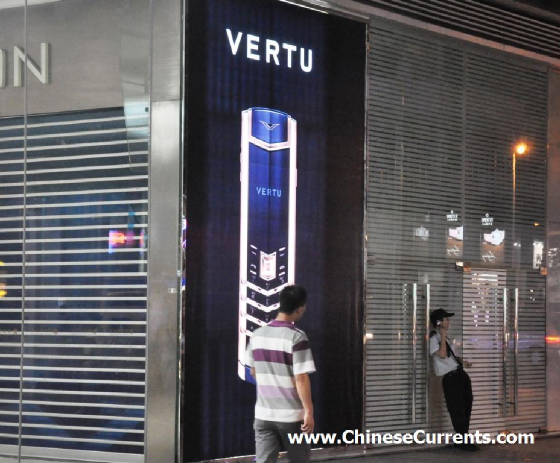
|
| Diamond-studded luxury in Shenzhen |
Tale of two taxis 27th
September to 3rd October 2010; Lhasa, Tibet
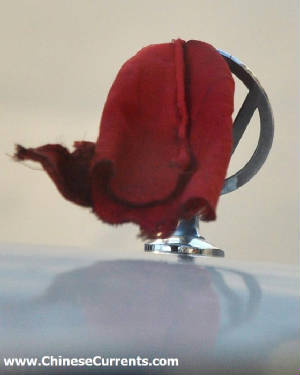
|
| One of the red-flagged Lhasa taxis |
I
arrived at the hotel reception at about 6pm. I was exhausted, but still very much on the kind of high you can only get
from traversing one of the most incredible regions on the planet Earth. The receptionist looked pleased to see me. Until, that is, she realised I didn't have a Tibet entry
permit. "Don't have one?!" she said, with the wide-eyed look of someone who'd just had a premonition
that a tall stranger from a far away land would be a bringer of trouble and strife. "No, I don't have one,"
I repeated. "This is my third visit to Lhasa, and my fifth visit to Tibet and this is the first time anyone's
asked to see a Tibet entry permit." "But you must have one to be here!" She was beginning
to raise her voice, so I thought it would be better to employ ice-cool calmness: "It can't be true
that I must have one to be here because I am here and I don't have one..." I was beginning to sound as well
as feel like Alice following her arrival in Wonderland (same rude welcome, but at least she only had to fall down
a rabbit hole to get there). However, despite my good intention to hold it together, my sleep-deprived mind wasn't
in calm mode and I could feel my composure ebbing away with every word of my explanation: "... I can
show you my passport, my visa, my Chinese driving licence, and my Beijing to Lhasa train ticket – which, I might add,
was checked numerous times by numerous people on the train, and was even checked by two policeman before I crossed into Tibet.
Two policeman who said absolutely nothing to me about needing a permit to be here. "I can show you all of those things, but I cannot show you a
Tibet entry permit, because I DON"T HAVE ONE. I have absolutely no desire to be here if I am not wanted here,
so..." I the realised that I had said the "so" without knowing what the "so" was, so I prolonged
the the "oooo" long enough to think of a suitably dramatic punch line. "...does this
mean I need to sleep in the street and get the morning train back to Beijing?". She tilted her head to
one side and then to the other, as if sizing up the situation, before telling me that she needed to call her
boss. I awoke not knowing where I was – the memories of the past three days swirling around
in a bewildering montage. I then heard the yapping dogs that had kept me awake half the night, which I
found strangely reassuring because the sound at least reminded me that I was in a hotel room in Lhasa. I
then remembered that today was the day I would return to the mountain nunnery I had visited in January 2008. That
time, it had taken a helpful concierge ten minutes to find a driver who knew the way. This time it would
take 15 minutes. The same receptionist who had eventually given me my room key after her boss had confirmed
I could stay, kindly offered to find the "right" taxi for me, because “Only a few drivers know how to get
there”. I asked her how she knew which drivers would know the way. “Only
locals know the way there,” she said matter-of-factly. “And how do you spot a local driver,”
I enquired. “Oh, you can just tell,” she responded dismissively. Most
of the taxis were full. But then an “empty” taxi – a shiny new Brilliance (made in Shenyang)
– slowed down, the driver not unreasonably thinking that we wanted to hire him. The receptionist
waved him away. Clearly, not the “right” one, I thought. Several more “empty”
Brilliance taxis were allowed to pass by, before the receptionist spotted one that she thought would be able to take me to
the mountain-nunnery. A battered old VW taxi was flagged down. My helper spoke to the
driver in Tibetan, before confirming to me that this driver would indeed take me where I wanted to go (2 hours away from Lhasa),
wait for 4 hours, and return to Lhasa – all for a price I thought was reasonable. Thanking
the receptionist for her trouble, I climbed in to the front passenger seat. This could have been – I would
later realise – a fatal mistake. The driver, an early-thirty-something, sporting a Kappa tracksuit
top, nodded a hello. It didn’t take me long to work out that this was a driver in a hurry.
Before I had shut the door, he started to perform a G-force inducing U-turn. This
set the mood for the rest of the nail-biting journey. I deduced that – let’s call him Mr T
– had a worryingly high level of speedosterone, a chemical that seems to affect more than a few thirty-somethings the
world over. The reality was he was driving a battered VW, but that didn’t stop Mr T driving on and
sometimes beyond the limit. Everything that was ahead of us didn’t stay ahead of us for very long.
That was until we encountered a Toyota Landcruiser. Mr T raced up behind it, slammed the gearbox
into third and, with the engine shrieking its protest, was just about to execute an overtaking manoeuvre on a blind bend that
would have been logged by accident investigators as “travelling at least 30km over the speed limit”, when I screamed
out: “Wu Jin!!” Mr T hadn’t noticed the WJ number plate (he had been too busy
reciting a Buddhist sutra as he passed a prayer-flag bedecked shrine, while talking on his mobile phone to one of his mates).
The WJ signified that the car in front was not just any Toyota, it was a Toyota carrying Wu Jin – an
armed-police response unit. “Oops,” said Mr T, as he lifted off the accelerator, “I didn’t
spot that one”.
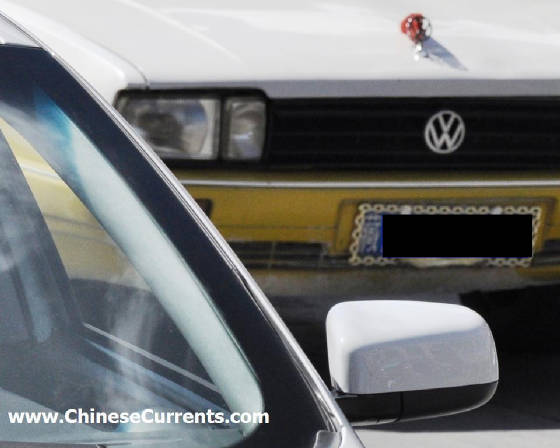
|
| CLICK ON THE PHOTO TO SEE MANY FAR MORE ROMANTIC PHOTOS OF LHASA AND TIBET |
Ticket to ride... on tonight's Sky Train Saturday, 25h September 2010; Beijing
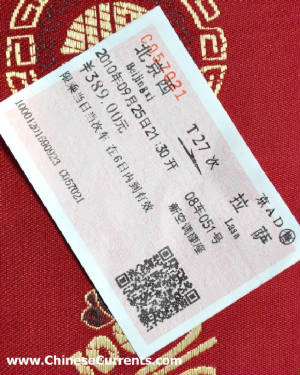
|
| Ticket to ride... the hard way |
"You're going where?!" asked a friend. "Lhasa," I repeated. "How long does the flight take?" he asked.
"I don't know, I'm taking the train," I replied. After I had gone on to tell him that
I would be sitting on a "hard seat" for more than 45 hours, he wished me luck. Not that I wouldn't prefer a bed of course, but all the "sleeper" tickets had
already been sold by the time I got around to deciding that I would return to Tibet. On the plus side (and I am
sure you can understand why I think it's an incredibly small 'plus'), the "hard seat" for the close-to 2,500
mile train journey costs only 389 yuan (or the equivalent of about US$58 or 37 pounds sterling). The last time I travelled there, I took the same
"Sky Train", the T27, which departed from Beijing West Railway Station at 9.30pm on New Year's Day,
2008. Then, I had been lucky enough to get a "hard sleeper" ticket – my preferred style of travel during my 35-day 10,603 mile
(about 17 thousand km) rail journey around China (click here if you would like to see where else I went). The 4,096km ride was so exhilarating that I swore to do the same trip
again one day. As well as offering a wonderful opportunity to listen to dozens of people talk about themselves and about
their reason for making the arduous trip, the backdrop to these conversations is simply awe-inspiring:
The shift in altitude from Beijing West railway station at about 35 metres above sea level (masl) to the end of the line at
Lhasa station at 3641 masl (just short of 12,000 feet) is ear-popping enough, but it is the final two sections between
Golmud, station "number 6", and Lhasa that are most dizzying. 80 per cent of the track from Golmud
to Lhasa is at more than 4,000 masl, including 550km of which has been sunk into permafrost. The beauty of the early-evening
arrival time into Lhasa is that you can spend the entire "Day 3" of the journey enjoying eye-poppingly wonderful
vistas. The highest point of the
journey (indeed, the highest point of any rail journey in the world) is reached a couple of hours before Nagqu, station "number
7". The height on the altimeter to watch out for is 5,072 masl (16,640 feet), which signals that you
have reached the Tanggalu Pass, the boundary marker of Qinghai and the Tibet Autonomous Region.
From here, it's downhill (about a vertical mile) to Lhasa.
All of this assumes, of course, that I am allowed to cross into Tibet. Most websites that profess to
be experts on tourism into the area tell you that you will not be allowed in without a special travel
permit (the process for getting one is a long and uncertain one I understand). On my last attempt, I managed
to get all the way there and back without one (the hefty price of which includes, by the way, an "official guide").
No one is quite sure if there has been a tightening of the unwritten rules since my last visit... Well,
there's only one way to find out...
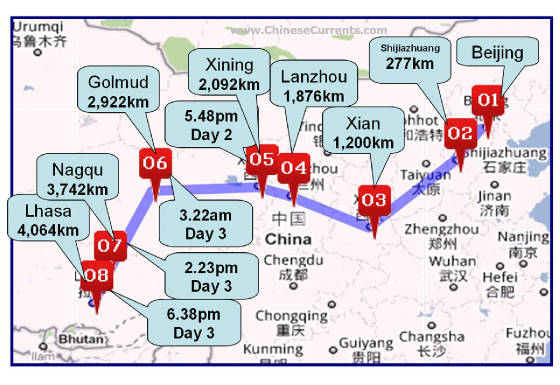
|
| The 8 Sky Train stations, arrival times, and distances from Beijing |
Apple blossoms in China Friday, 17th
September 2010; Sanlitun, Beijing

It rained heavily all day today in Beijing. The first cold front of the autumn had
also blown in air that was 14 degrees centigrade cooler than the highs of recent days. But the inclement
weather mattered not a jot to the crowds who flocked to the Apple store in Sanlitun Village. Hundreds had
waited in the pouring rain for the 8am opening – that
signalled the long-awaited launch of iPad in China (Apple's other shops in China would open at 10am). The first in the queue was Han Ziwen, a bookshop owner,
who had – according
to a shop assistant I spoke with – been
queuing since Tuesday. Photos of him, proudly wearing his "I BUY IPAD NO1" shirt, and holding
aloft his brace of iPads (the most that one person is allowed to purchase at any one time) are already all over the Internet. It seemed that – like the beaming Mr Han – everyone leaving the shop with an iPad was struggling to contain
their excitement. "Which one did you buy?" I asked a man in his mid 30s, who was doing his best, but
failing badly to contain a cat that got the cream look. "64!" He said with a grin that was as wide as a well-fed
Cheshire cat's. The 64GB is the top of the range model that is selling for 5,588 yuan (about US$825). "How
does it feel to have one?" I asked. Words, it seemed, were not enough to express his excitement. Instead,
he punched the air jubilantly. With that, I went inside and waited for one of the many demos to become available.
After 15 minutes, my turn came. My first port of call was the ebook application. There were two pre-loaded
books to choose from. I chose Winnie the Pooh – a
favourite of mine. I had never flicked through an ebook before (as in turning the pages with one's
fingers), and at once I realised that the pundits who are forecasting a serious decline in the sales of physical books
are likely to be proved right. Suddenly, Tigger – whom you may remember is "bouncy,
trouncy, flouncy, pouncy", and "Fun, fun, fun, FUN" – pounced
off the page and appeared in front of me. "Hi!
Can I help!?" pleaded an eager-faced Chong, an Apple 'helper' (I can't bring myself to call him a salesperson,
because it never felt like he was trying to sell me anything). I thought for a moment before asking him to show me how
to use the Wi-Fi. In two shakes of a Tigger's tail, I was connected to my requested site. He then told me all
about the nifty device that for 80 yuan a month would keep me connected to the internet anywhere in China (rendering redundant
any concerns about the China iPads lack of 3G compatibility). I was struck by Chong's incredible energy and unadulterated
love of what he was doing. He then
spotted I had a camera with me. "Hey!" he said, "The iPad is great for photographers!
He then explained how the card reader that's compatible with the iPad ("you can buy one upstairs") could enable
me to travel light on my journeys around China. I thanked him for the advice, and he bounced away with a cheery, "Shout me
over if you need any more help!". No sooner
had I got back to the iPad, Chong bounded back to my side. "Hey!" he said, "I've
just thought of something you'll really like!" He then picked up the iPad, and pressed a Google
Earth button that pinpointed the Apple store in Sanlitun (homing in on the Wi-Fi signal I guessed). "Now,
wait for this," he said, with the aplomb of a conjurer who was supremely confident of his ability
to pull a rabbit out of his hat. "Enable compass!" he said theatrically as he pressed
something on the iPad. "And away you go!" The map on the iPad was then showing me that it was pointed
in the direction of Gongti Bei Lu, due south of the shop. I have this facility on my mobile device, but I must
admit that it is far more digestible in tablet form. "How
long have you been doing this job?" I asked. "One year," he replied. "Before that
I was in the education business in Guangzhou, but I just had to come to Beijing to work with Apple." Chong
was on a roll: "I LOVE it!" he exuded. "I LOVE introducing people to new things,
and showing them how simple it is to get more from technology. Apple is so simple to use," he continued,
"Anyone can benefit from using it." I was dumbfounded. I had worked with Nokia in China for 5 years,
and it was as if the Nokia "human technology" mantra had been given a new lease of life. I thanked
Chong again, who shook my hand again before bouncing over to one of the other demo tables. With people of his calibre;
with such a pleasurable browsing experience; and with technology this cool – there is no doubt that the brand will go from strength to strength in China.
What's more, Apple's long-standing barrier for many – pricing –
(which has always been the brand's double-edged sword) is much less of an obstacle than it was before
8am this morning. I stepped back from the table, gesturing to the mid-twenty
something woman – who was
standing over my shoulder sensing that I was about to move away from the table – to take my place. "Thanks!" she said. After a few
minutes chatting I realised that the iPad really is a game-changer for Apple in China: Ms Wang sums up the magnitude of the shift that Apple has pulled off:
"I never thought I'd be able to buy an Apple computer, but I now realise I can buy their very latest model for under
4,000 yuan!!" I bet, though, that when Ms Wang (and millions more like her) has played for 30 minutes on the
iPad, and had a chat with Chong or one of his colleagues about her options, the 1,600 yuan more that's required to buy the
64GB model (versus the 16GB) will –
all of a sudden – seem to
be quite a small price to pay. [You are welcome to click HERE to view my in-store photos from today's visit.]
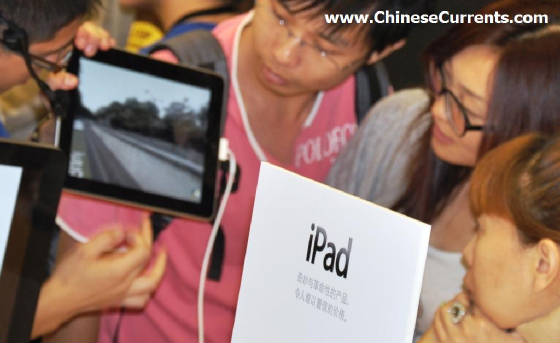
|
| The Apple of their i |
The number 1 "Chinese Brand City" is... Thursday, 2nd September 2010; Dalian, Liaoning
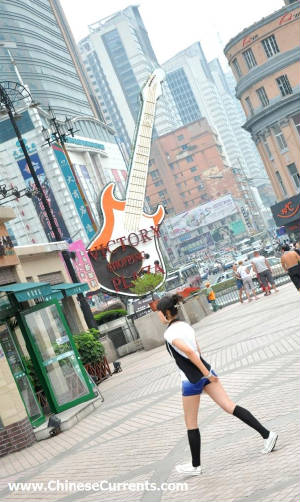
|
| Dalian... One of China's most upbeat cities |
I looked at
the headline again. What do they mean by “Chinese Brand City” I asked myself?
Has Dalian been awarded the title of the number one city brand in China, or is Dalian the number one city for Chinese
brands? The answer, according to the 12th August China
Daily article, written by Guo Changdong and Ren Ruqin, is the former – Dalian has won the accolade of number one
city brand in China.
The article states: “The committee [made up of representatives
from the China Council for the Promotion of International Trade and the Brand China Industry Union] praised Dalian’s
efforts in promoting itself and building a culture with romantic and trendy characteristics. Dalian has done much work in
industrial restructuring, and forming a liveable city environment. The rapid economic development helps Dalian to build its
brand image.”
Well there’s a lucky bounce, I thought to myself, as
Dalian is my final port of call on a nine day tour that has included six Chinese cities. A great opportunity,
then, to compare and contrast Dalian’s development with that of Shenzhen, Shantou, Xiamen, Guangzhou, and Nanjing (from
where I had flown). As well as the 6-city development differences I am also keen to see if I can spot any
changes since my last visit here in 2007. My first impressions, I have to say, were not positive.
Maybe I am staying in the ‘wrong’ part of town
this time – in the far east of Zhongshan Road, the main thoroughfare that dissects the older part of the city.
Or maybe it was a bad day in terms of pollution or humidity. Or perhaps I was suffering from travel
fatigue. Whatever it was, my three mile walk down the entire length of Zhongshan Road left me thinking
that central Dalian was looking… well… more than a little tired.
However, GDP per capita (73,134 yuan) and urban income per capita figures (19,090 yuan) in 2009
all show very healthy year-on-year gains. And all other key economic indicators show similarly robust growth.
As I was puzzling over the conundrum, I remembered that I had spent the bulk of my time on my last visit away from
the central area. In 2007, I had toured the Dalian Development Area (DDA) – the shiny part of town
as well as Dalian’s engine for economic growth. The DDA is so important to China’s economic
development that it is controlled by China’s state council in Beijing, not by Liaoning’s provincial government.
So, could it be that my impression of Dalian in 2007 had been
skewed by a number of positive experiences (which included interviewing a Ferrari salesperson, who was the personification
of Dalian’s reputation of a “nothing is impossible” pioneering city... click here to read the article) and that my observations this time could not and should not be compared with my 2007 impressions? I went to a bar to find out what the locals think: Mr Cao, the bar owner, had no idea about Dalian’s “best city” award.
He also had quite a negative view of Dalian’s current economic position. “Things have
not been great since Bo Xilai was transferred away,” he told me.
[Bo Xilai, a charismatic and popular figure, was transferred
to Chongqing in 2007 as party secretary to sort out corruption in what is technically the world’s biggest city.
Think of Clint Eastward riding in to town chewing a cheroot and you get some idea of how the media portrayed him and
how the general public have feted him. But, before that, he was Minister of Commerce at state level (2004-2007).
He worked in a provincial position prior to that. The truth of the matter is that Bo Xilai’s
seven year tenure as major of Dalian came to an end on January 2001. So, as good as the good old days were,
it’s a tad unfair to blame Bo Xilai‘s successors for the perceived woes of the past two or three years.]
Now thoroughly confused I continued walking down Zhongshan
Road. A night venue with blaring music sucked me inside. 30 minutes was long enough
for my eardrums, as well as being long enough to convince me that Dalian young people are indeed every bit as upbeat as I
remember them. Despite the cracks in the pavements, the run-down alleyways, and ancient tram system, Dalian
is still one of the most happening cities in China. If the progressiveness of its young people is anything
to go by, Dalian city is right up there vying for the title of China premier league champions. Which reminded me to check out the evaluation criteria for the recent
“China Brand City” contest:
After an hour of fruitless searching, I stumbled on an article
also in the People’s Daily (which cited an article in the China Daily) that succeeded only to muddy
the water. It was essentially a copy of the article I referred to earlier, except that the winner was Hangzhou,
not Dalian (which was listed as one of the nine runners-up, along with Qingdao, Quanzhou, Changchun, Wenzhou, Shenzhen, Changsha,
Wuxi and Tianjin Binhai New area). The Hangzhou city website was also trumpeting the success in the event
that “is billed as the largest and most influential annual competition about city brands in the nation”.
I then wasted another hour trying to get to the bottom of this
mystery, only to hit a dead end at the Brand China Industry Union’s website http://brand.brandcn.com/ which didn’t include any reference
to the event that it had co-hosted. Then, with my patience running out, I hit on an
important lead. The Chinese government’s Intellectual Property Protection in China website reports
that: “On August 8, the 10th Brand China Summit hosted by China Council for the
Promotion of International Trade and Brand China Industry Union was held… Over 2000 governmental officials, representatives
from renowned enterprises, brand experts, brand managers and media participated in the summit. Vice Chairman of both Brand China Industry Union and All-China Federation of Industry
& Commerce Sun Xiaohua made a speech at the summit representing the host. He said Chinese brands have met so many difficulties
in the process of internationalization, with much loss; although this gave us bitter lessons, this is a must in the brand
development. Brand construction is like the growth of a person; we will face confusion and twitch, then span and progress.
These are all necessary. Rome was not built within one day. It needs enterprises' enduring efforts and investments, as well
as pure-hearted expression and charm release of the brands.”
"Curiouser and curiouser," said Alice. This
event was clearly a Chinese-brand event (in line with Brand China Industry Union’s modus operandi) and not a “city-brand”
event. What’s more, according to the government website, the winner was neither Dalian, nor even
Hangzhou… but Wenzhou… the city that is widely recognised as being a stronghold for Chinese brands.
The article points out that “Wenzhou has 203 China Top Brands”.
So, the next time, you are asked to name China’s “best
city”, please be sure to clarify whether you are being asked to name the best "Chinese city-brand”
or best “Chinese-brand city”. And then, just to be on the safe side, agree
the assessment criteria. You will then be in a position to name your top three cities.
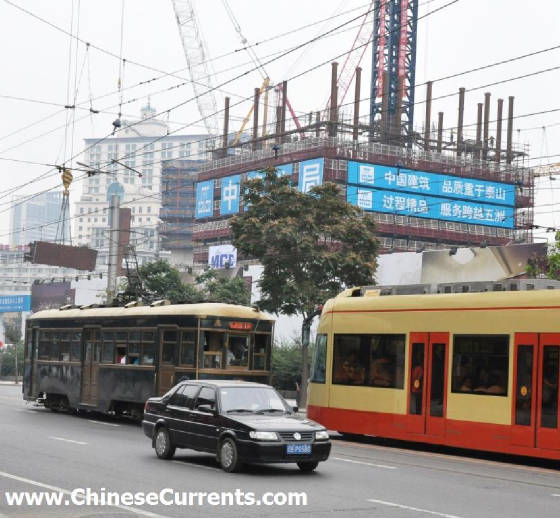
|
| Old tram meets new tram on Dalian's Zhongshan Road |
Stepping up the pace Saturday, 28th
August 2010; Xiamen, Fujian
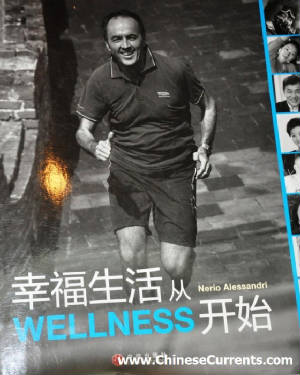
|
| Nerio Alessandri, striding out in China |
“How much is that one?” I asked. Ms Lin, the sales assistant, went to look at the
price tag. “It’s 169 thousand yuan [about US$25,000]” she told me without
blinking.
“What
does it do for that price?” I enquired.
She
took a deep breath, before reeling off a spec list that seemed to have more to do with a sensory experience centre than a
treadmill. While burning off the calories, the Excite – Technogym’s top of the range model
– also enables you to watch TV, listen to your preferred music, and even smell your favourite smell (thanks to its aroma
diffuser).
“Where’s it made?” I asked. Ms Lin handed me a book that had a smiling Nerio
Alessandri – the founder and chairman of Technogym – on the front cover. “Italian?”
I guessed. A nod of the head signalled that I had guessed right.
I leafed through the thick tome to
glean a few facts (and I would later check the company’s website to find out a few more):
The company – the world’s
second largest manufacturer of fitness equipment – started trading in 1975, but it didn’t make a sale in China
until 1996, when it sold two pieces of equipment to China’s National Space Administration, no less, for use in its training
centre.
According to Marco Treggiari, the managing director of the
company’s Chinese operation (reported by Bloomberg), Technogym now has sales offices in Shanghai, Beijing, Guangzhou
and Hong Kong, from where it has sold equipment to about 400 gyms (out of the estimated 3,000 that have sprung up in China)
and 210 five-star hotels. Mr Treggiari has estimated that sales in China this year will increase by up
to 30 per cent to US$18 million.
“Do
you have anything cheaper?” I asked.
Ms Lin took me over to the large selection of Shu Hua treadmills, and pointed to
the SH-5167, the second-best seller. “This one is 2,980 yuan [US$440],” she told me.
“And
the best seller?” I asked.
“That’s
the SH-5198, it sells at 4,986 yuan [US$736]”. Ms Lin didn’t want to say how many, but there’s
no doubt that she sells many times more of this product than she does of the Excite – of which she has sold “four
or five” in the 18 months she has worked in the shop.
Shu Hua, which employs a thousand people, is China’s biggest
producer of excercise equipment. The company, which was established in 1996 – the same year
that Technogym began to blaze its own trail in China – is based in Jinjiang, also in Fujian, less than an hour’s
drive to the north of Xiamen. Jinjiang is a city that has become synonymous with the sports industry:
It is reckoned that something in the order of 20 per cent of
sports shoes sold in the world are manufactured there – made by a significant proportion of the several hundred thousand
migrant workers who have flocked to the city in recent years. And more of more of those Jinjiang-made training
shoes are pounding the treadmill machines made by Shu Hua.
Shu Hua’s sales rocketed after it invested heavily in advertising
campaigns featuring Tian Liang, its “Brand Ambassador”. Crowned China’s “Diving Prince” following
his success at the Athens’ Olympics, Tian Liang was a powerful spokesperson for the brand. Even the
controversy surrounding the SH A5210 model which, according to the Beijing Youth Daily, failed a Shanghai government quality
inspection, didn’t dampen the enthusiasm that had been generated.
Zhang Weilian, chairman of Shu Hua,
speaks with evangelical zeal about the company and its mission: “My dream is for every Chinese family
to have a quality treadmill,” he says. Su Hua’s brand vision is equally lofty:
“Chuanbo jiankang, zaofu renlei [promoting healthiness for the benefit of humanity]”
I was puzzled. I
could understand why treadmill sales in many Chinese cities had sky-rocketed (in the many cities with high levels of pollution,
or extreme temperatures and humidity), but why would a fitness-enthusiast living in Xiamen – one of China’s most
“livable cities” – prefer a treadmill to a run on the beach?
I decided to go to the beach
to find out.
It was late afternoon when I arrived at my favourite Xiamen
beach area, which just happens to be near to the giant “One country, two systems” sign that faces the Taiwan-controlled
islands, a few miles away. The
temperature was in the mid 20s, humidity was bearable, and there was a light sea breeze. In short, lovely
conditions for a jog (I am advised).
However, in the two hours I spent there, I saw only one “runner”.
A man in his 60s who was jogging so slowly that people were passing him at walking speed – that was until I tried
to have a word with him, at which point he found a second wind from somewhere and bolted away like an Olympic sprinter.
It
was then that I realised that I should have listened to Ms Lin, who told me that Xiamen people didn’t like running in
public because “It wasn’t convenient”, which I took to be a euphemism for “They feel a bit embarrassed”.
Whatever
the reason, this is good news for the likes of Su Hua and Technogym. It’s also good news for companies
across the Taiwan Straits. In particular it is very good news for Johnson Health Tech Co, Asia’s
largest manufacturer of fitness equipment, which markets its excercise equipment under four brands: Matrix, Vision, Horizon,
and Johnson. The Taiwanese president Ma Ying-jeou visited the
company earlier this month. He used the visit to impress on a wider audience the benefits of the economic
cooperation framework agreement (ECFA), which is designed to bolster cross-straits economic cooperation by removing trade
barriers and increasing investment. On the 15th August Mr Ma said of Johnson Health Tech:
"One of its products, a portable treadmill that can be folded
and stored under a bed, is innovative and representative of Taiwan's competitiveness".
As far as the likely impact of the
agreement on Taiwanese businesses such as Johnson Heath Tech is concerned, the Taiwanese president, who is a keen jogger, employed
a running analogy: After likening Taiwan's trade barriers to iron shackles that retarded a jogger's stride, Mr Ma went
on to tell the Focus Taiwan News Channel that
"The signing of the ECFA is like
giving that jogger a pair of lightweight sneakers that would help him to run fast”.
However, as with so many of the tangibles that will accrue
from the ECFA, Johnson Health Tech’s stowable treadmill won’t be staring you in the face. For
thousands of satisfied mainland customers, though, it will be a daily reminder that cross-straits cooperation is picking up
pace.
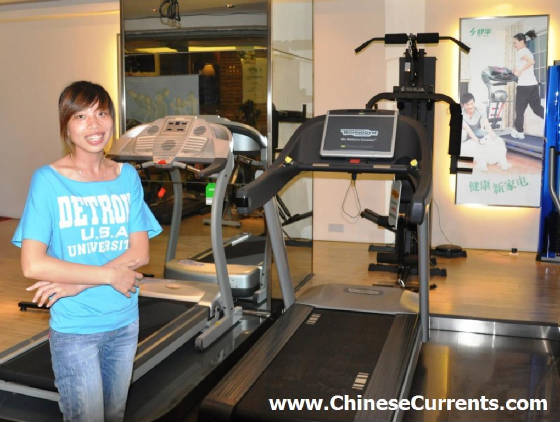
|
| Ms Lin and the US$25,000 treadmill |
Tour of the South Wednesday, 25th
August 2010; Shenzhen, Guangdong
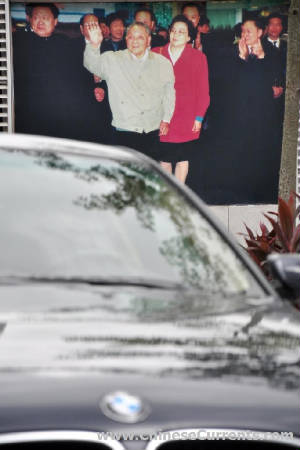
|
| "To get rich is glorious" |
The
state-controlled media called it the Tour of the South.
Or at least they did when they got around to reporting
it, two months after the Tour has been and gone.
At the start of 1992, influential
conservatives in Beijing who were ideologically opposed to the economic reforms that Deng Xiaoping had pioneered in the 80s
– fearing that those reforms would undermine the political status quo – continued to press their foot down on
the economic-development brake pedal.
Deng, believing that “Slow growth equals stagnation and even retrogression”, decided to do everything in
his power to reenergise the reforms. Instead of confronting his critics in Beijing, the 86 year-old master-strategist
climbed on board a train and headed south to the cities that had been the drivers of China’s economic development in
the 80s, where he would urge provincial and local governments to speed up the pace of economic development. His
message was simple: Caution would be disastrous for the country; only ‘boldness’ would result in a bright future.
Or, extending the driving analogy, the message was something akin to: Don’t even think about using the brake,
just put your foot on the accelerator and push it down as far as it will go. The
most significant stage of Deng’s Tour of the South was his visit to Shenzhen, which in 1980 had been declared China’s
first Special Economic Zone (The thirtieth anniversary of the declaration is tomorrow). Shenzhen was the
jewel in the crown of China’s economic development in the 80s, and had very much become the city that developers in
other Chinese cities had looked to for ideas.
And so, at 9am on 19th January 1992, Deng Xiaoping’s train pulled
in to Shenzhen railway station. And the rest, as they say, is history. Over
the years, millions of migrant entrepreneurs have answered Deng’s call to turn Shenzhen into the most vibrant and prosperous
city in China by putting their ‘migration anxiety’ to the back of their minds and focussing, instead, on the carrot
of future wealth.
I am pleased to report that 30 years’ on from Shenzhen’s
opening up, and 18 years after Deng’s world-changing Tour of the South, the Dengesque spirit of ‘fortune favours
the brave’ is as vibrant as it ever was:
“Excuse me. Would you take our photograph?” I
looked around and saw that a young woman was trying to catch my attention by waving a small digital camera in my direction.
I was on my way to a meeting, but had enough time to oblige. She wanted me to take a photograph of her and her friend with a picture of Deng in the
background (poster-size photos of Deng taken during his 1992 visit here are dotted around town). “Where
are you from,” the same woman asked me after I had pressed the shutter release button. “I’m
from Beijing,” I replied. “And you two?” I asked. “We’re
from Nanchang in Jiangxi province. Have you been there?”. They were both surprised to find out that
I had. With the ice now well and truly broken I asked what had brought them to Shenzhen. “I’ve
come here to do business,” replied the woman with the long hair, who was clearly the spokesperson for both of them. “My
mame is Mingming and this is Xixi, she is my best friend – I call her my daughter!”. They both
laughed at the idea (Xixi is 6 months younger than the 20 year-old Mingming). Xixi had to get back to Nanchang
in three days’ time for the start of the new university year. “So
you’re going back to your hometown to study electrical engineering, while Mingming is staying in Shenzhen to make her
fortune,” I joked.
“That’s right!” exclaimed Mingming with a glint
in her eye… “I’ve come here to sell clothes on Taobao.” I am well aware of the popularity of Taobao (often referred to as the “Chinese eBay”) and
was keen to find out how Mingming was going to make money from it. Her plan – to sell Shenzhen-made
clothes and fashion accessories to buyers in Africa – was nothing short of genius: No stock, no overheads, and no risk.
All she had to do was to tailor the stock and the offer to the needs of the target audience she had in mind, and then
develop relationships with the right suppliers (people who would let her post photos of their stock onto her Taobao page).
I surmised that most people she approached would be keen on the proposition, on the basis that – even if they
were already selling on Taobao – the business that Mingming would be generating for them would be incremental.
A true ‘Win-Win’ relationship no less. I congratulated Mingming on her enterprising and well thought through business plan. “But won’t you miss Xixi and your family back in Nanchang?”
I asked.
“Of course I will,”
she replied, “But they understand that I have to grasp this opportunity”. It’s as if Mingming (her name means ‘shining’)
has been inspired by the words of Deng Xiaoping, who said: “An important experience of Shenzhen is the courage to make breakthroughs.
Without a path-breaking spirit, the ‘venturing’ spirit, morale and energy, it is impossible to blaze a trail and
to create a new undertaking.” If you would like to read some more of Deng’s quotes from his 1992 visit to Shenzhen, you are
welcome to click here.

|
| Mingming, Deng Xiaoping, and Xixi |
A breath of fresh air Saturday, 7th
August 2010; Beidaihe, Hebei province
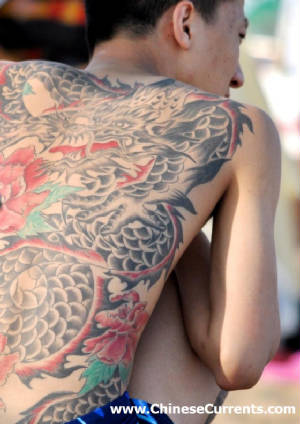
|
| What the boss doesn't see... |
Mao Zedong
loved the place so much that he was moved to write a poem about it. Deng Xiaoping often brought his family
here for their summer holidays.
More than a few state leaders have “grace
and favour” homes here. Many of the big decisions that have shaped modern China have been made here,
not in Beijing (the National Congress pre-meetings were held here for years).
And numerous Beijingers have spent at least a weekend here in the summer and told millions about it.
Of course! It could only be Beidaihe,
a small town on the coast of Hebei province.
If you were the marketing director of Beidaihe’s tourism board, you could be forgiven for thinking
that the job has already been done, and for putting up the “gone for a stroll along one of Beidaihe’s famous sandy
beaches” sign on your office door.
Most visitors who make the 280km trip
from Beijing (in three and a bit hours – if you’re lucky – via the G1 expressway; or two hours via one of
the many scheduled high-speed trains from Beijing’s central railway station) head for the beach. And
today, a Saturday with temperatures here forecast to be ten degrees cooler than in the oven that is Beijing, Beidaihe is bulging
with cars with “jing” number plates and local taxis ferrying Beijingers from the railway station.
The most popular stretch of beach is the Tiger Rocks section,
which costs 8 yuan to enter. Here, people are packed together so tightly that the only sound that can be
heard is the incessant Beijinghua-accented chatter of excited holidaymakers (with a sprinkling of Russian).
If you have come to Beidaihe in search of the sound of the
sea gently lapping onto the shore, then you have chosen the wrong beach. But if, like me, you’re
here for a bucket and spade day with a young child, then it’s the place to be.
And if you’re not quite at the bucket and
spade life stage then, worry not, there are plenty of other beach things you can do with your friends (see photo).
Whatever activity you have in mind, however, make sure it doesn’t involve swinging a cat – there simply
isn’t enough room.
I was determined to get it from the horse’s
mouth as it were – and hear why people, who live in a packed city of about 20 million, endure jammed motorways or a
crowded train to be on a beach that would make a sardine feel claustrophobic. As is often the case in China,
the truth is stranger than fiction:
Mr Hu, a salesperson who worked in Chaoyang, Beijing’s central business district, put his finger
on it: “Here, I really feel free from the pressure,” said Mr Hu, as he took another swig from
the bottle of Yanjing beer (Beijing’s favourite beer brand). “I’m free to do what I like,
when I like, without worrying about work or my clients… I can be myself.”
I mused that the communal sense of this –
thousands of people in the same boat (or, in this case, on the same beach), with most of their clothes off (stripped of the
masquerade of suits and ties… and left with the essence of the “real them” as it were) somehow made the
feeling of “liberation” that bit more intense.
Mr Hu offered me a swig of his beer, as well as inviting me
over to meet his mates from the city. Alas, I had my bucket and spade duty to get back to, so had to decline.
It was
a tempting offer though. As I was walking back through the crowds, I came to the conclusion that wherever
they are, whatever they’re doing, and whatever clothes they’re wearing, there are some things about Beijingers
that will never change: their friendliness and wonderful generosity.
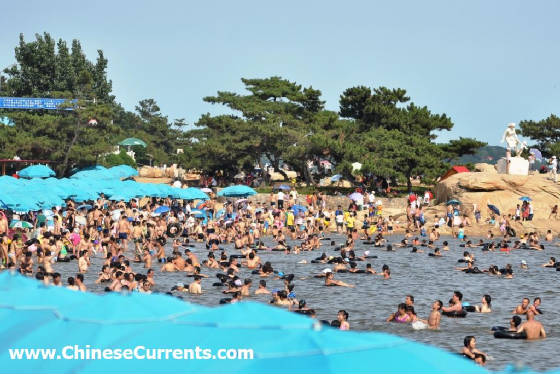
I want one when I grow up Thursday, 5th
August 2010; Beijing
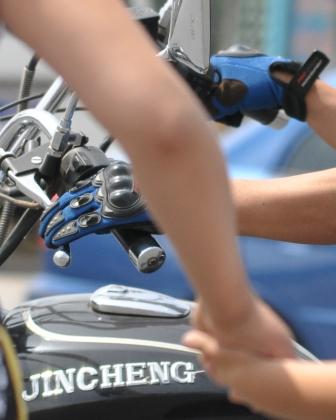
The “walking green man” was suddenly replaced by a static
red one. The woman stopped abruptly. The boy at her side, who had his eyes on other things, continued to walk forward.
The secure grip of the vigilant woman tightened as she pulled the boy back from the road and the menacing cars that had already
begun to speed by. "Look!" scolded the woman, gesturing to the cars that had threatened
to claim yet another young life. The boy was looking, but not at the cars that were now whizzing past his left
ear. He continued looking to his right.
“Beautiful,” said the boy.
“How Cool!”. I glanced over at the subject of his gaze.
He was looking at a motorbike. A big one with extravagant wing mirrors glinting in the sun. I prefer bikes without
engines, so was more impressed by the boy's reaction than by the machine’s presence. "Harley Davidson?" I asked myself. Although,
on closer inspection, it didn’t quite have the “Easy Rider” look of a Harley, which is quite a rare
sight in these parts, but not quite as rare as hen’s teeth (Regular readers of this column – both of you –
may remember that, several months ago, I wrote about a visit I made to a Harley dealership in Beijing.) The boy – who clearly knows more about motorbike
brands than I do – put the record straight: “Jincheng!” he exclaimed. The lights changed, the bike was about to turn left, so I moved back
several yards to be in a position to capture the scene I was witnessing (see photo). Jincheng had been a hot topic several months ago on Chinese blogs
and forums, following the Nanjing company’s participation in this year’s Dakar Rally. The motorsport
event – which moved from Africa to South America (Chile and Argentina) in 2009 – is considered to be the world’s
most gruelling motor race. The move to South America has made it even tougher – not least because five
of the 14 rally stages of the 2010 race passed through Chile’s Atacama desert, which is purported to be the driest place
on Earth. Jincheng sponsored two riders
in the 2010 event – Su Wenmin and Wei Guanghui, both of whom managed to complete the 9,574 km course (despite a number
of mishaps along the way). They finished 75th and 82nd respectively (out of 161 entrants in the class).
The sponsorship of the team is a statement of Jincheng’s global ambitions. According to Dakar.com,
the event’s official website, news from the rally was seen by a staggering 2.2 billion people. As
well as an avalanche of Internet coverage, the 2010 race was broadcast by 80 TV channels to 189 countries. Jincheng
sells 600,000 motorbikes a year, spread across more than a third of those countries, according to its home website.
The company’s country websites – from Africa to South America – trumpet its participation in the
event.
It’s impossible to know how many boys
in Argentina, Chile, Nigeria, or South Africa would react as the boy in Beijing did. Not many I would suspect.
But, there’s no doubt that Jincheng are going out of their way to make an impression and to write a new chapter
in their illustrious history... In
1949, they maintained the aircraft that flew over Chairman Mao’s head during the ceremony at Tiananmen, at which the
founding of the People’s Republic of China was proclaimed.
These days the sound of a Jincheng engine
can be heard by tens of millions of people in 70 countries… as well by the unsuspecting llamas in Chile’s Atacama
desert A source of pride, no doubt, for many of the Chinese boys who, one day,
will be looking to buy the bike of their dreams.

Aftershock Wednesday, 28th
July; Beijing
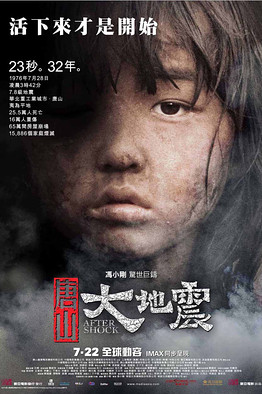
|
| Emotional journey |
“Will you go to see the film?” I asked Ms Zhou. “Probably
not, it would be too depressing,” she told me earnestly. The memories of 28th July 1976 have cut
just too deep. 34 years ago, Ms Zhou’s world was rocked by the earthquake that struck 11km beneath
the centre of the city of Tangshan in Hebei province. She relives the horror of those 20 seconds:
“I remember the time, it was 3.28am. I was jolted awake. First the floor went up and
down [Ms Zhou mimes the violent up-and-down action with dramatic movements of her right arm]. Then I was
bounced from side to side [she jolts her body from one side to the other as if it is being repeatedly bounced off imaginary
walls]. It was impossible to move forwards. I couldn’t even get to the door”. Ms Zhou and her family were among the lucky ones. They were
far enough from the epicentre (about 60 miles away) and, just as critically, they lived in a house that was sturdily built.
The people in the centre of Tangshan were not so lucky. Photographs of the aftermath show scenes
that are chillingly similar to those taken after the nuclear attack on Hiroshima. The Tangshan earthquake, however, yielded
a destructive power (at least 7.8 on the Richter scale) that was 400 times greater than the atomic bomb that was dropped on
Hiroshima, according to the UN Global Programme for the Integration of Public Administration and the Science of Disasters.
The official number of fatalities is 242,419, which is far fewer than the provincial government’s initial estimate
of 650,000 (about one third of the then-population of Tangshan). Ms Zhou
continues her story: “The people at my town’s earthquake monitoring station knew that the earthquake
was in Tangshan. Very soon afterwards, a medical team on their way to Tangshan came to collect my father,
who was a medical doctor. We had all gathered in our garden, well away from the house, when they arrived.
Later that day, at 6pm, another strong earthquake struck Tangshan. We were all so worried
about my father because we knew he would have been right on top of it. That second quake killed thousands
of rescue workers. The second quake also destroyed the bridge that connected my town to Tangshan.
It was a long time before we were able to find out what had happened to Father. At last we learned
that he and his team had survived the second quake. …He was alive and well and still doing his best
to help some of the [estimated 640,000] injured people. When he came back months later, he told us something
about what he had seen. I will never forget those stories.” Of
the countless stories told by the thousands of people who did live to tell the tale, one of those stories is – a generation
later – being told to many millions of people: Aftershock is the story of the Tangshan earthquake
told from the perspective of a survivor whose mother had condemned her to death by deciding to save her brother instead of
her (the mother had been told by a rescue worker that the slab of concrete that was pinning the two siblings down had to be
moved for one of them to be saved, but that the movement of the slab would kill the other). The girl hears
her mum choosing to save her brother but – unknown to her mother – she later manages to escape the scene. It is a story of reconciliation and of hope as much as it is of recriminations
and despair. The film’s critics say that many important questions have not been asked, let alone
answered. The most obvious of which is “Could more have been done to have reduced the death toll?”
Indeed, the film doesn’t touch on any aspect of Tangshan’s earthquake preparedness (or lack
of it). Why, for instance, was Tangshan unprepared when at least one nearby county, Qinglong, had actually
heeded scientists’ warnings that a strong earthquake was likely to hit the region; and went as far as installing its
own measures to safeguard its population: http://www.globalwatch.org/ungp/qinglong.htm Feng Xiaogang, the director of Aftershock, was asked
if he now considers himself a master filmmaker (in the context of Aftershock becoming the most successful film in
Chinese cinema history in terms of opening day box office receipts – the 36 million yuan it grossed knocked Avatar off
top spot). His reply, published on www.sina.com, provides a revealing insight into the dilemma that affects mainland Chinese directors, particularly those who are responsible
for films that focus on important events that have occurred during the lifetime of a large proportion of the film’s
audience:
“I’m not [a master filmmaker].
This is not an era that can produce masters. …Because we [directors] face too many danger points.
…You can’t get too close to these danger points. You can’t just casually cross the stream. You have
to jump from this rock to that rock and carefully try to move forward. …But sometimes there is no
rock, and then you have to make a detour, because, if you just jump into the water, you might drown.”

|
| Tangshan, Hebei province, following the earthquake of 28th July 1976 |
Rebecca makes World Cup debut Friday, 11th June
2010; Xuchang, Henan province

|
| Don't worry it's Dragon Proof |
Xuchang! The final stop on a nine day tour that
began on June 3rd in Taiyuan, the capital of Shanxi province. From there I flew to Lanzhou, the capital
of Gansu province, for a three-night stay. On Monday, I flew to Chengdu, the capital of Sichuan province,
before travelling three hours by road to the prefecture-level city of Mianyang. Then, back to Chengdu for
yesterday’s flight to Zhengzhou, the capital of Henan province, from where I travelled directly from the airport to
the prefecture-level city of Xuchang.
I must admit that when I saw Xuchang
on my travel itinerary, I raised an eyebrow. “Where’s that,” I asked. The
person I asked wasn’t sure. “It’s in Henan province… or, then again, it might
be in Hunan,” was the reply. Their uncertainty made me feel a little better about having no idea
which province it was in. Before I go anywhere “new”, I usually
spend quite a while learning as much as I can about the place I’m planning to go to. However, on
this occasion, other than working out that Xuchang is “not far from Zhengzhou”, in Henan province, I simply didn’t
have time to find out more. So, I’m embarrassed to admit, I arrived in
the city without knowing the first thing about the city. In these situations it pays to go for a walk and to find some local
people to talk to. I met Mr Ma, who was selling fruit near to the hotel I was staying at. “Hi, I’ve just arrived in the city,” I said, “I wonder
if you wouldn’t mind telling me something about the place?” Mr Ma looked at me as if I had
just stepped out of a spaceship. I tried a different approach: “What’s Xuchang famous for?”
I asked. “Xuchang,” used to be an ancient capital,” said
Mr Ma without any hint of pride.
“Great,” I said.
“Where can I see the ancient sites,” I enquired. “There
aren’t any,” said Mr Ma. He shook his head. “No, not a thing.” [On returning to Beijing I would find out that in 220AD Xuchang was declared the
capital of the newly-formed “kingdom” of Wei, one of the Three Kingdoms, which were each ruled by an emperor who
claimed to have the mandate of heaven (the right to rule) by dint of his superior lineage, connecting him to the last emperor
of the deposed Han dynasty. For some reason, after only a couple of years in Xuchang, the Wei emperor moved
his court to Luoyang (also in modern day Henan) – which, unlike Xuchang, does have some excellent ancient sites to look
around. Oh yes, I also found out that modern day Xuchang has a population of 4.5 million. And that the
city is twinned with Ambo in Ethiopia although, with due respect to the city of Ambo, that wasn’t the top of mind answer
when I asked Xuchang people what their city is famous for.] I thanked
Mr Ma for the information and moved into the backstreets of the older part of town to find out more. A
forty-something lady was sweeping the floor of her open-air restaurant. I sat down to have a cup of tea,
and to ask some questions. “Famous for?” Ms Chen repeated the question.
She said nothing for more than a few moments, while she pondered. Then her eyes it up. “Well, my sister works in a hair factory, and I know that’s an important
industry here.” “She makes hair?” I asked.
As soon as I asked it I realised what a stupid question it was. Ms Chen was kind: “No, she makes wigs and hair pieces out of people’s hair.” “So people sell their hair here?” was my next stupid question. “Here and all over China,” Ms Chen said, doing her best not to laugh at my stupidity. I would later find out that the price of human hair in China has increased dramatically
over the past few years (in 1990, people were paid 10 yuan for each kg, in 2007 the price had risen to 550 yuan per kg).
Locally-bought hair has become so expensive, in fact, that Xuchang and other Chinese hair product manufacturers are
increasingly sourcing hair from other countries, such as India, where people are prepared to sell their hair for much less. My appetite whetted, I couldn’t wait to find out just how famous Xucheng-manufactured
hair products really are. I wasn’t disappointed. In fact, I was amazed.
There are more than a hundred Xucheng companies that specialise in hair products that, collectively, employ more than
200,000 people. I was equally amazed to find out that many of those companies have English language
websites. Most of the companies’ names contain either product promises
or women’s names. The range of promises includes “harmony” (Xuchang Harmony Hair Products); “elegance”
(Xuchang Elegance Hair Products); “dream” (Xuchang Dream Hair Products); and “glitter” (Xuchang Glitter
Hair Products). While I’m sure than many people in need of a wig or hair extensions are looking for
“elegance” or “harmony”, there must be those whose primary need is functionality and are simply looking
for reassurance that the extensions won’t fall out, or their hair piece won’t slip down. Enter
Xuchang Dragon Proof Hair Products, which trades as Xuchang Dragon Proof Fashion Limited. Dragon Proof
(www.DragonProof.com) describes itself as “One of
the largest hair products manufacture[s] in China.” Its impressive factory complex, which can be
seen on the video that’s embedded on its website, occupies nearly 100,000 square metres of Xuchang’s Economic
and Technological Development Zone. The company boasts solus funding from Hong Kong investors, assets of
360 million yuan, and a payroll of close to 3,000 people. As far
as companies with women’s names are concerned, there’s a bevy of them to pick from: There’s Xuchang Cindy
Hair Products (not to be confused with the Xuchang Xindi Hair Product company); Xuchang Diana Hair Products; Xuchang Selina
Hair Products; and Henan Rebecca Hair Products, which is based in Xuchang. Rebecca
is by far the most famous of all the Xuchang-based hair product companies. But why “Rebecca”
you may be wondering. Well, Zheng Youquan, who founded the company in 1993 was, it seems, a bit of a romantic.
He chose the name of the company, he says, after being beguiled by Rebecca, the eponymous heroine of a Daphne du Maurier’s novel. Mr
Zheng’s fascination with the name was such that he somehow even managed to get the name incorporated into his address
(Rebecca Avenue, Xuchang). The company also has a hotel in Xuchang. The Rebecca Hotel
of course (see photo). Rebecca, which employs 10,300 people, sold 1.6 billion
yuan worth of hair products last year (using more than 2,000 tonnes of hair) is the only hair products’ company in China
to be publicly listed. It is the world’s biggest wig maker with a 15 per cent share of global market. Its
export volume is twice that of its nearest Chinese competitor. Last year, 61 per cent of its export sales
were in North America, while sales to Europe only accounted for nine per cent of the volume. The nature
of global hair product demand is changing rapidly though. Sales are rising most rapidly in the African market where, this
year’s contribution to global revenue is expected to exceed last year’s 26 per cent. Thanks
to the World Cup of course…
...I’ll be tuning in tonight
to watch the opening match of the competition (South Africa versus Mexico), live from Johannesburg. As
well as watching the football, I’ll be keeping an eye out for one of Rebecca’s wigs, 20,000 of which – in
the national colours of the 32 competing nations – have already been sold in South Africa.
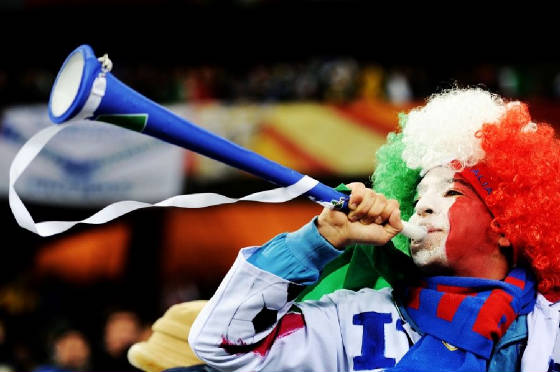
|
| Source: 163.com |
The Catcher in the rice Wednesday, 2nd
June 2010; Beijing, Chaoyang district
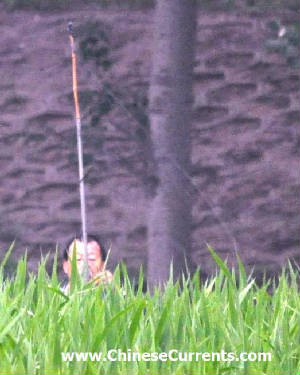
|
| Setting the trap |
I got up at 5.30am and drove down to the Wenyu river,
which forms the border between the Chaoyang district of “central” Beijing and the Shunyi district of “outer”
Beijing. On my regular morning excursions there, I never cross over from the Chaoyang side, as I prefer
to record anything of interest as “seen in central Beijing”. It was a glorious morning:
The sky was cobalt blue, there wasn’t a breath of wind, and many newly-arrived Oriental Reed Warblers, hidden away in
the lush paddyfields by the river, were in fine voice. A beautiful Yellow Bittern, my first sighting of
this species this year, flew out of the rice-bed just in front of me and treated me to an wonderful flypast before it dived
back down to – no doubt – continue its hunt for breakfast. I’ve
been watching and photographing birds in Beijing for 16 years and it still continues to amaze me how rich “central”
Beijing’s birdlife really is. Since the beginning of last year, I have seen more than 100 species
at this one site, including two male Red-Crested Pochards, a species that usually gets no further east than central Asia;
a Bewick’s Swan on its way south after spending the summer on the Russian shores of the Arctic Ocean; a small flock
of Swan Geese probably on their way to Poyang Lake in Jiangxi province; and several Pallas’s Grasshopper Warblers taking
a breather on their long journey from south-east Asia to places perhaps more than a thousand miles north-east of here. Visits to other places in “central” Beijing this year have been equally
rewarding: On one early-spring morning, at Yiheyuan (the Summer Palace) – one of Beijing’s biggest tourist
attractions – I (and numerous passers by) took photographs of some of the 144 swans of three species that had rested
on the lake there (133 Whoopers, 10 Bewick’s, and a single Mute Swan, a very rare visitor this far east).
Chaoyang Park, Beijing’s biggest and busiest park, has continued to delight, with a Siberian Rubythroat, several
Red-flanked Bluetails, and a flock of Siberian Accentors high on the list of memorable birds. Birding in Beijing doesn’t get much better, though, than the morning I enjoyed in January this
year a few miles south of the Marco Polo bridge, where I managed to get some quite reasonable photographs of a flock of Mongolian
Larks and half-a-dozen Pallas’s Sandgrouse, which are usually denizens of the central Asian deserts (Many thanks to
Xiaoming, one of the growing band of very keen and skilled local birders, for inviting me to join him and his friends on what
turned out to be a successful search for these two usually very difficult to see species). But on the minus side: The loss of habitat continues at a frightening pace. My local
patch is hanging on against the odds while, just south of there, land-usage “transfers” have resulted in bulldozers
moving within earshot of the paddyfields. Beijing’s migrant and breeding birds face other perils
too: A few weeks ago, also on the Chaoyang side of the Wenyu River, my wife and I confiscated two boys’
catapults after we saw them trying to shoot birds out of the sky. This morning, in just about the same
place, I saw someone doing something that turned my positive impression of the morning on its head. I watched
through binoculars as a man waded into the paddyfields near to where the Yellow Bittern had landed and proceeded to erect
a long “mist” net, using bamboo poles to support it. Over many years in China I’ve witnessed
many instances of these contraptions causing death and injury. Usually I see the aftermath – the
less marketable birds (the ones that don’t sing, aren’t brightly coloured, or can’t be eaten) are often
left to hang there because the bird-catcher doesn’t want to waste time untangling them from the fine mesh that ensnares
them. This time, I was there before any damage could be done and I was determined to tell the man what
I thought of him and his type. I approached him from the east, with the low morning sun at my back.
Eventually he saw me.
"Hand me the net... now!!"
I demanded. Although not as scary as a gun, the spade he was holding did look
a bit menacing. My demand had clearly fallen on deaf ears because the bird-catcher lifted up the spade
and started walking towards me. Time for either a sharp exit or to stand firm (or at least to pretend to
be standing firm):
"If you don't give me the net immediately, I'm going to call the police," I shouted out in my gruffest, no-nonsense
voice. This was a bluff of course. I could imagine the (short) phone call to the emergency
911 number: "Hello, I'm at the Wenyu River, and I've caught someone trying to catch birds in a mist net... and I need
you to be here... hello... er... hello..."
"Now!!" I repeated. The spade-wielding man continued walking towards me, and then to my great
surprise, not to mention even greater relief, he put up his hands. "Please don't call the police," he pleaded.
With that he ran back to the poles in the middle of the paddyfield, tore down the net, and ran to hand it to me. I was on a roll, so I thought I’d chance my arm at some Lock, stock and
two smoking barrels lines: "I have your photograph," I told him darkly. "If I ever see you in the area
again, then it's all over. Tell your mates that the same goes for them. I come here every day. And no one catches birds in
my manor." With more apologies, and something about he'll become a reformed character from
now on, he jumped on his cycle and rode off.
I looked at the net: standard design...
long human hair... painstakingly knotted together... days of work. 100 yards down the track, I found another
mist net. But no one was attending it. Were they lurking in the reeds (having watched the showdown I've
just described being played out, or was it one prepared earlier by the Catcher I had caught)? I didn't
wait around to find out. I tore down the net – this one was made of synthetic brown thread –
and lined it up next to the one made of human hair. Two scalps for the price of one no less.
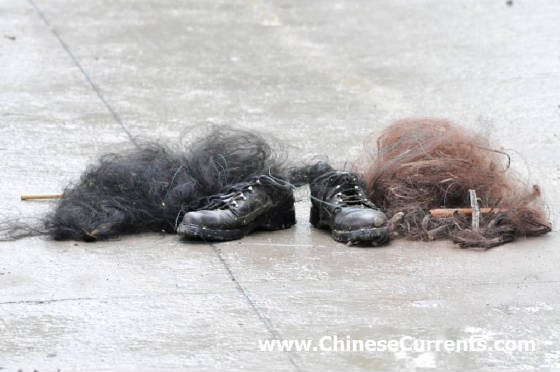
|
| Two scalps for the price of one |
"Better city, better life" Friday, 30th April 2010; Shanghai
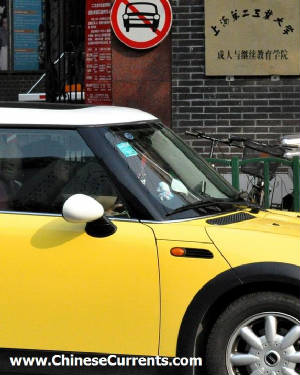
|
| On certain days, not even Minis can zip around |
A few days ago I arrived in Shanghai and took a taxi from Hongqiao airport to Fuxing Park in the centre
of the city. It was a horrible journey of more than an hour that cost a hefty 110 yuan. Previously, the
most I’d paid for the same trip was about 80 yuan. “Sorry,” said the driver, “It’s
the Expo”. This is the first time that the Expo has bee granted
to China. Since its inception in 1851 – when the inaugural event, “The Great Exhibition (of
the Works of Industry of All Nations)”, was held in London – the Expo has been to Asia only on four occasions
(Japan, three times; and once in South Korea). So, there is a palpable sense here in China that this is
a hugely important event that further signifies (less than two years after the Beijing Olympics) that China has taken its
rightful place not only on the world stage, but at the very centre of it. Expo
2010 has been the ongoing “big story” here since, funnily enough, the closing ceremony of the Beijing Olympics.
The millions of local column inches devoted to the Expo have prompted tens of millions of Chinese to set their sights
on coming to Shanghai to see it for themselves. Add to those tens of millions a significant number of foreign
visitors and you arrive at the official visitor projection for the six-month extravaganza: a cool 70 million people (an average
of about 380 thousand each day).
While it would be tempting for people
struggling to get around Shanghai this summer to blame their travel difficulties on the Expo, the truth of the matter is that
– other than the area adjacent to the venue – Expo visitors (the majority of whom will be taking public transport)
are not likely to add much more misery to the “normally” (ie Expo-less) woeful traffic situation in Shanghai.
Traffic congestion because of “sheer weight of traffic” is, increasingly, a fact of life in Shanghai, as
it is in every Chinese city. It’s simply part of the price to pay for the staggering economic development
that has made car ownership an attainable aspiration for more than 100 million people (China overtook the US last year to
become the world’s biggest auto market, with 10.3 million passenger cars sold – 53 per cent more than the previous
year.) So, if it’s not the Expo-visitors’ fault, then just who is to blame
for the horrendous traffic around Shanghai during the past few days? On my (tortuous) way back to the airport I stopped off
at the gates of the Xijiao guesthouse to find out.
I’ve been a regular visitor to
Xijiao – which has the best woodland and lake in Shanghai – for more than a dozen years. It
really is a pleasure to walk around the miles of little paths and to quietly sit in one of the small pavilions – only
a mile or so from the hustle and bustle of Hongxu Lu, but a million miles away from the sometimes quite-maddening crowd (the
grounds are private and the high walls and tight security ensure that the only people I usually see there are gardeners). On a visit to Shanghai two weeks ago, though, I discovered that the gardeners were
not the only people in uniforms. Armed guards from the People’s Liberation
Army (PLA) were positioned on strategic bridges and pathways. They prevented me from getting to the western
half of the oasis, but I was still able to enjoy a pleasant stroll around the eastern side following a very nice pizza at
the Guesthouse’s coffee-shop (you can’t buy tickets to get into Xijiao, but a visit to the restaurant provides
de facto access to the gardens and lake – a one day “pizza pass” as it were). But, earlier today, I realised that security was
on a completely different level. No amount of pleading was going to get me past the PLA captain on the
front gate and his “No entry, refurbishment in progress” sign. This was not a surprise, of
course, because today is the official opening ceremony of the Expo and the Chinese president, Hu Jintao, and dozens of other
heads of state and dignitaries are in town for the event. From the Chinese government’s perspective,
if you’re important, then you just simply have to be on the Xijiao guest list. Mao Zedong started
the fashion by staying there 49 years ago (in 1961). Since then more than a 100 heads of states have been
guests there – including Queen Elizabeth and Prince Philip in October 1986; President George “W” Bush, in
October 2001; and President Obama in November last year. These
days, though, even the most prestigious of establishments have to have an eye for commercial opportunities that can offset
maintenance costs (which, in the case of Xijiao include the staffing costs of an army of gardeners). As
well as offering one of the best pizzas in Shanghai to anyone who wanders in off the street, the venue has also hosted “branded
events” since at least as far back as 2004, when Shanghai Tang hired the south lawn for a Champagne reception, followed
by the “runway” launch of its autumn “nomad” fashion collection. Liu Xiang, who
had just returned triumphantly to China following his 100 metres hurdles’ gold medal success at the Athens’ Olympics
was one of the well-heeled guests that night.
Talking of hurdles, with so many state
leaders here for the Expo launch, and therefore so many cavalcades whizzing around town on cleared roads (which are closed
for several minutes before the arrival of the motorcade), it’s not surprising that getting around town has been painfully
slow. I don’t want to rain on tonight’s parade, but I think it’s only fair to say that
“Better City, Better Life”, the Shanghai Expo’s official theme, should have come with an “Except when
you can’t get a pizza at Xijiao” caveat.
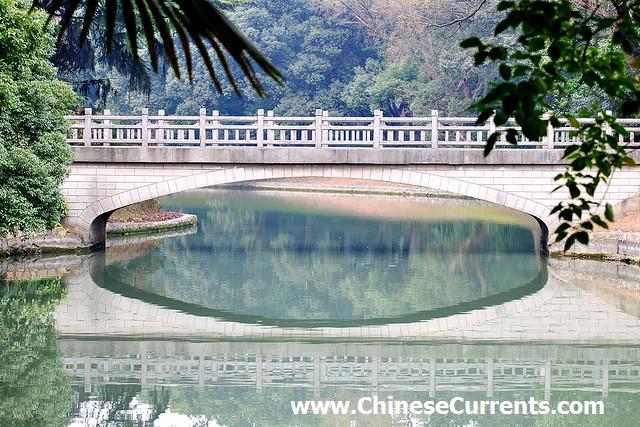
|
| Far from the maddening crowd: The grounds of the Xijiao guesthouse |
Paradise Lost? Sunday, 28th
March 2010; Beidaihe, Hebei
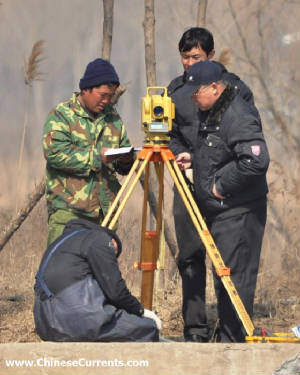
|
| Taking aim... |
I watched the small flock of Teal circle over the “reservoir”,
looking for a place to rest on their arduous northward journey. After circling four times, and failing
to find a deep enough area of water to land on, they flew off. I put my binoculars down and surveyed
the damage that has been done to one of the prime birdwatching sites at one of the world’s most important migration
stop-off points.
Dismayed, I stared incredulously at the dozen or more diggers and trucks that were crawling around on what was, until
recently, the south end of a reservoir that had been teeming with aquatic life and the birds that depend on its richness.
I’m not ashamed to admit that my bottom lip began to quiver as I called a friend to find out what was happening
– after all, this area had been, I had understood, designated a “protected area” (one of only two protected
areas on the entire Qinhuangdao coastline as far as I know). I found out that the official line is that “they
are cleaning the river”. Incredible as this seemed, I was at least given a little hope that
my fears that this precious place is being “developed” are groundless. But even if it is restored
to its former glory (or miraculously improved), the decision to drain the reservoir in the spring – when numerous fresh-water-dependent
birds pass through the area – is breathtakingly heartless. I have been coming to Beidaihe every spring for the past 16 years and have
witnessed a gradual decline in the prime habitat that the migrants depend on. “Gradual”, that is, until this visit,
when on a single day I saw destruction on a bigger scale and faster pace than I have ever seen here before: the
Yang estuary has been dammed; twenty per cent of the bird-magnet little wood near there has been cut away; many of the fish-rich
ponds near the Yang river have been filled in and another housing estate is being built; housing estates are also being built
on the sides of the Dai river; a housing estate now occupies the entire area of the once-fabulous (for birds) “Radar
Marsh”; and 4x4s were driving around the sandflats, the only other “protected area” (at least that’s
what the sign says).
Last year, I attended the International Bird Festival in Beidaihe, where dozens of birdwatchers, environmentalists,
and a few government officials gathered to talk about the importance of protecting this critically-important migration area.
Words are easy, but words need to be judged by their effectiveness. And judging by what I have seen
today, those pleas for help, aimed at the only people who can provide the islands of protection against the relentless tide
of infrastructure development in this country – the government officials – fell on deaf ears. As
they always do. Over the course of 16 years, the only designated “protected areas” I am aware
of have been at the reservoir and sandflats (see above). This really is a crying shame, not just for the birds, but also for
the reputation of Qinhuangdao (the city that is responsible for the administration of Beidaihe). Among
birdwatchers and environmentalists around the world, the Qinhuangdao region is a world-famous location – more than 400
species of birds have been seen within the city’s borders. Every year for the past 16 years, scores
of foreigners made the long trip here to witness one of the greatest migration spectacles on the planet (they wrote about
it, took photos of it, and told others about it, who in turn came to see it for themselves). The city’s
residents know about this and many are quite rightly proud of their city’s international “status”. The city’s government
has, not surprisingly, been keen to leverage this for its own PR. If you read the gushing local tourist
books and look at the local government’s official website (they have an English version of it if you would like to take
a look), you get the impression that the people responsible for the area are acutely aware of the importance of protecting
the natural environment, and that this is a “green haven”. Indeed, this idea of “green,
harmonious development” is something that has been embraced by all levels of government in China. This
policy is not just simply the right thing to do ethically it also (as I have touched on) pays dividends in terms of how a
city is perceived – by its citizens and by the tourists that visit it (domestic and overseas). Only a handful of China’s 700 or so
cities are as fortunate when it comes to the richness of the natural environment and the diversity of the wildlife that falls
within their jurisdiction. In this respect, nature has dealt Qinhuangdao the most marvellous hand.
And this is why the people responsible for running the city have to act now before it’s
too late, because there’s one thing far, far worse than not being famous for something, and that is being infamous
for wantonly flushing that precious something down the toilet. Being known as the city that used to be famous
for birds and birdwatching would not be an advertising slogan to be proud of.
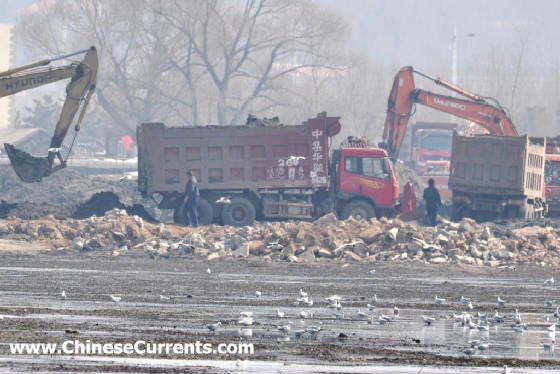
Beware the Ides of March Wednesday, 17th
March 2010; Beijing
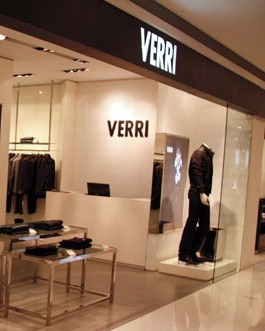
|
| Verri store in Hangzhou, the capital of Zhejiang |
Everyone
(at least those with an Irish connection – no matter how tenuous) knows that today, the 17th March, is Saint Patrick’s
day. I, for one, will be having a pint of Dublin’s own Liffey Water tonight to toast the Great Saint.
I wonder, though, how many people know what is significant about the 15th March? The anniversary
of the murder of Julius Caesar (44BC)… yes indeed. The anniversary of the opening of Selfridges in London (1909)…
correct, but get a life. Maine admitted as the 23rd state of the USA… impressive. Commemoration
of the Holy Martyrs Agapius and his seven companions… score 50 bonus points (but only if you didn’t have to google
or baidu it, as I did). But how many people – hand on heart – know that the
15th March is also World Consumer Right’s Day? It was the former president of the USA, John F. Kennedy,
whose speech, delivered on the 15th Match 1962, inspired the movement. He said: “Consumers
by definition include us all. They are the largest economic group, affecting and affected by almost every public and private
economic decision. Yet they are the only important group… whose views are often not heard.” But
if you think that, thanks to JFK, 15th March is the day that the eyes of the world’s media organisations focus on the
issues affecting the consumer and, in so doing, expose the manufacturers and marketers whose standards fall short of what
the consumer is entitled to, then think again because World Consumer Right’s Day was largely ignored. Except,
that is, here in China, where it was embraced with open arms not to mention a gleeful rubbing of the hands. On
hearing this, if you are thinking that “Consumer Day” was perhaps used as an opportunity to remind all manufacturers
that consumer interests must always come first (with the public’s health and safety at the top of the list of a company’s
responsibility), then think again. Instead of using the day to urge companies to re-double their efforts
to guard against the kind of systemic failings that were, for instance, exhibited by those found guilty of manufacturing and
selling contaminated milk products, the big guns of the Chinese media took aim in a different direction. The
People’s Daily, CCTV, the China Daily, and numerous web portals all had a go at one section of the vast China marketplace:
foreign brands. The People’s Daily headline, “Tests reveal foreign brands’ quality
flaws,” was intended, with a single brushstroke, to tar as many foreign brands as possible. Their
scoop is that “International brand-name products, once hailed in China for their high standards, were under the
spotlight Monday, World Consumer Rights Day”.
The articles goes on to say that, “Results from a
two-month long sample quality inspection by the Zhejiang Administration of Industry and Commerce (ZJAIC) showed imported clothes
produced by 30 internationally recognized brands from 11 countries and regions, including Versace of Italy and Hermes of France,
were below regulation standards. A total of 48 out of 85 batches of clothes were faulty, with just 43.5
percent meeting the standard.” The report highlights a litany of shortcomings, including “excessive
formaldehyde” allegedly found in Verri jeans. I would have thought that any level of formaldehyde
would be a worry, but “excessive formaldehyde”, according to the local media, can cause skin irritation and even
cancer. So much for me thinking that the biggest danger faced by jeans-wearers is an increased susceptibility
to groin strains.
Interesting that the two-month long inspection process should be concluded just in time for the results to be announced
on World Consumer Right’s Day. Interesting that the ZJAIC has a track record of “exposing”
the failings of foreign brands (“Through random inspection, we intend to warn consumers about blindly trusting foreign
brands, which have many problems," said a spokesman of theirs). Interesting that Zhejiang is one of China’s most
important manufacturing bases for garments destined for export. Interesting, also, that Chinese-manufactured
clothing has been under the spotlight of late because of receiving countries’ quality concerns. Chinese
academics were wheeled out from all points of the compass to voice their shock, horror, and indignation at the arrogance of
"foreign brands". For instance, Yu Minggang, professor of Brand Marketing at Shanghai Jiaotong
University seethed: “It is high time foreign brands stepped out of their shrines of worship” (presumably so they
could be stoned by an angry mob of outraged consumers). Marco
Brugognone, partner at Verri, was having none of it. He told The Wall Street Journal that he was "very
surprised" to hear of the findings, suggesting that the pair of jeans that the Zhejiang authorities had claimed contained
“excess formaldehyde” might well have been a fake pair. If that turns out to be the case, then
Zhejiang – which is one of the centres for the counterfeiting of foreign luxury clothing – would have a generous
amount of egg on its face. Prior
to the Zhejiang incident, the China Daily, in a separate (?) attack, published a glossy “name and shame” colour
page, with the headline: “World Consumer Rights Day special: Focus
on int'l brands in China.” Sprite was one of several brands in the dock. The headline
next to the bottle of Sprite reads: “Second victim to claim Sprite poisoning in Beijing”. The story opens with:
“A middle-school student has become the second person in Beijing to get mercury
poisoning after drinking a can of Sprite in less than three months.”
This is far more serious than the charge that Verri jeans contain “excessive levels” of formaldehyde, or
at least it would be if it were true. I clicked through to the story of the first alleged mercury poisoning
incident, which had been widely reported as the fault of the manufacturer, only to find that the man had, according to the
Beijing News, admitted to injecting the mercury in to the bottle himself – rendering the China Daily’s story misleading
at best. That’s why it’s hard to take
these “There’s a wolf!” reports at face value. For whatever reason or reasons, the media here seem to have
declared open season on foreign-owned brands, whose shortcomings (imagined and real) are regularly and
unfairly positioned as an affront to China and Chinese people. Whatever the agenda, the stoking up of the
“us” versus “them” age-old fears and prejudices does no one any favours, least of all the Chinese
consumer whose rights they purport to be protecting.
If you are managing a foreign-owned brand in China, this is a time for extra vigilance and to redouble your quality-checking,
review your suppliers' operations, and re-examine your distribution chain. In other words, beware the Ides of March.
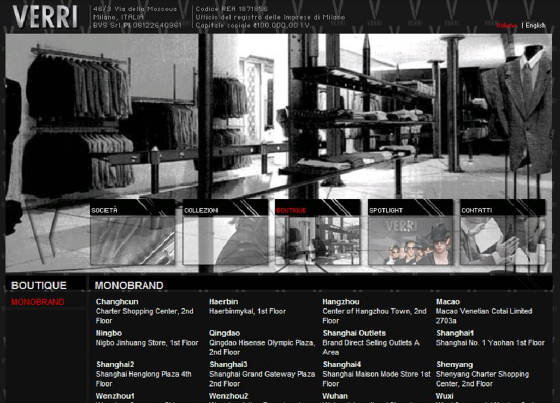
|
| Verri in China |
Beastie Boy Tuesday, 16th
February 2010; Western Yunnan
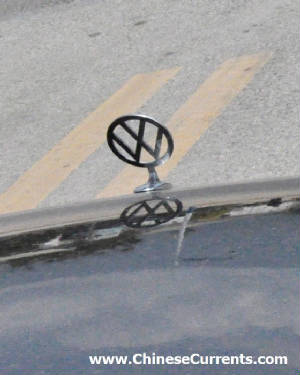
|
| The Zhou's VW on the road in Yunnan |
The plan for today was to hike over the Gaoligongshan mountain range
to Tengchong. The 26 mile route follows the mountain trail known as the Southern Silk Road, and ranges from 1500 metres to
3,600 above sea level (masl) and down again to 1,800 masl. Unfortunately (?) the weather yesterday up top was poor. Looking up from about 2,400 masl
I had seen that thick cloud was enveloping the mountain tops and fresh snow had fallen. Not ideal conditions for a walk which,
even on a good day, would be a test for my endurance. Walking the same distance as a marathon is one-thing,
but doing so while climbing up two vertical kilometres, to about the same altitude of Lhasa, across the backbone of one of
the wildest mountain ranges in China – while carrying a backpack – is quite another. And so, at the last minute, I changed the plan and hastily arranged for a truck to take me to Tengchong
and for Mr Zhou to pick me up there in his “large, black VW”, on the Gaoligongshan side of town. From
there he would drive four hours to Nabang, in far western Yunnan. Arranging anything
in this part of the world can be a lottery at the best of times, but I had struck lucky. The Gaoligongshan
driver had nothing planned for the day; and the Tengchong driver, Mr Zhou, was only too pleased to get a long, money-making
fare. I first met Mr Zhou last year, in March, when I had taken his battered taxi from
Tengchong airport, also to Nabang. Several days later, for the return leg, he’d swapped his well-used
local-brand taxi for a large, shiny, black, and very comfortable VW sedan. The car attracted more than
a few admiring glances in the border town, where rickshaw-taxis are the only taxis in town. “New Car?” I asked. He told me that he and his wife ran the taxi business
and that she usually had the VW, but because I was now an “important customer,” she had suggested they swap for
the day. Mrs Zhou, it seemed, called the shots when it came to their business affairs. Mr
Zhou’s mobile phone was even answered by his wife, who arranged his day’s fares for him. And so I wasn’t in the least bit surprised when, yesterday, I had dialled the entry on my Nokia:
“Mr Zhou VW, Tengchong,” and she had answered “his” mobile phone. The promise of
a pleasant drive in the air-conditioned, spacious VW, was the factor than had compelled me to call the number.
I had spoken slowly and clearly to make sure that there would be no misunderstanding: “So, the large, black VW
I rode in last year would definitely be there a 9am,” I confirmed with Mrs Zhou. I was taking no
chances because, in this part of China, where bone-shaking journeys and breakdowns are the norm, the VW brand-name stands
out like a beacon. With group sales in China totalling 1.4 million units in 2009 – a year-on-year
increase of 37 per cent – I am not alone in pinning my transport-hopes on the tried and trusted VW badge. The bone-rattling pick-up truck, which I had hired for the first leg of my journey,
left at 5am for the four hour drive (the driving distance to Tengchong is 6 times further than the walking distance). We travelled
in darkness for most of the trip. Progress had been a little slower than I had anticipated, so at about
8am I called Mrs Zhou to say that I may be 5 or 10 minutes late at the rendezvous point. “No problem,” she reassured
me. At 9.05am – five minutes’ late – I arrived at the swap-over point
on the outskirts of Tengchong. I said goodbye to my Gaoligongshan driver and hello to a smiling Mr Zhou. I
looked around for the promised VW-badged car. I then noticed that Mr Zhou had his moped with him.
“Where’s the car?” I asked.
“Mashang lai!”
he said with a serious look.
Nothing annoys me more than being told
that something is coming on a horse. That’s the literal meaning of mashang. It’s meant
to be reassuring and to conjour up an image of someone galloping towards you at breakneck speed, who would arrive in moments.
I enquired about the horse’s progress. It transpired that Mr Zhou’s wife had the car (to squeeze in an
extra customer before picking me up). After 20 minutes, my patience was wearing a bit thin. I called Mrs
Zhou, who told me that she was still galloping towards me and that she would be with me in, guess what, no more than another
20 minutes. I’m afraid this was the last straw. I had got up at 4.30am to be here for 9am. I told Mrs Zhou what I thought about her and her husband’s shoddy service,
and told her to take her time as I would not be waiting for their horse, even though it was a thoroughbred. Although this made me feel better, this probably wasn’t a sensible thing to do, as I had to make
my own arrangements for what was a less than straightforward journey. But I didn’t care, the principle was worth suffering
for. I marched across to the
other side of road and waited for a taxi. After five minutes, I hadn’t seen a single one. Then I saw an empty taxi driven
by a 60 something year old woman. Elder Sister Wang looked surprised to see me, but stopped nevertheless. “Where are
you going?” she asked. I told her.
“That’s crazy,” she
laughed, “No ones goes that far west!” In fact, it’s impossible to go any further west as my destination
abuts the border with Burma, one of the most dysfunctional countries on the planet. After
two minutes of discussion, I had persuaded her to take me half way; and after realising she was a remarkably good driver –
in fact one of the best I’ve seen in China – I renegotiated for her to take me all the way (and to pick me up
in five days' time). Happy with the deal, Elder Sister Wang dropped down to third gear, breezed past a convoy of bread
vans that were struggling to negotiate the pot holes on the dirt track, and raced towards the border in her battered local-brand
taxi, which had suddenly risen several places in my hierarchy of brands. Isn’t it strange how one’s observations
and experiences of a brand’s owner or user affects brand perception.
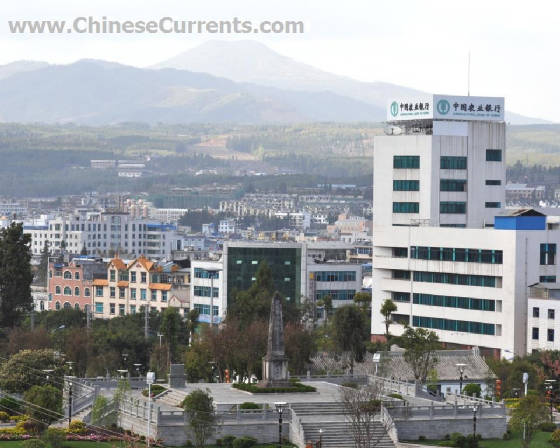
|
| Tengchong, Western Yunnan, an ancient and modern meeting point |
Avatar vs Confucius Friday, 22nd January
2010; Chaoyang, Beijing

I went to
watch Avatar today. In the interests of consumer research of course, not because it has been touted as the best film-experience
ever (although, I have to say, the hype is well-deserved). I was expecting a long queue for a ticket
and fully prepared to have to come back another day.
But much to my surprise, only half the tickets for the next showing had been sold. Then again, it was the Friday
matinee, and they were charging 120 yuan (more than ten English "quid') a ticket. I donned my 3-D glasses and settled down alongside 100 or so others to
watch the film of the decade (okay, so the decade is only a few weeks old, but it's certainly going to be a hard act
to follow). "What did you think of
the film?" I asked a young couple on their way out of the theatre.
"Amazing, it's the best film I've ever seen," said the mid twenty-something man. His partner agreed, "Fantastic!"
"What about the story?" I asked.
Both of them agreed that it was also a great "love story".
"Will you watch the Confucius film," I enquired. "I don't think so," said the man looking across
to his partner for confirmation, which was quickly forthcoming in the form of a shake of the head. These comments support the conclusions I had drawn after reading various postings
on Internet bulletin boards: One, the
notion that Avatar is being pulled from screens across China (tomorrow will be its last showing in 2D form apparently) because
the censors worry that it will remind people of "forced evictions" (something of a political hot potato in
recent years here) is way off the mark, although it does make for an interesting storyline. Two, the decision to give the locally-produced film about Confucius
a free run in the lead up to and during Chinese New Year (a bumper time for cinema), whatever the motivation in pulling Avatar
to make room for it, is likely to back-fire. How
many of those who were thinking of seeing the film in 2D (cheaper and more accessible in many parts of China than
3D) will, I wonder, blame Confucius for being denied the pleasure. Not good for that film's prospects, nor for
the Sage's public relations for that matter.
Lots of the high-profile foreign media have already picked up this story
and most are convinced that the decision has been politically-motivated. For what it's worth, I am far from convinced
that this is the case. No
matter who is right, the stage is literally set for Confucius to come riding into town. The problem is that
the film is, according to many who have seen it, a bit of a yawn.
A bad film is a bad film, whichever way you look at it. Or, more likely the case, you don't look at it. "See this film because there's nothing else to watch"
is not and never will be a compelling reason to make a trip to the cinema. Which brings me on to my
conspiracy theory... This revolves not around politics, but the far less newsworthy subject of box-office takings. Let's
do the sums: Avatar is the biggest grossing film in China to be sure: according to Fox, the film has already grossed
US$76 million here. But, it is the relatively small number (about 900) 3D cinemas that have accounted for
the lion's share of that (US$49 million). Not surprising really, the word is already out that you just have
to see Avatar in 3D. And the decision-makers aren't about to kill the goose that lays golden eggs this big.
Many people who don't or can't see it in 3D, wouldn't have gone to the cinema to see the 2D version anyhow.
Why would they, when they can buy a knock-off DVD for less than the price of a small bowl of popcorn. The
problem for those responsible for the Chinese cinema industry is, this is also far less than the price of a cinema ticket
for Confucius.

|
| James Cameron promoting Avatar in Bejing (part of the film was shot in China, at Wulingyuan, Hunan) |
Trouble on the farms Friday, 15th January
2010; Chaoyang, Beijing

|
| Front page of Chinese Currents on Flickr |
Farm 3 and
farm 5 to be precise. So far, farms 4, 2 and 1 are trouble-free.
If all of this sounds a little bizarre, I know
how you are feeling. This morning, I received a note on my Flickr account from someone
in China who also has "farm trouble".
He or she had added a comment to the front page of my photostream. Instead of congratulating me on getting
a shot of the very elusive male Temminck's Tragopan, which I had taken on my recent visit to Emei Shan (previous article),
the note simply said:
“OK, so you've got the same problems as me: farm3 seems to be blocked since the start of this week.”
I'm a keen Flickrerite, and thought I was fairly
conversant with the site’s shorthand, but I had no idea what a farm was. A quick trawl of the Internet and
Flickr's own discussion groups gave me the answer: A farm is a Flickr server. All of the many millions of photos that
are stored by Flickr are loaded on to one (of five) of then. Farms 3 and 5 are the ones that are currently used.
Oddly, except for the photos on my front page, all of my photos on these two farms have been replaced with blank boxes.
Older
photos that were loaded on to farms 4, 2, and 1 can still be seen. Farm 4 was used as recently as three months
ago. I checked the URLs of photos going back to 2007 and found that both farms 1 and 2 were in commission that year. This poses more than a few problems
for me. Not only can I (and other Flickr members similarly afflicted) not see the majority of recent photos
on my Flickr account; the “photostream” and “wild water” sections of this website have also been badly
affected – because I link them via html code to the photos that reside on the Flickr farms: There are white spaces where
farm 3 or farm 5 photos should be, while farm 4 photos can be seen (right click on the photo or empty space and you can see
which farm it’s on). Wonderful! So,
my long-suffering visitors from China (both of them) can’t see most of my photos and none of my videos (which are linked
by html to You Tube, which has been blocked here since March of last year). By the way, in case you weren’t
aware, joy of joys, Facebook and Twitter are also blocked (find out more about The Great Firewall of China by scrolling down to
my 8th August 2009 article, “Watch with Mother”).
More digging unearthed an unexpected and somewhat chilling twist: The problem is, it seems,
confined to China Unicom subscribers. Subscribers of China Telecom, its main competitor, are reportedly unaffected. A novel way
to build your brand and develop close relationships with your customers to be sure. Conspiracy theories are already circulating.
One user suggested that the Flickr mail he received just after the problem started, offering him a VIP membership of tuhigh.com,
a photo sharing site that is a Flickr look-alike (except you can see all the photos), was proof that this was an attack prompted
by commercial interests.
I tried to find out who owns Tuhigh, thinking that this may be significant, but my searches drew a blank. More
likely, there is no conspiracy and Tuhigh is simply spamming China Flickr members opportunistically. Everyone has his or her theory about why this is happening, but not one person
(of the dozens who have commented on the Flickr discussion page) believes that Unicom is suffering technical problems.
As for my assessment of the situation: What I do know is that this is a different
kind of blocking (Flickr was blocked last year for a week, following certain events in the far north-west). But that
was an old-fashioned site-name URL blocking (you couldn't see the site at all). This time round you can at least (and
it's a small comfort) see all of the comments and text on the website, and you can see many of the older photos. I also know that the problem
started three days ago – the same day that Google announced their revised China strategy Coincidence?
I doubt it.
Interestingly, there has been no comment from Yahoo (the owners of Flickr) in respect of the problems its
Flickr users are experiencing here. Following their declaration of support for the principle that
Google is fighting for, and the public denouncement by their partners Alibaba (which runs Yahoo in China) that publishing
this statement was a "reckless" act, they are probably thinking that they have said enough – for the time
being at least.
After all, there are still three farms that have, as yet, not being visited by the wolves. Not to mention the five farms that are
on the higher ground that is owned by different landlord.
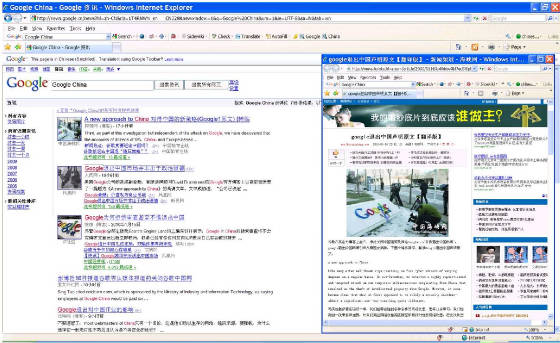
|
| The front page (and top story) of google.cn |
New Year's Day on top of the world Friday, 1st January
2010; Emei Shan, Sichuan
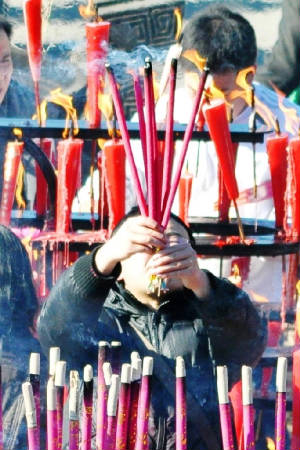
|
| Praying for a happy New Year |
It had been a difficult climb, but well worth it. I had set off on the early morning of the 30th. It took me an entire
day to get to Hongchun Monastery, where I spent a ridiculously cold, damp night. The following day, the climb grew steeper and the weather colder.
It was snowing heavily, and visibility was down to fewer than 50 yards. The thick ice had made
the path treacherous. Thankfully, a man in a
small hut at about 2,000 metres above sea level was selling metal cleats (as well as Dove chocolate). He tied the contraptions to my
boots (my hands were far too cold to do this), and miraculously the metal spikes were able to grip the
ice and I was able to trudge onwards and upwards, arriving at a small hostel near to the Greeting Gate just as the light was
fading. My clothes were soaked with sweat, and there was nowhere to dry them. The food in the small restaurant
next to where I was staying was appalling and the beer was far too cold to drink. I got in to the damp bed and looked at my watch.
It was 11pm: the last hour, of the last day of the last year of the decade. I fell asleep shivering, but nevertheless
despite the hardship, I was happy to have got this far in two days – 50km from where I had started and 2,000 metres higher. Only another 10km and 500
vertical metres to go. I
had to wake up the receptionist to check out. I was keen to continue my walk up the mountain before sunrise. Not
that I had seen any sun during the previous three days.
Then something incredible happened.
I had been walking for an hour and could sense that the sky was brightening in the east. I looked in that direction
and then I saw them. The first sun rays of the year (decade!) were filtering through the low cloud. Then, unbelievably, I saw the
sun rise above the sea of low clouds. I watched in awe as the orb became brighter and freed itself completely from the
clouds that seemed to be doing their best to hold it back. My heart was soaring. What an incredible experience.
I looked around for someone to share my joy with, but I was on my own (no one in their right mind would have got up that early
and climbed in near-darkness).
Then I realised that it was my Chinese birthday! (Every one in China ages a year on January 1st.) This New
Year's Day was even more auspicious as my age has reached a round number. Another reason to celebrate. Enthused, my pace quickened and within
the hour I had reached the summit. The jinding [golden summit] was indeed bathed in an ethereal golden
light. The views from here had to be seen to be believed. Then they started arriving. First a few, then a few dozen, then hundreds, then a continuous stream of people
climbing the steps to join me at the top of the mountain. The day trippers had arrived! They hollowed, they whooped; they threw snow balls;
they punched the air in delight.
Their exuberance was contagious. I found myself grinning madly as one, then two, then three people asked if they could
have their photo taken with me.
"Where are you from?" I asked one of my new friends, who was in his mid-twenties. "From Beijing!" Mr Zhou gushed. "I
just had to come to Emei for New Year's Day. It's such a holy place!" I could sense that Mr Zhou thought that a visit here,
to one of if not the holiest mountains in China, was karma-boosting. "Are you a Buddhist," I asked him half-jokingly. "Not really," he told me, "But I don't not believe!". I smiled at his pragmatism,
otherwise known as agnosticism I suppose.
I talked some more with Mr Zhou, who simply shook his head when I told him that I had walked all the way up the
mountain (taking the longer, south-eastern route).
"No one climbs all the way up," he laughed. "Didn't you know you could take
a bus most of the way!?"
I played along. "You're telling
me I've taken three days to do something I could have done in two hours," I said with as earnest a face as I could muster. Mr Zhou looked uncomfortable, thinking
that he had upset me. "I'm
only joking," I laughed. Of course I knew about the bus, but I thought the walk would be more enjoyable! "What do you do for a living,"
I enquired. 'I'm in IT; I'm responsible
for my company's computer system".
"And what are you hoping for in 2010," I asked. Mr Zhou thought for a moment, before telling me: "I just want to keep moving upwards." I knew exactly what he meant.
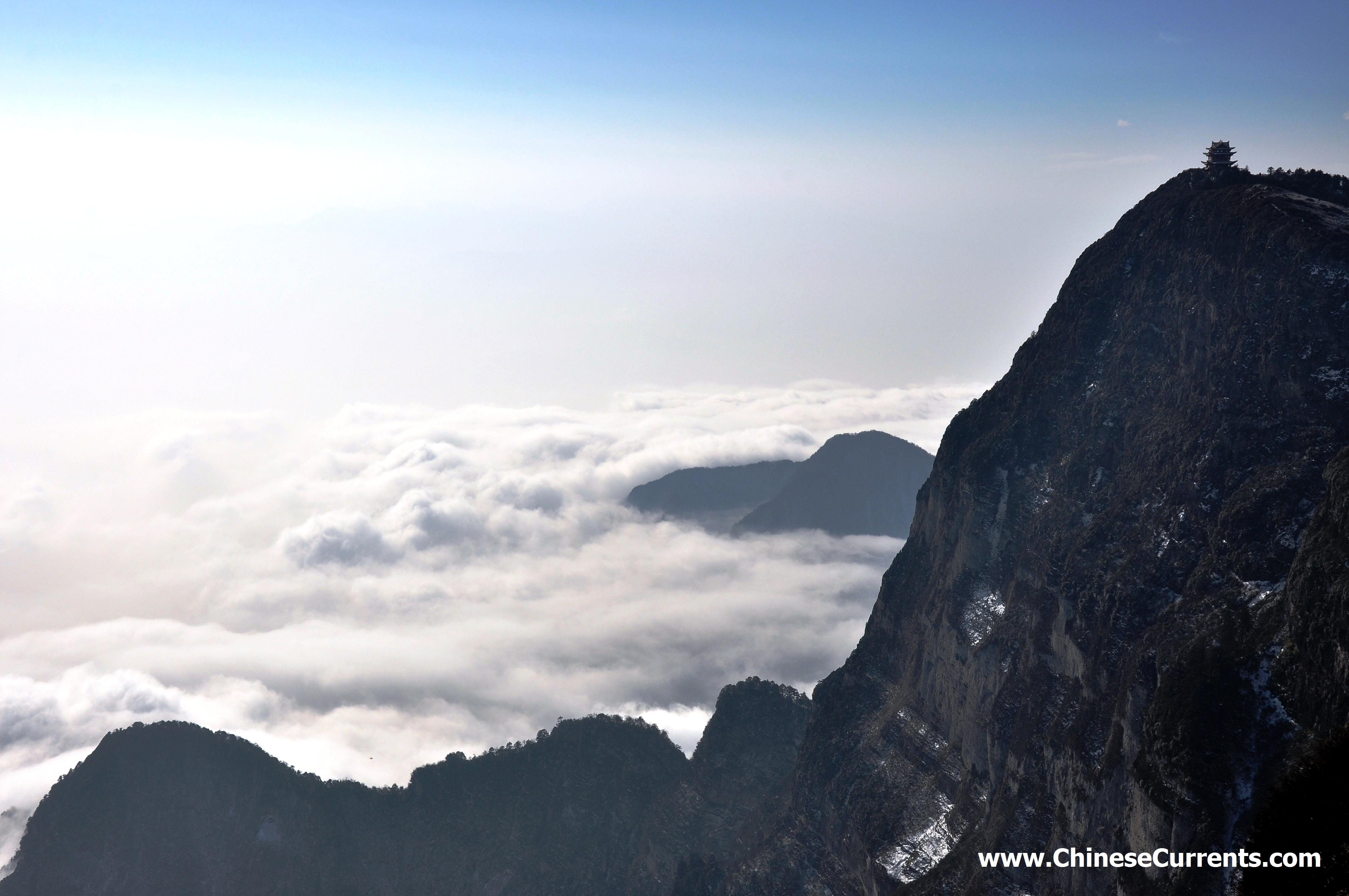
|
| Dawning of a new day, new year, new decade |
|

